Hyundai->ke201 is slightly lacking when it comes to its crossover->ke288 and SUV->ke145 roster, which puts a lot of pressure on the Santa Fe->ke1023 to scoop up as many sales as possible in this increasingly popular segment. As such, Hyundai is wisely ramping up production, adding the two-row Santa Fe Sport to its plant in Montgomery, Alabama. More inventory is good, but just as important is an edge against the competition. In order to keep the Santa Fe as fresh as possible, Hyundai just announced a new mid-cycle update for the crossover at the 2016 Chicago Auto Show.->ke225 On the docket this time around is a new look, new interior equipment, and new technology for safety and convenience.
The Santa Fe first debuted in 2001 as the automaker’s first-ever SUV, and a second generation followed five years later. The model’s current third generation debuted in 2012, and given the widespread circulation of spy shots->ke166 that preceded the update announcement, there was little question as to what Hyundai had planned for Chicago.
While the update may appear rather mild at first blush, Hyundai says it changed almost 350 individual parts on the Santa Fe Sport – roughly a quarter of the car. Read on to see exactly what that means.
Update 05/18/2016: The 2017 Hyundai Santa Fe Sport has received a Top Safety Pick+ Award from the IIHS after undergoing routine crash testing. Check out the Safety section below for more details.
Continue reading to learn more about the 2017 Hyundai Santa Fe.
2017 Hyundai Santa Fe
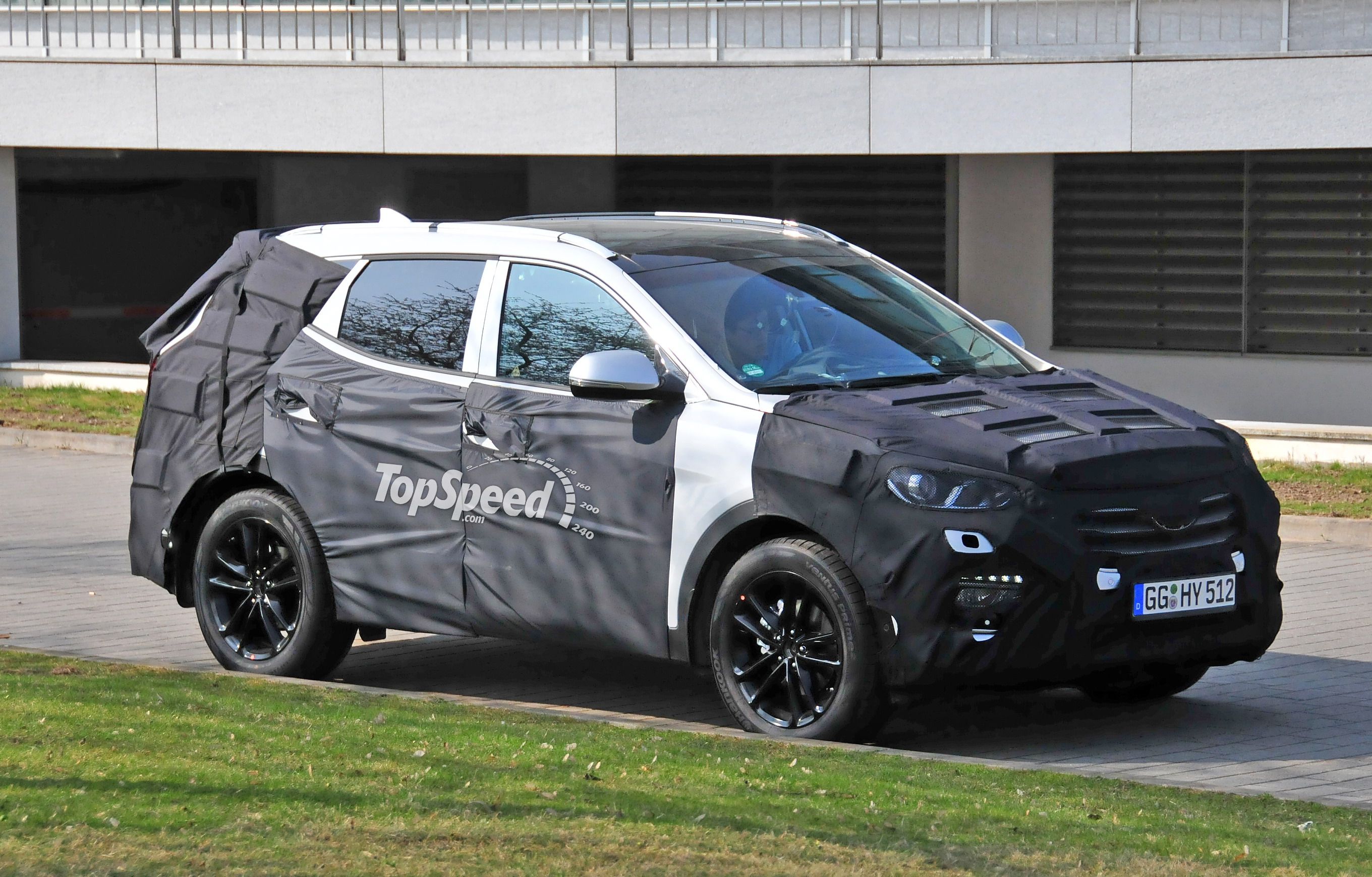

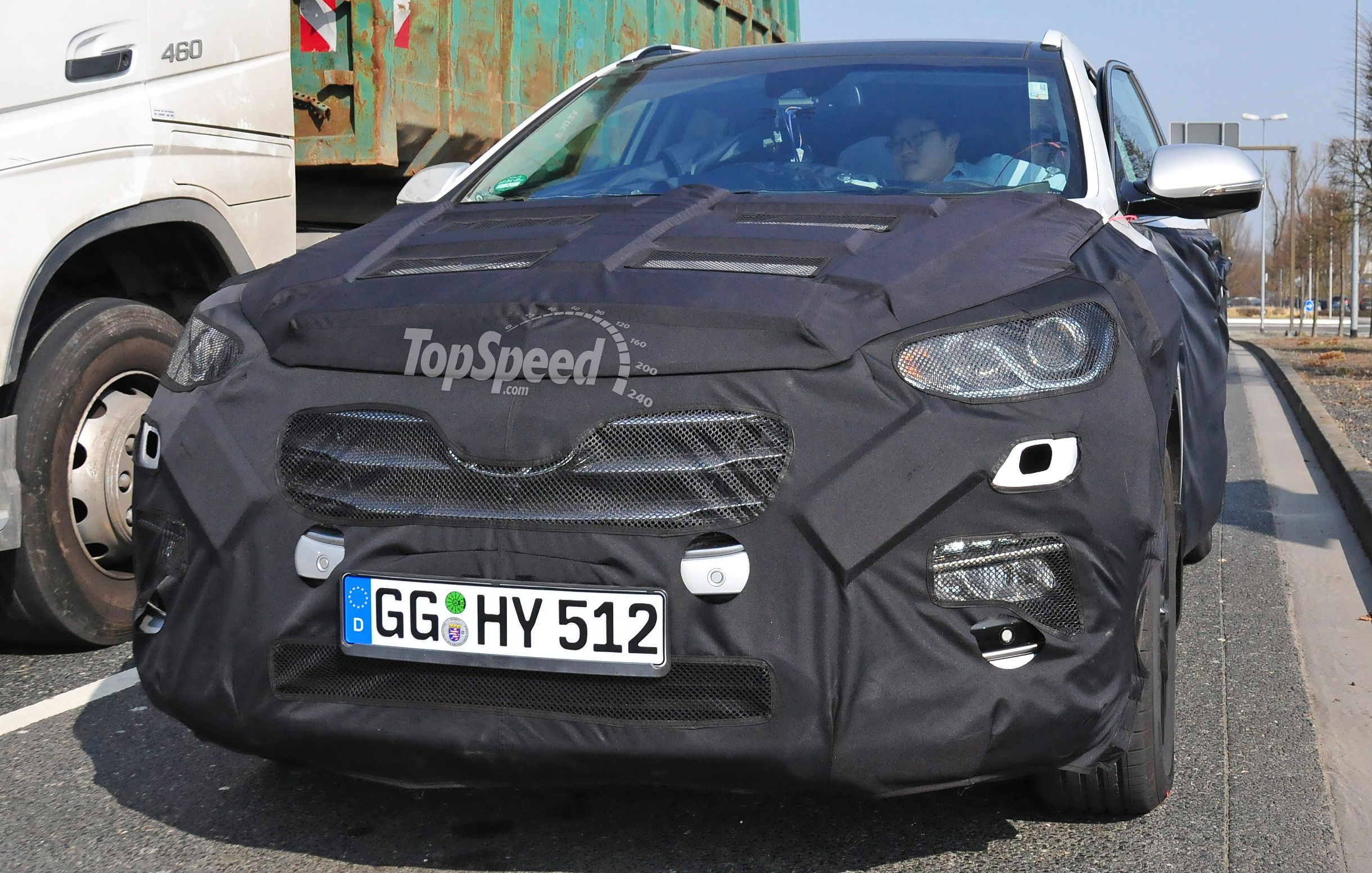
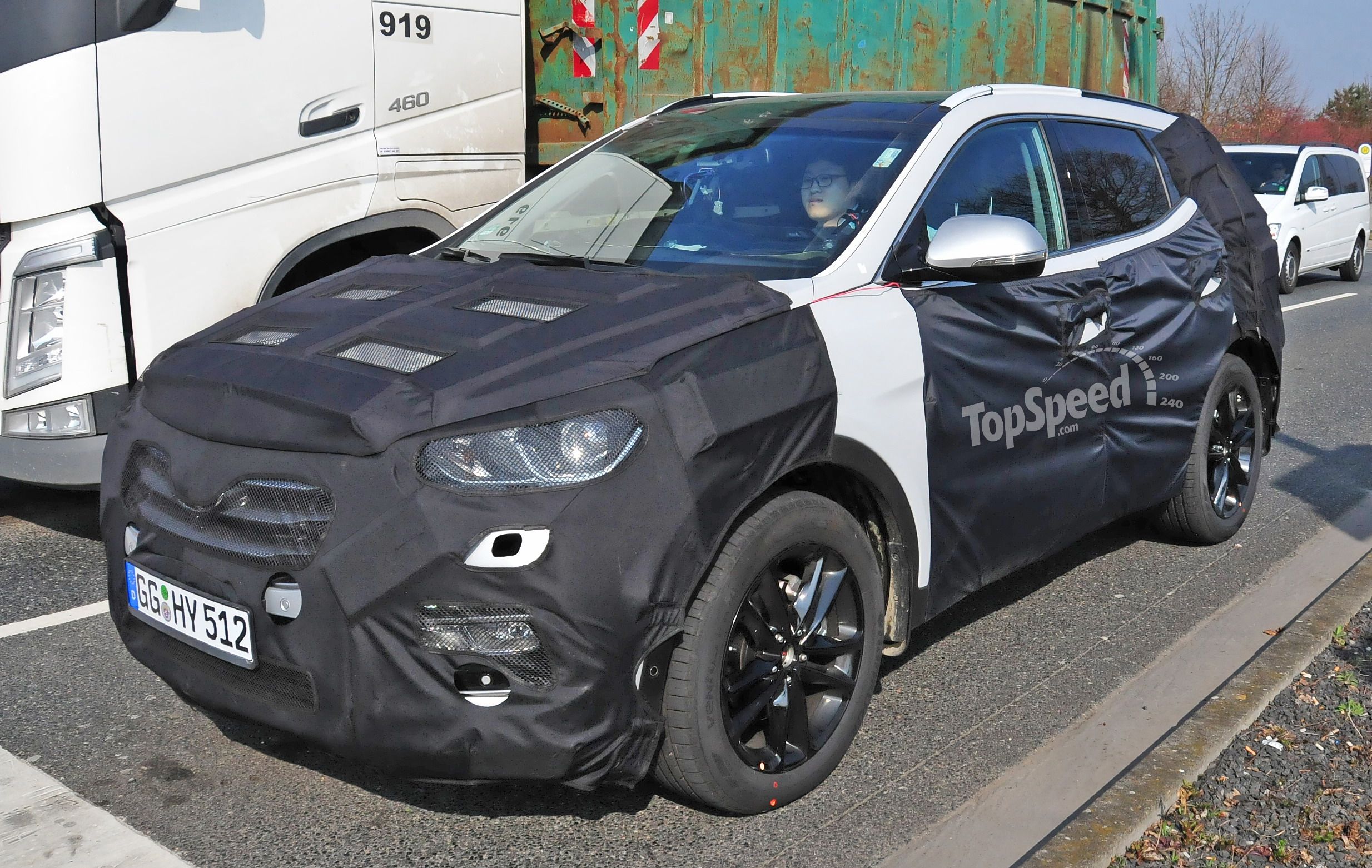
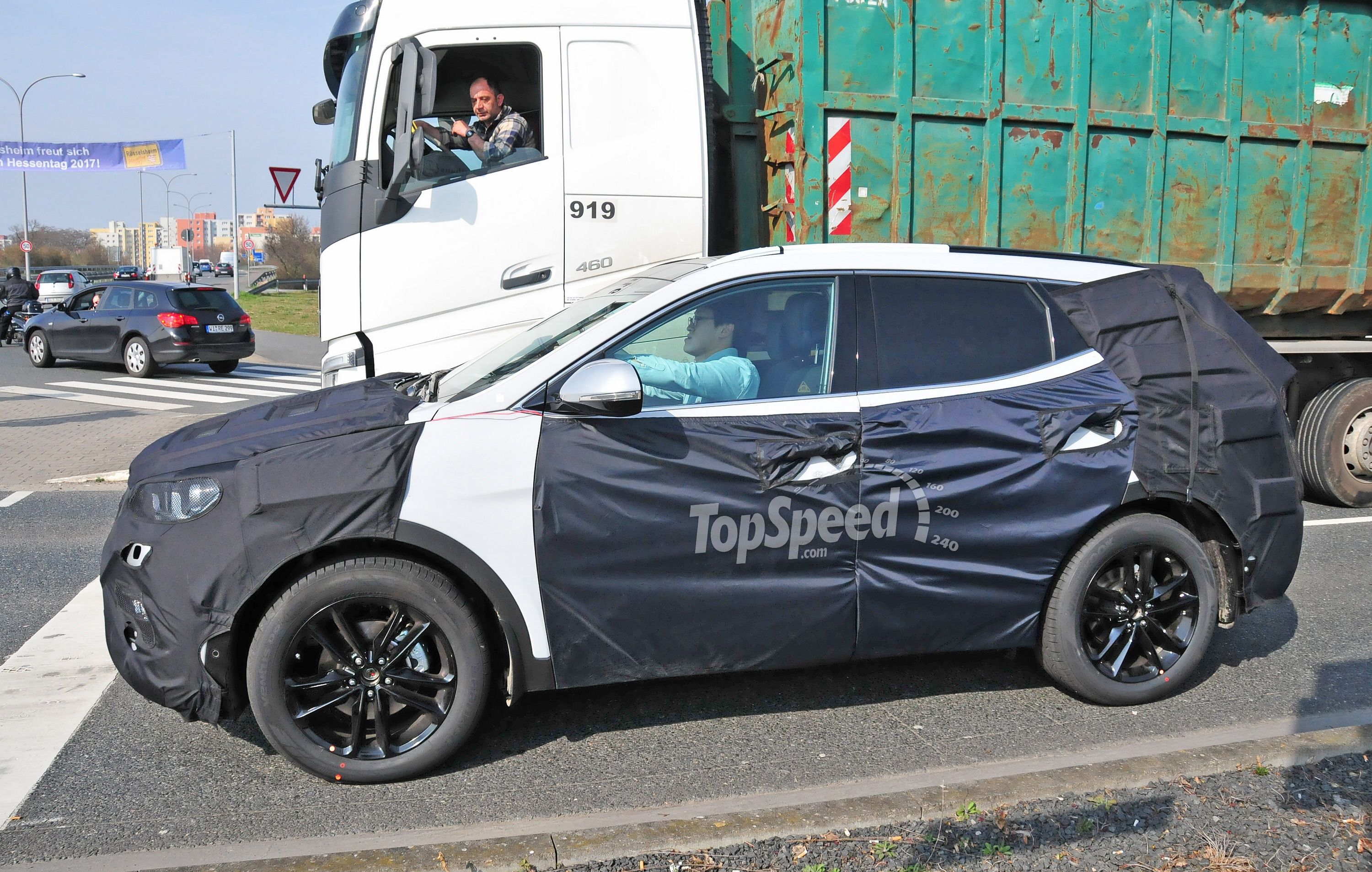
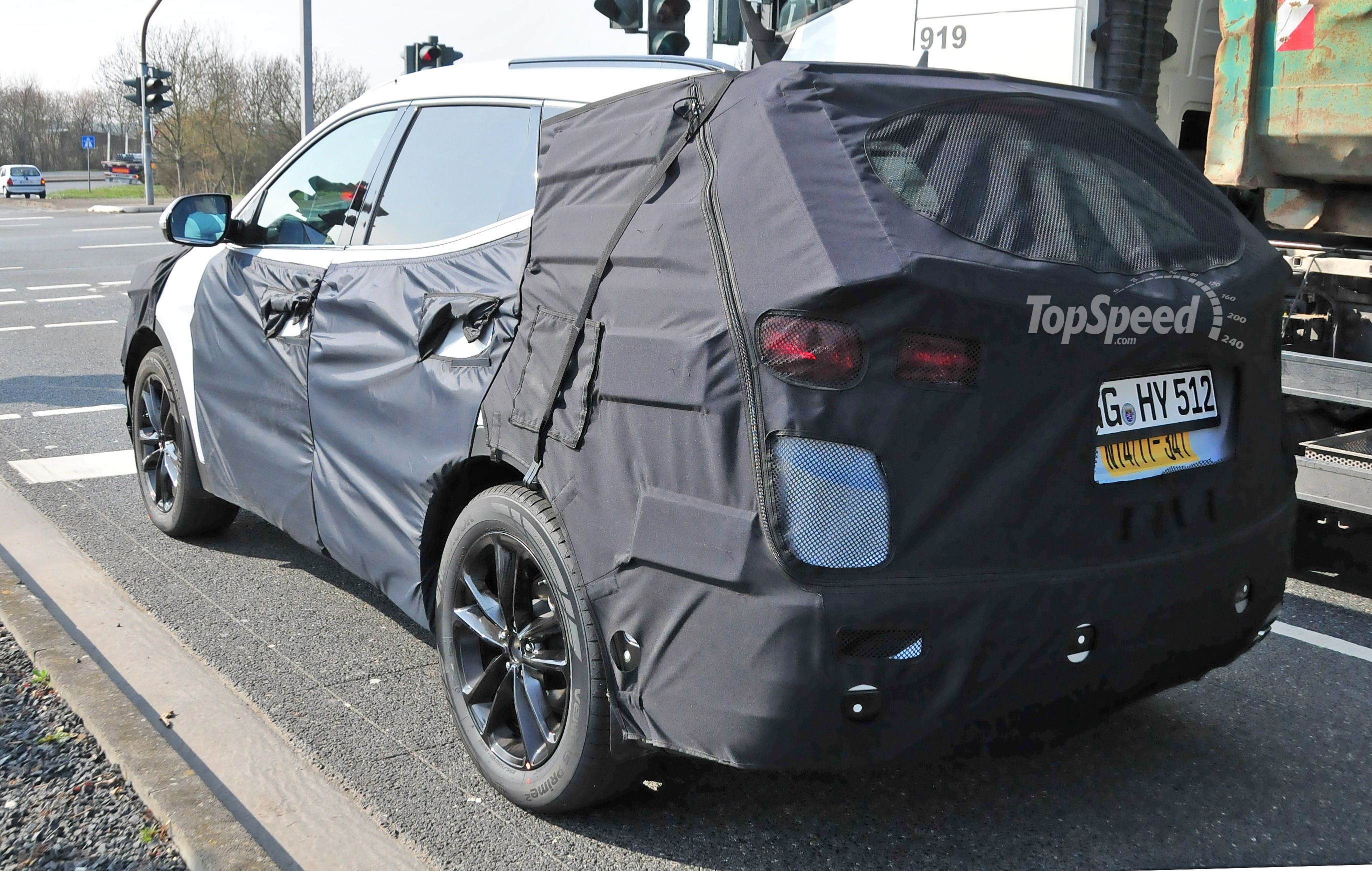
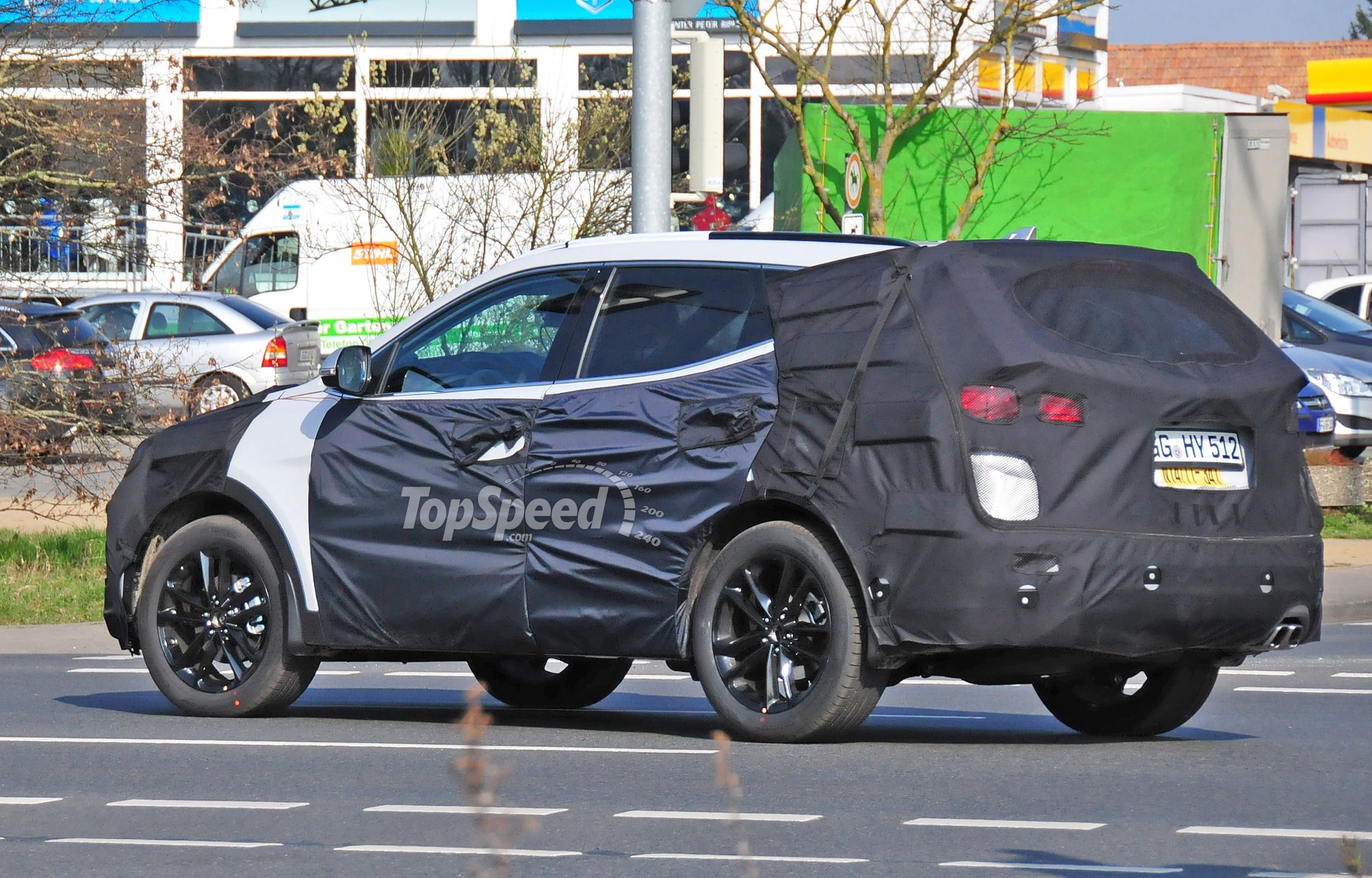
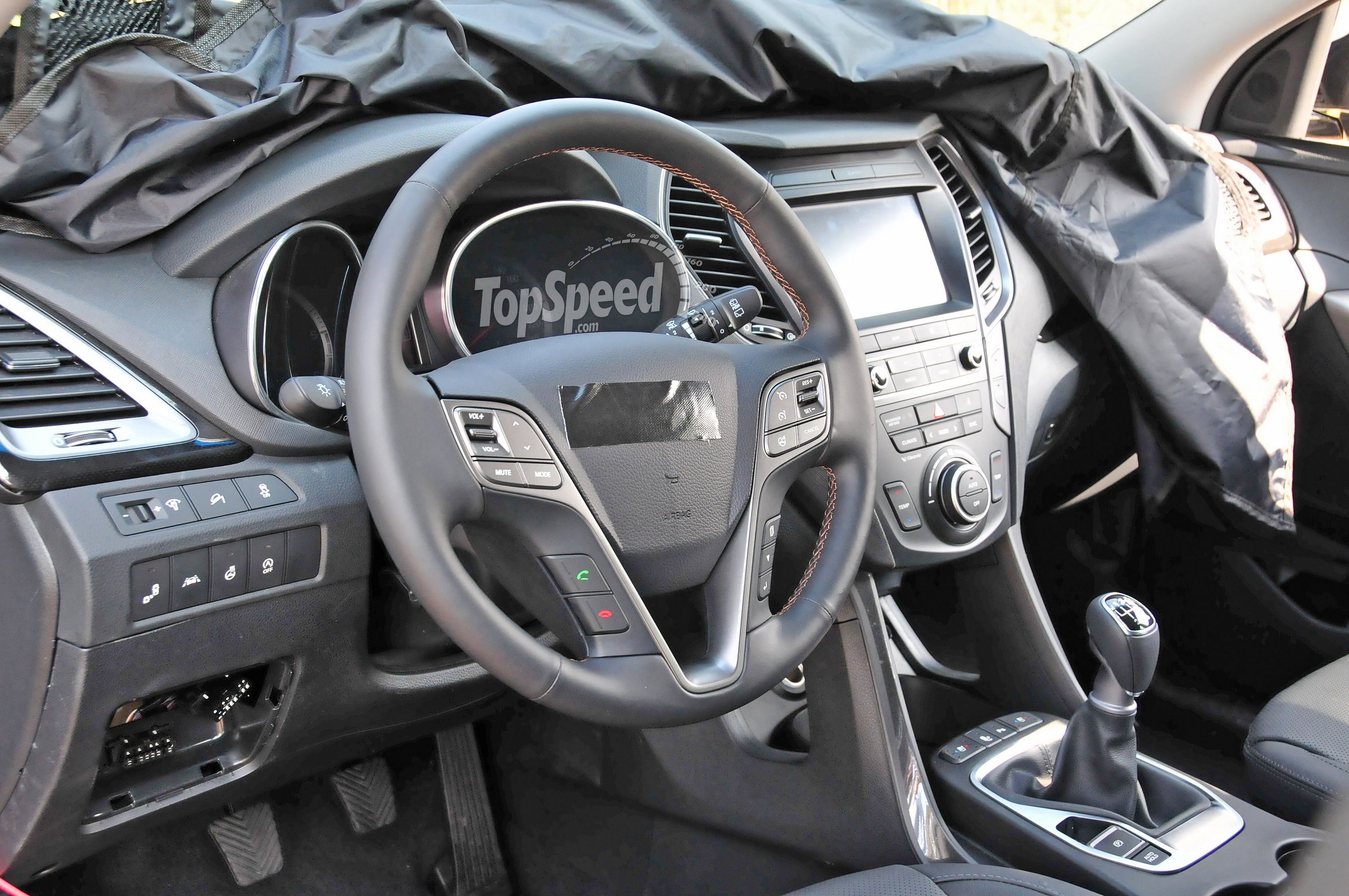
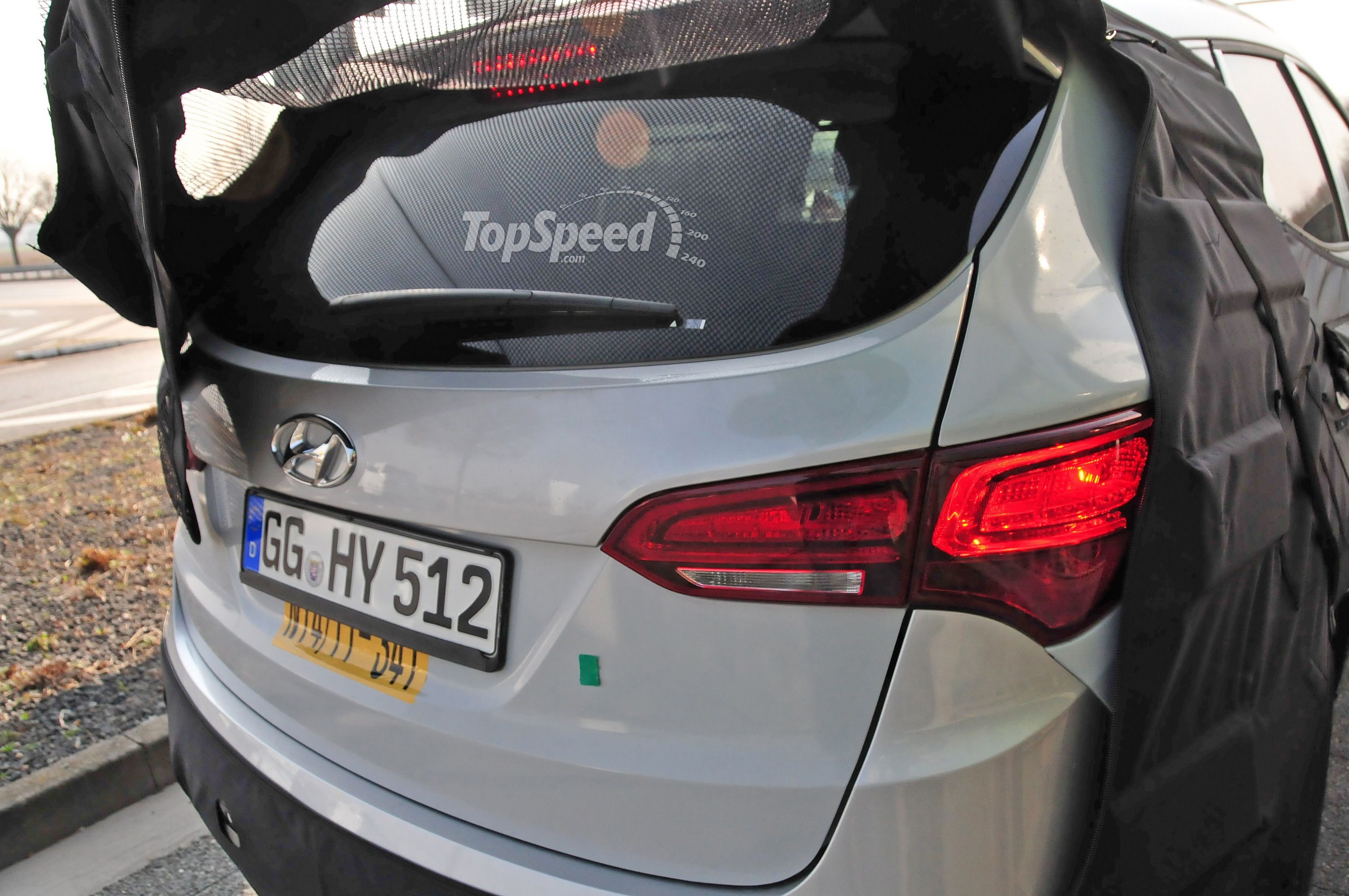
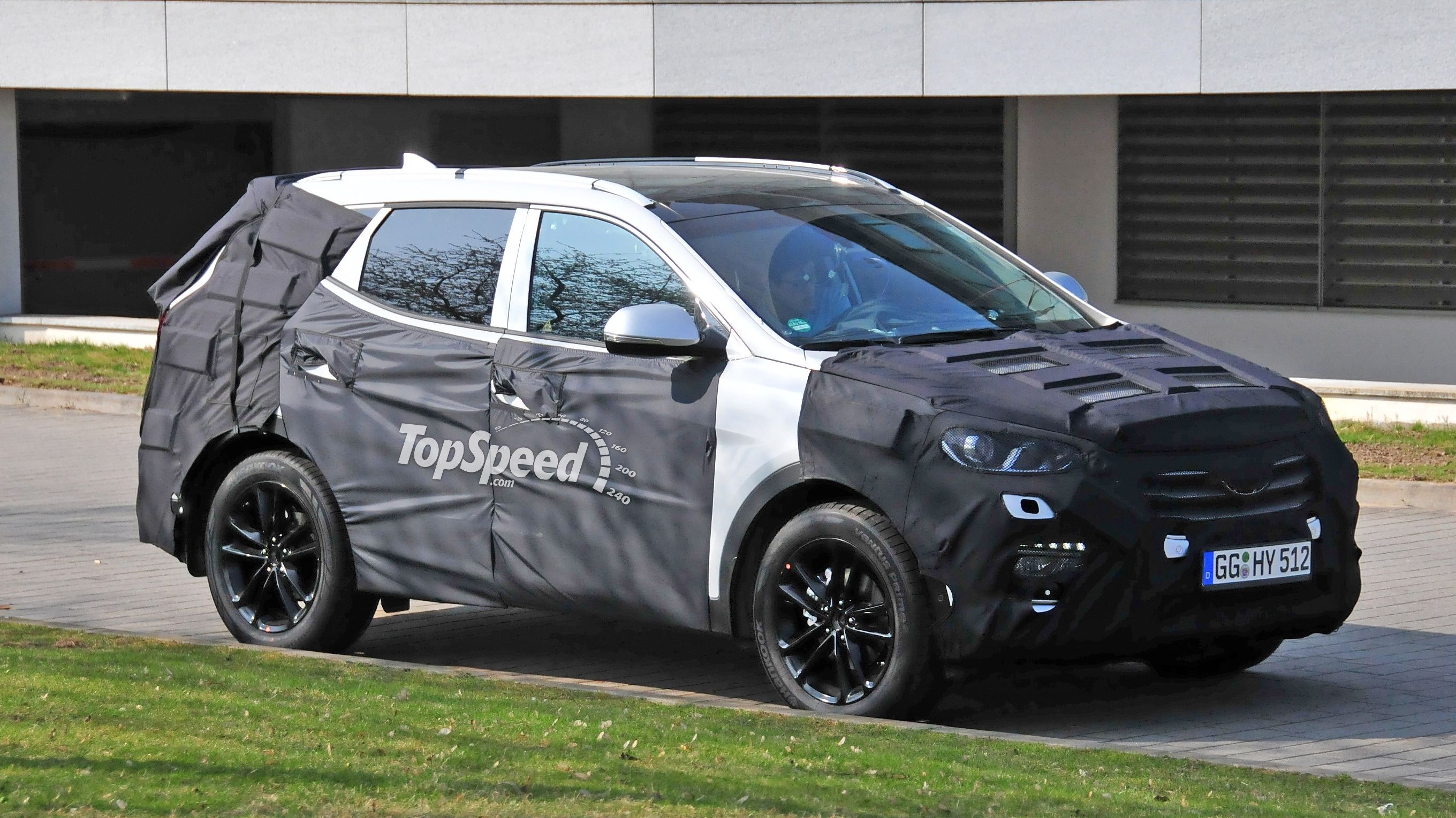
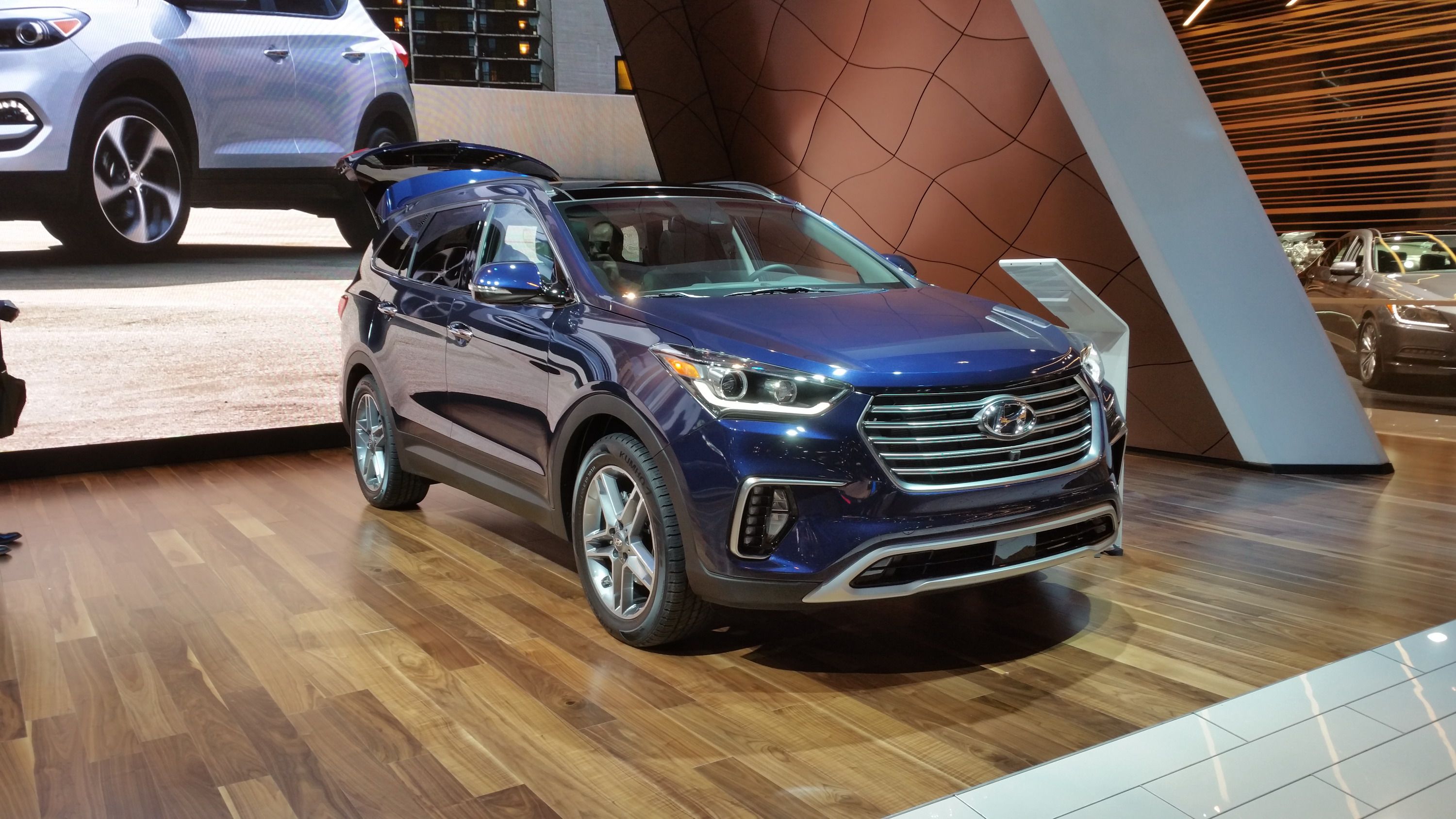
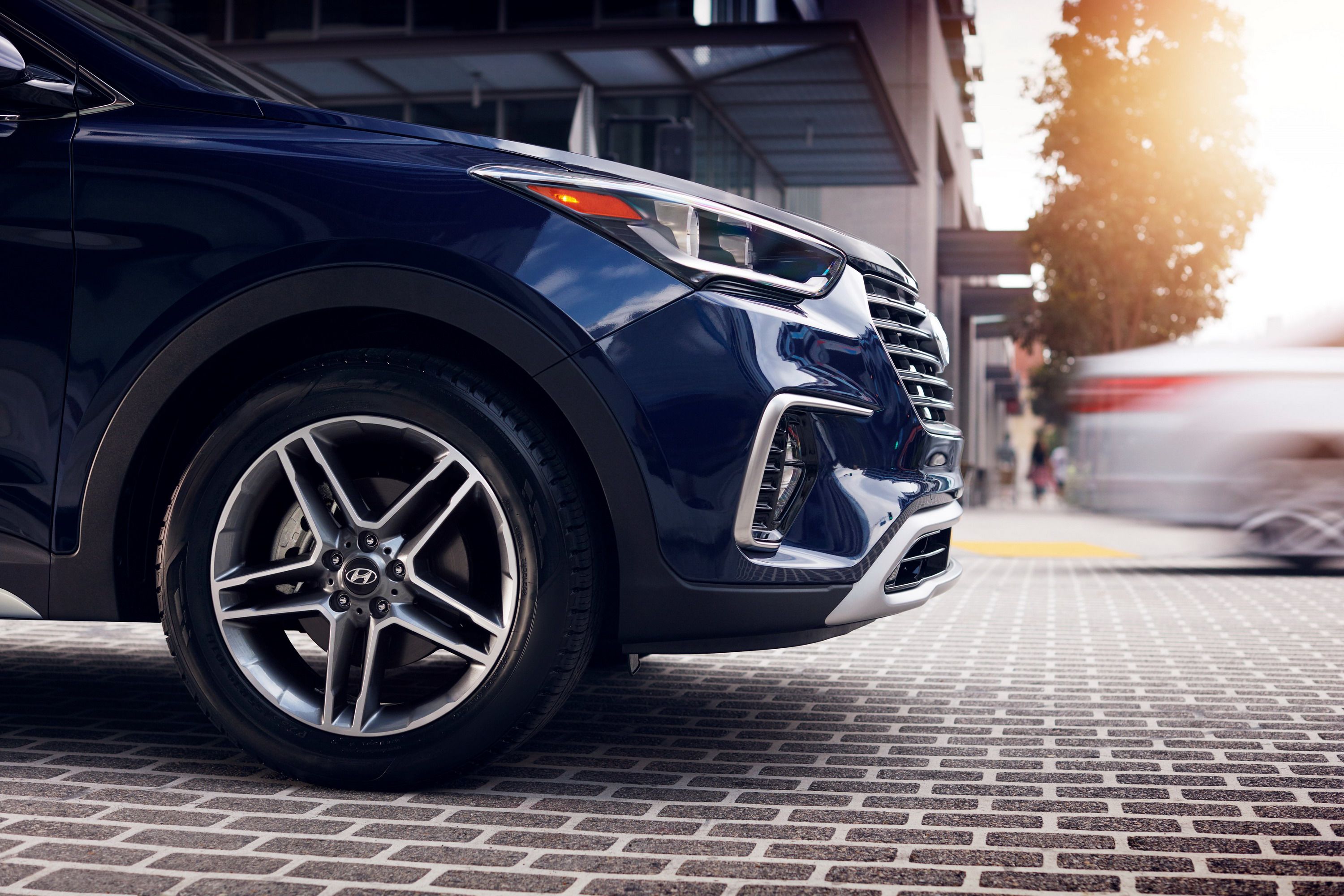
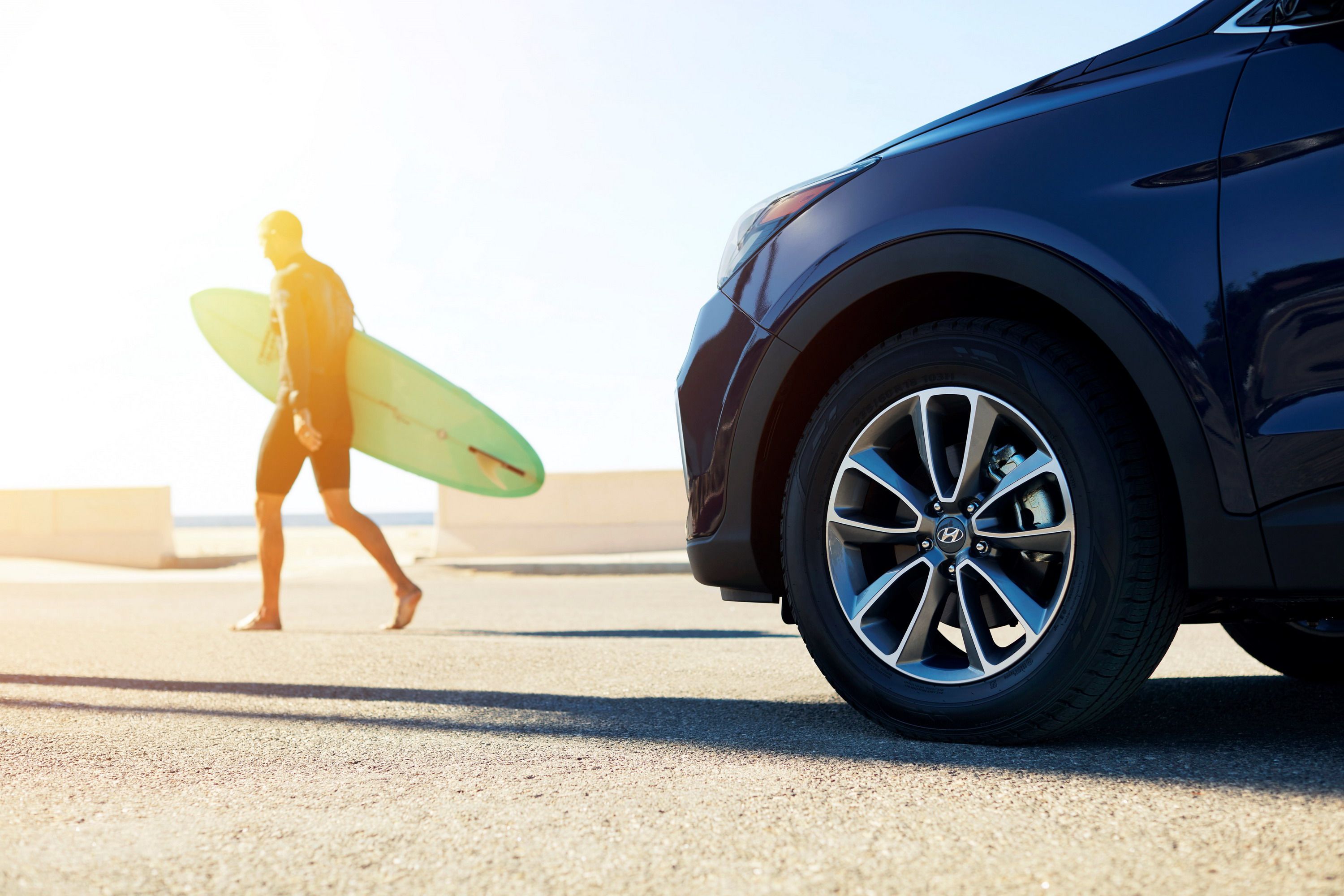
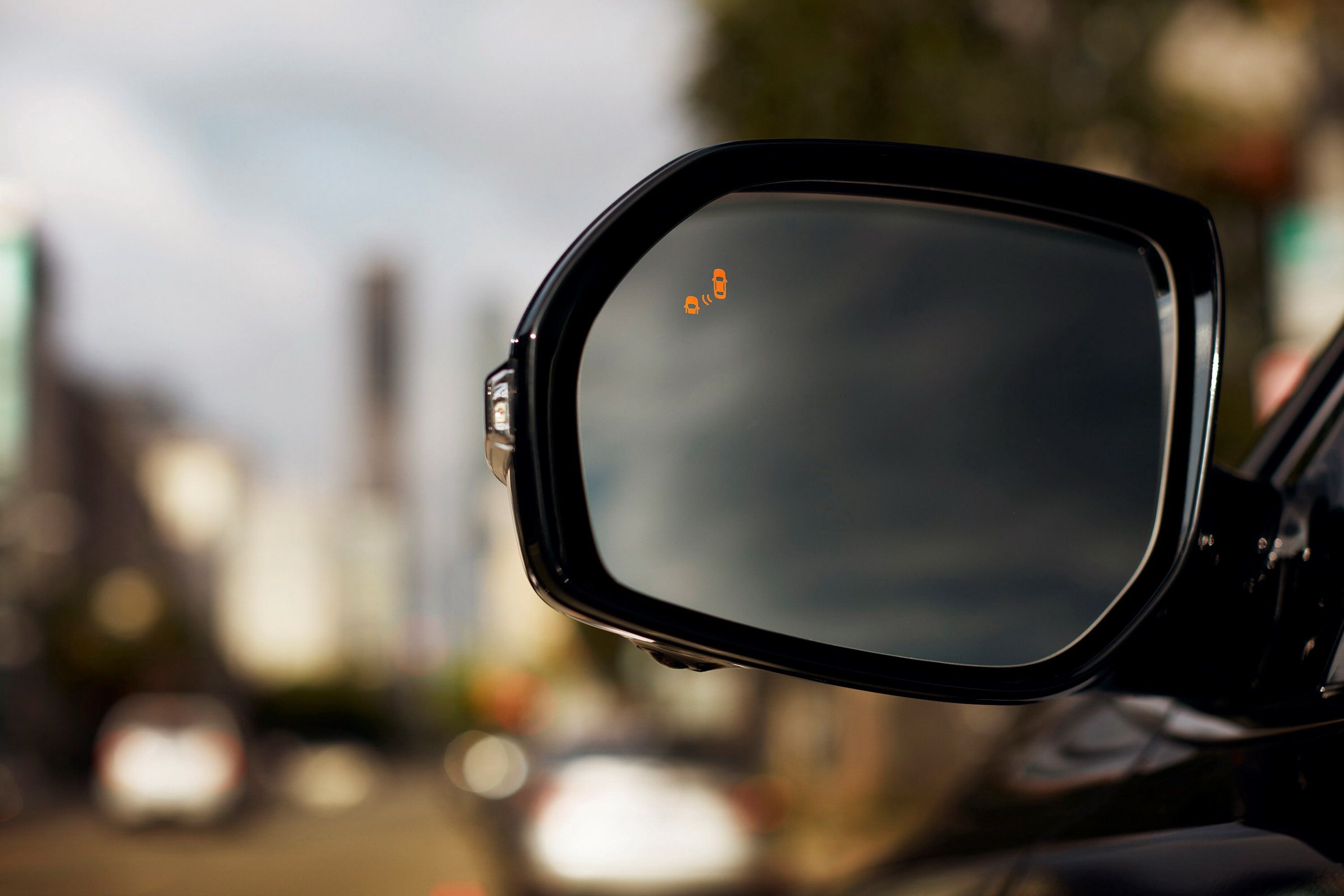
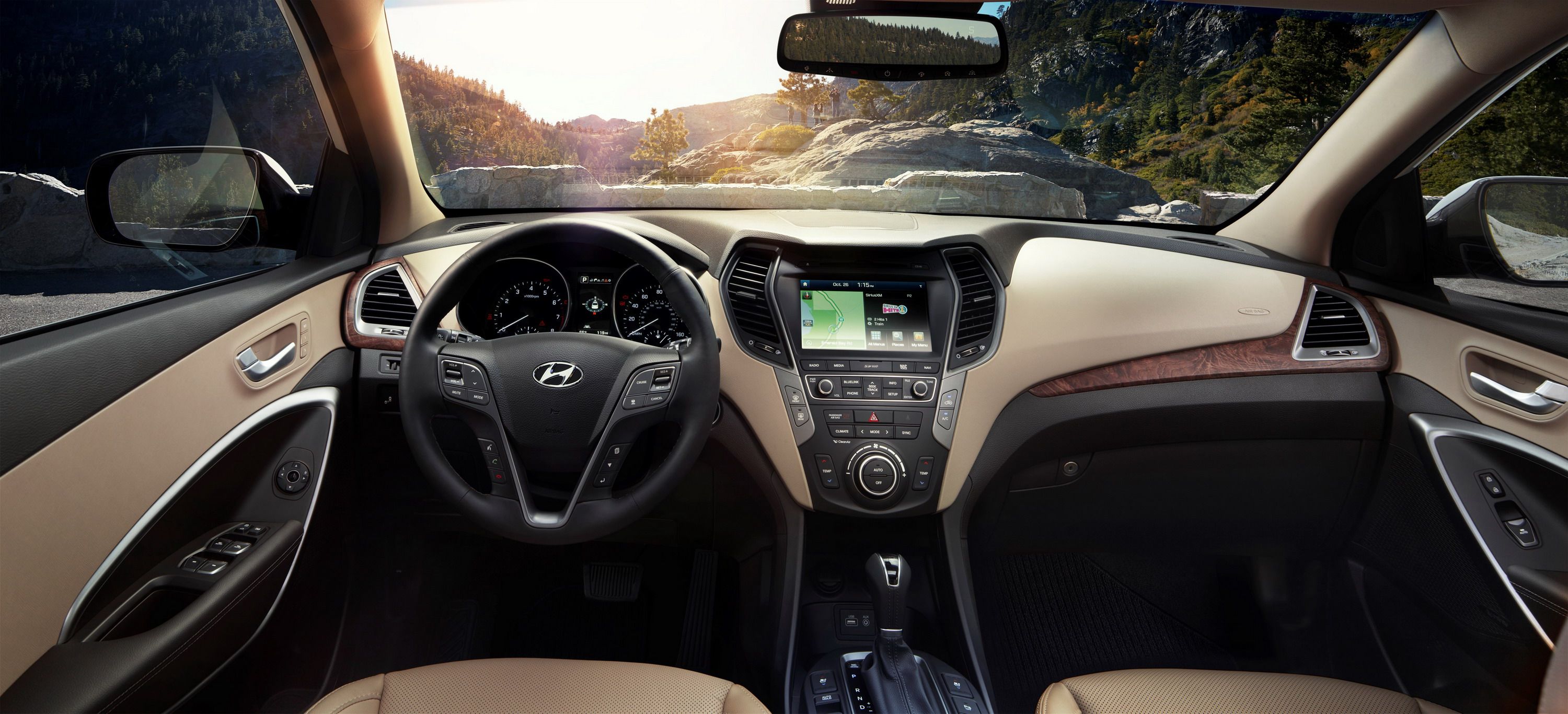
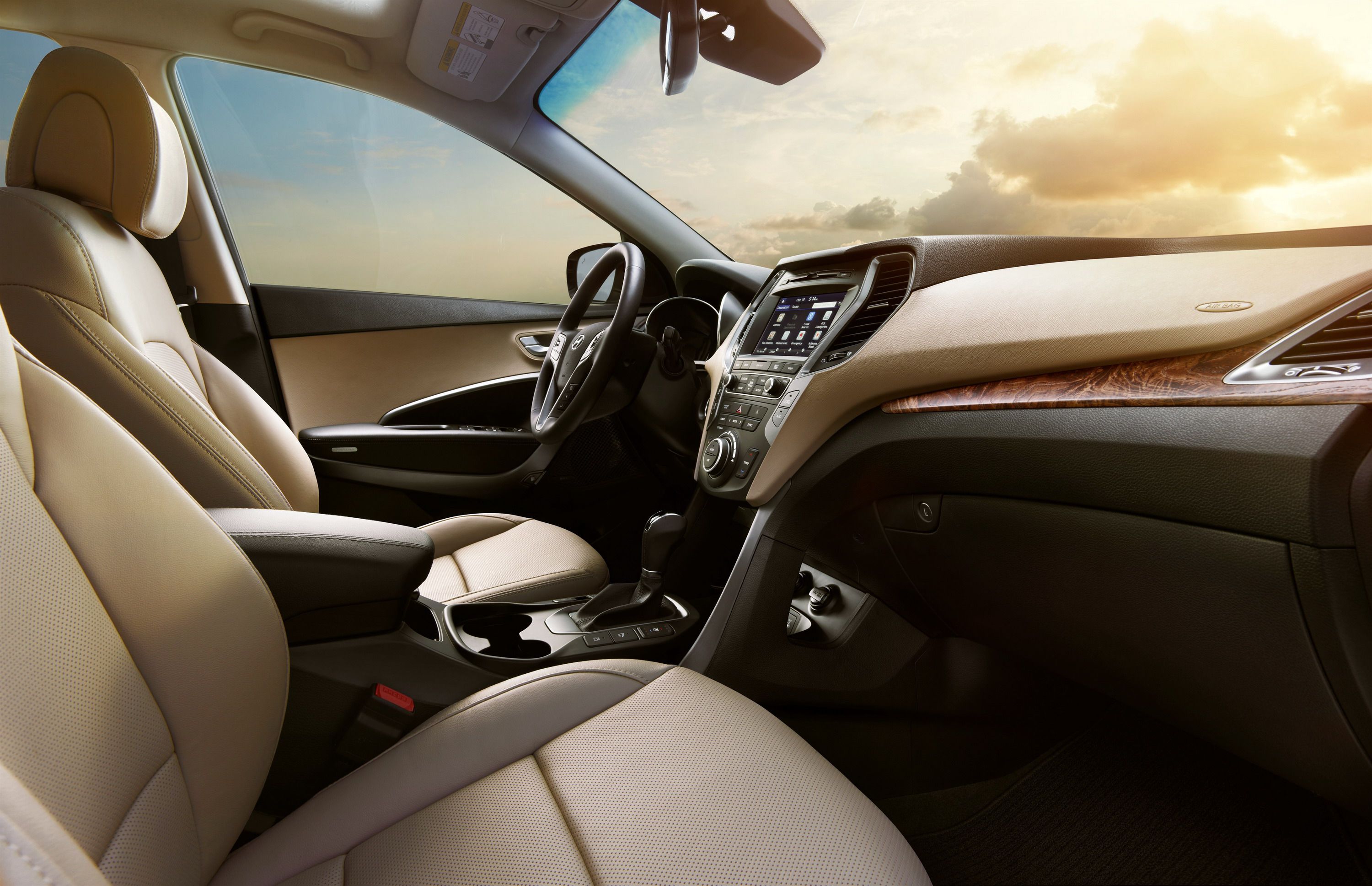
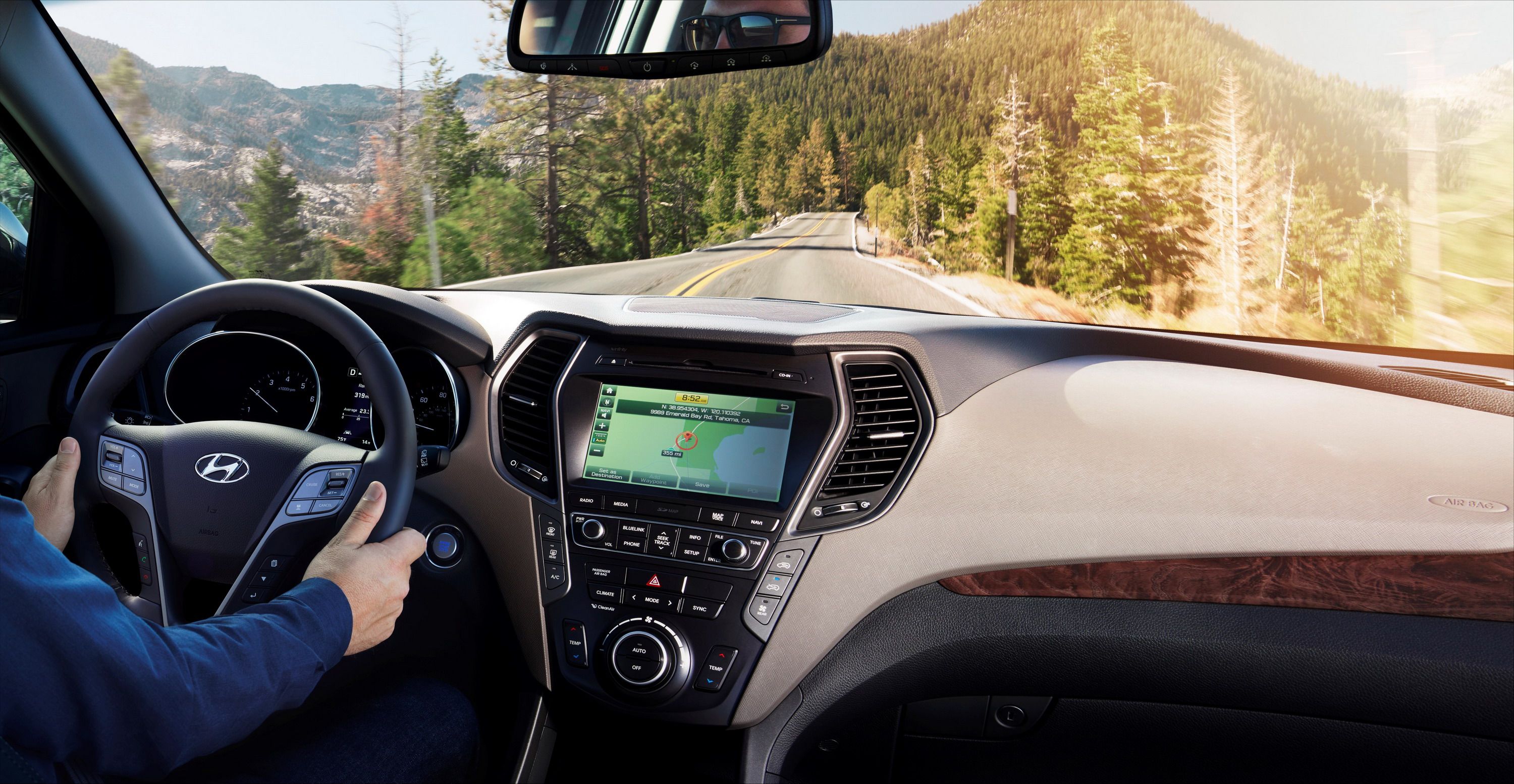
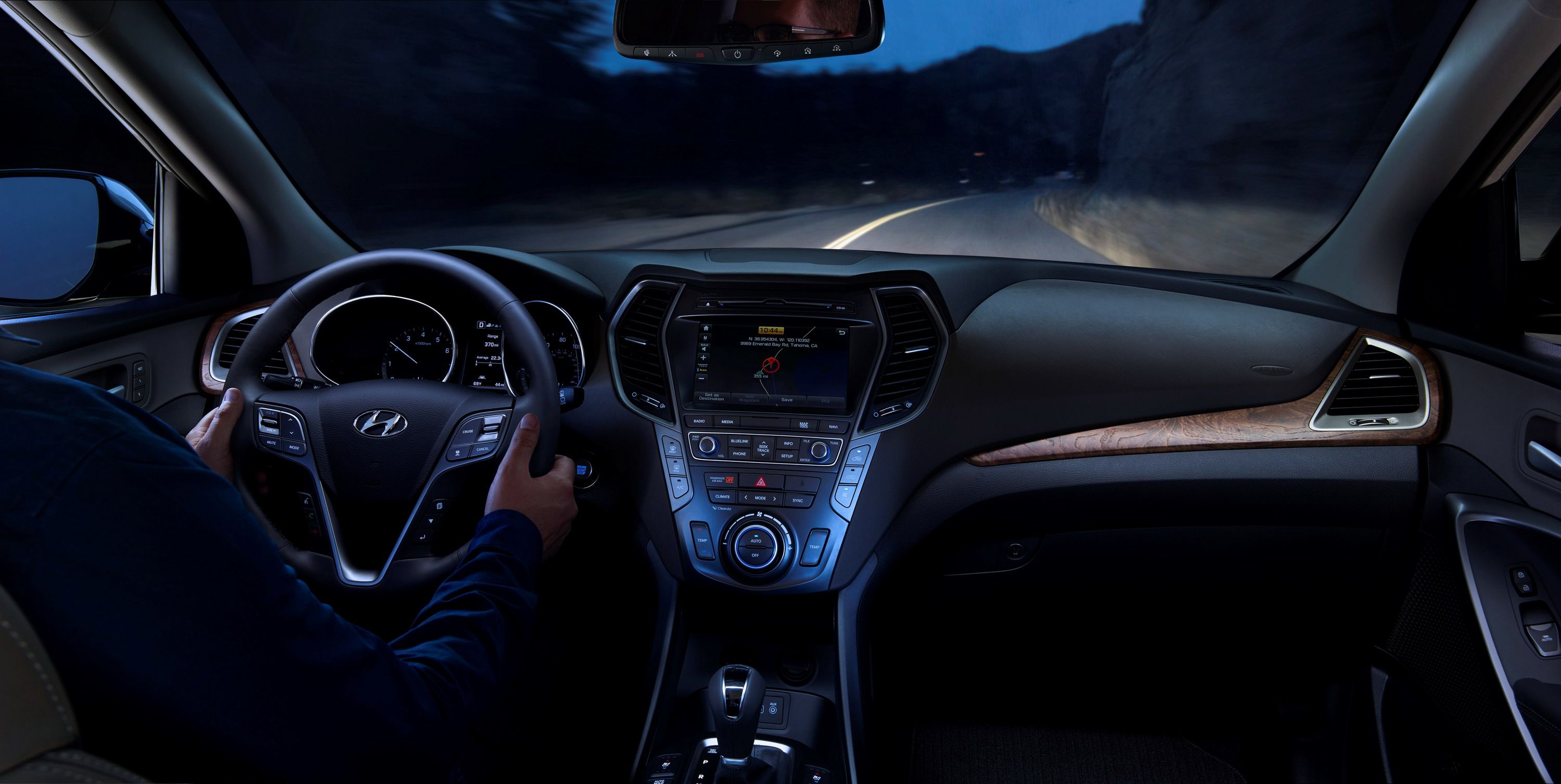
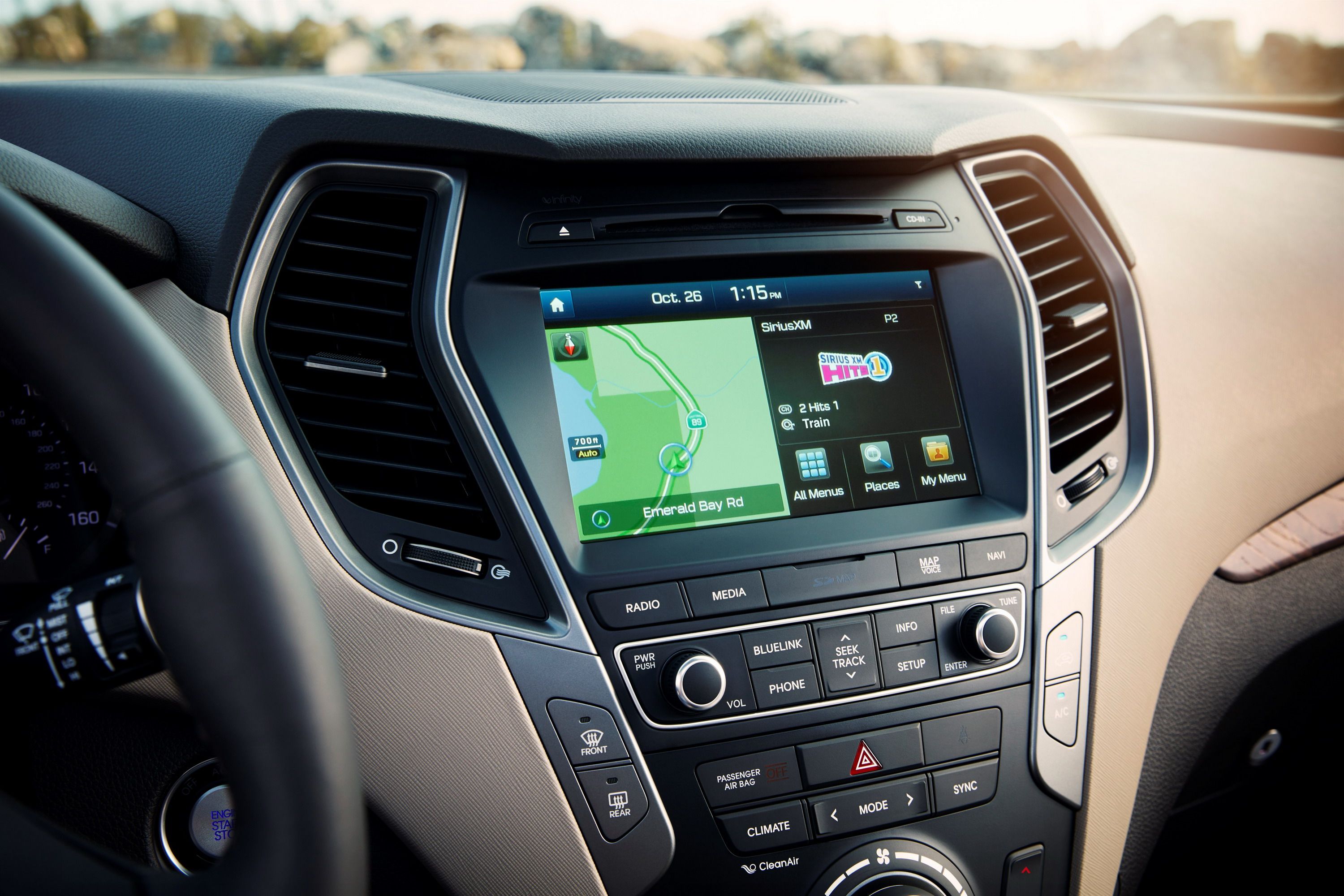
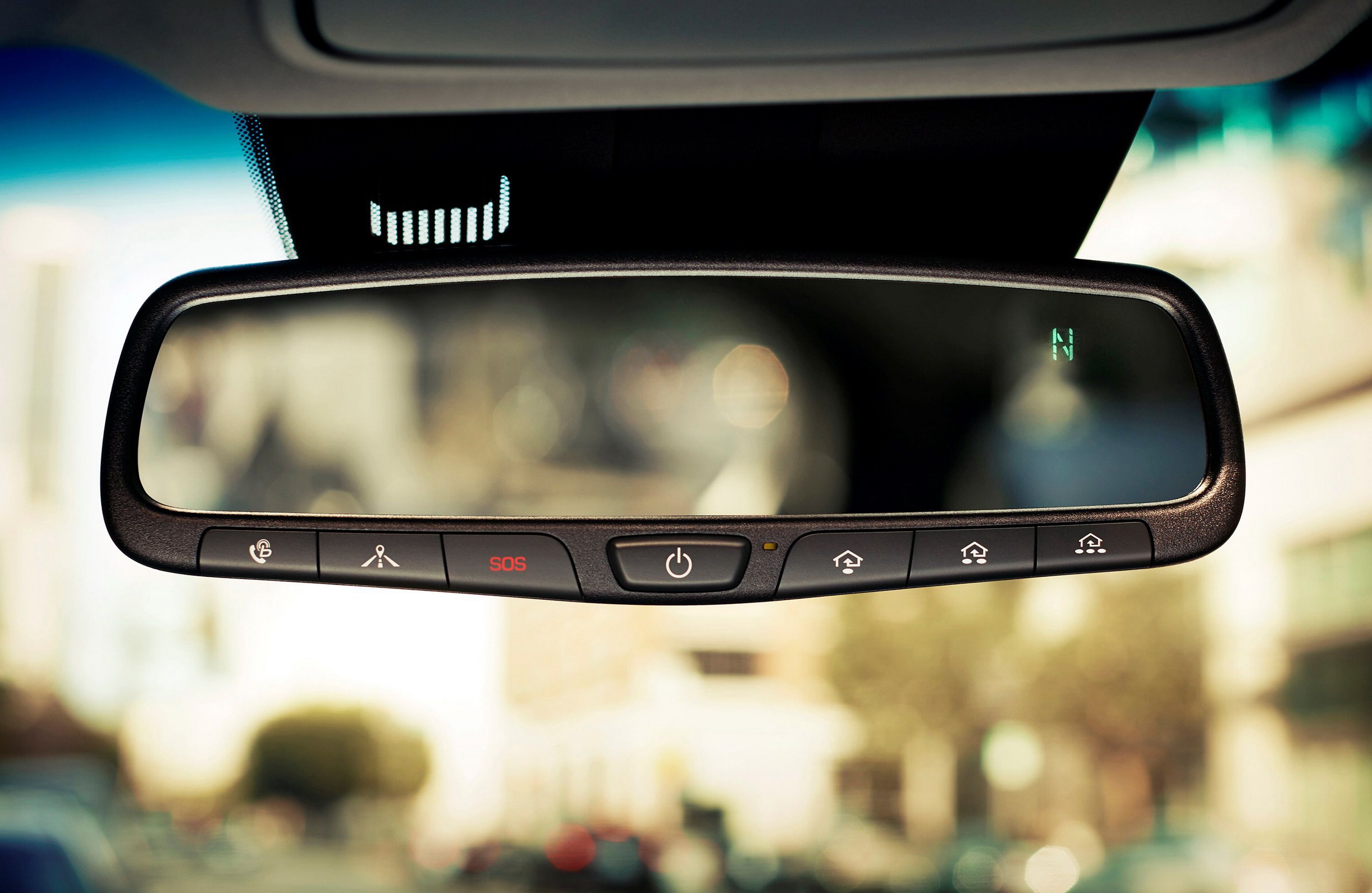
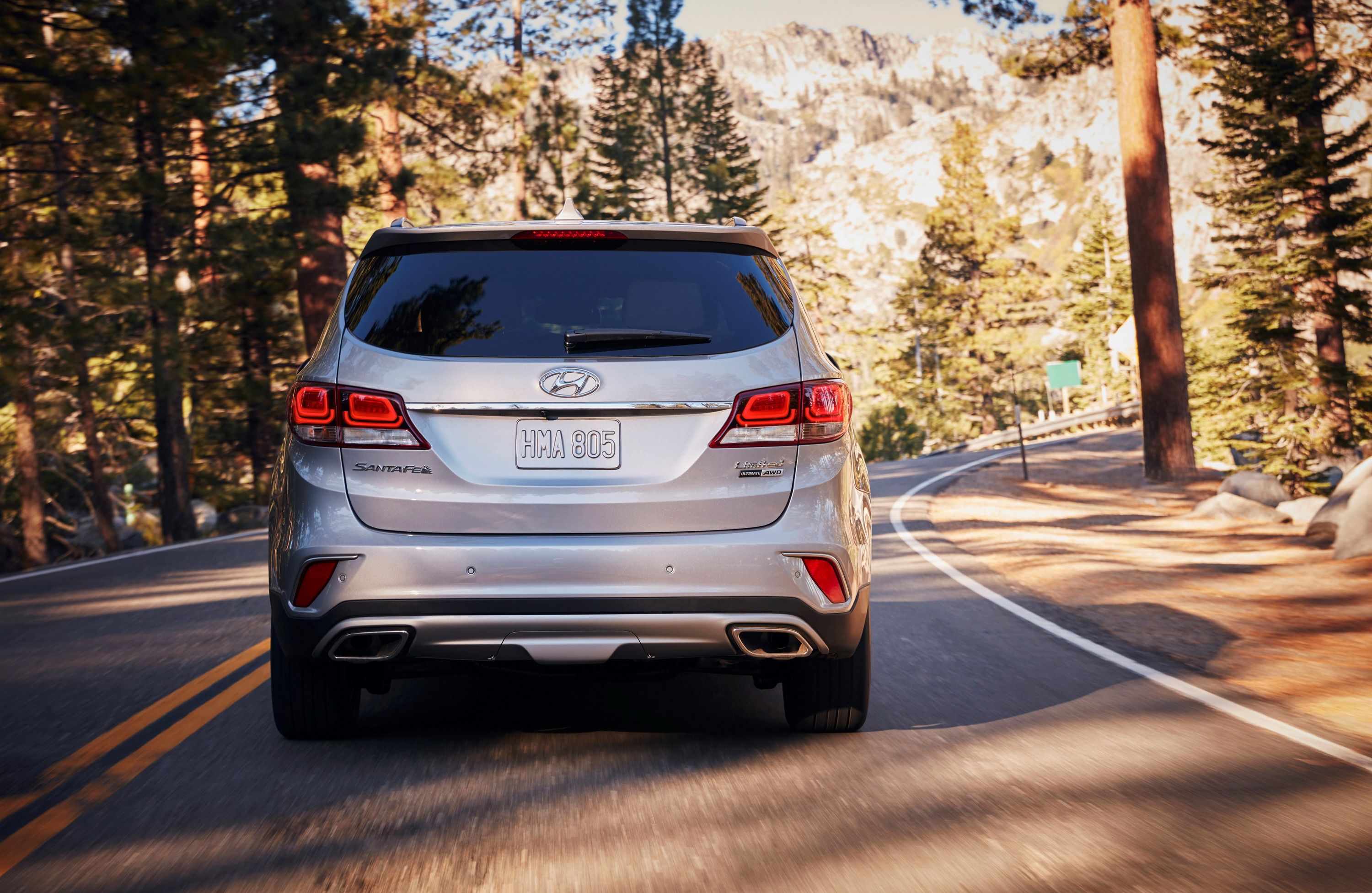
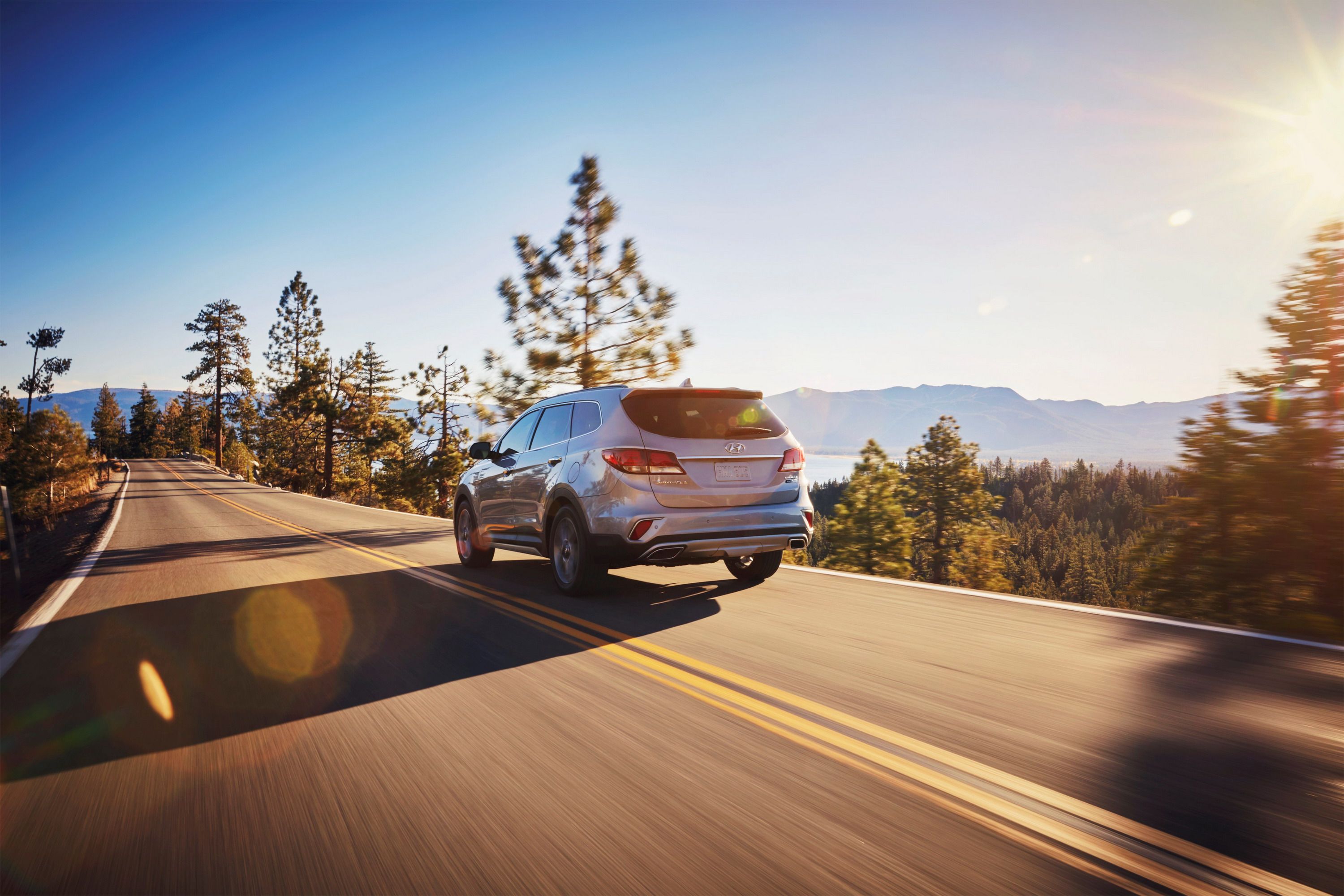
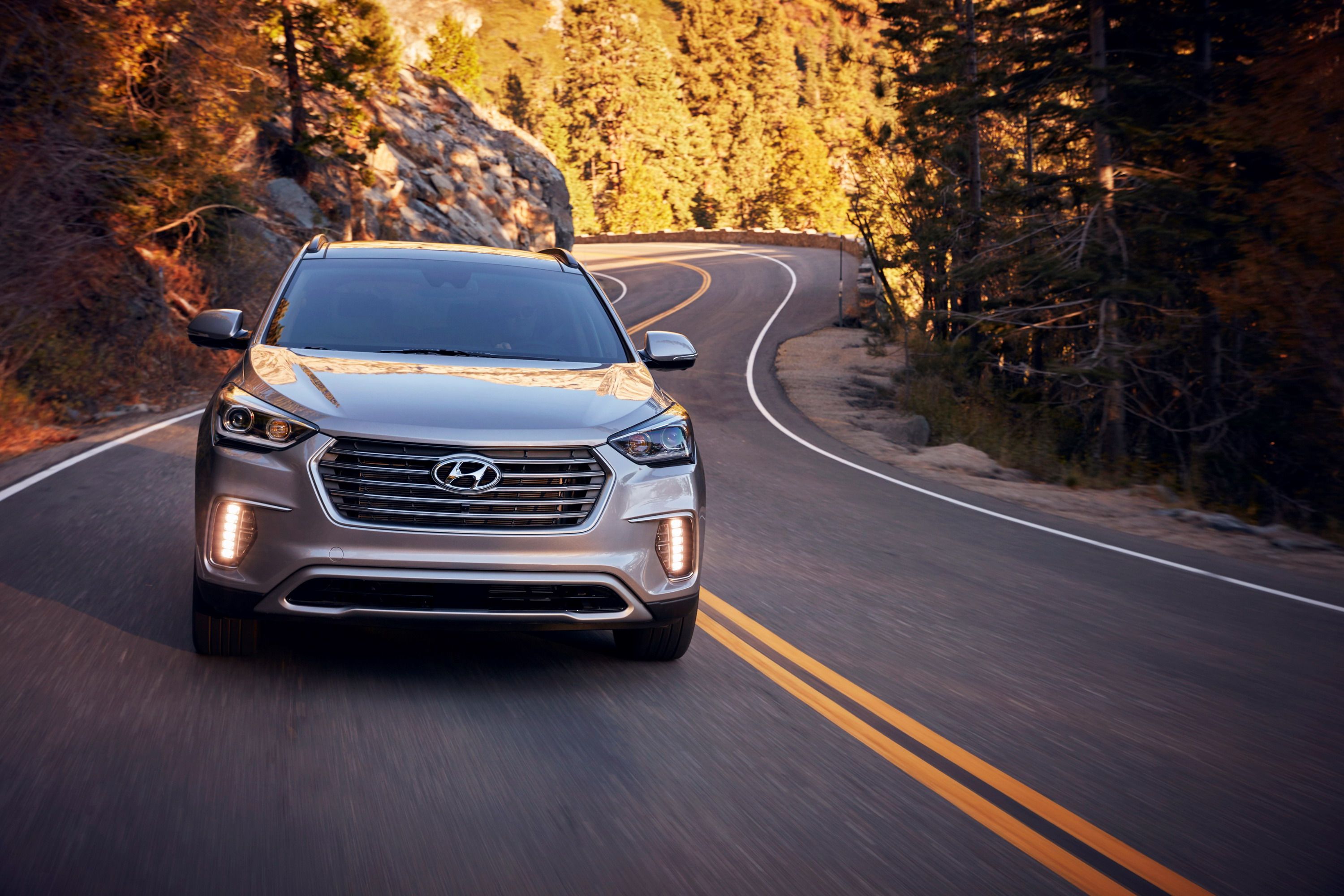
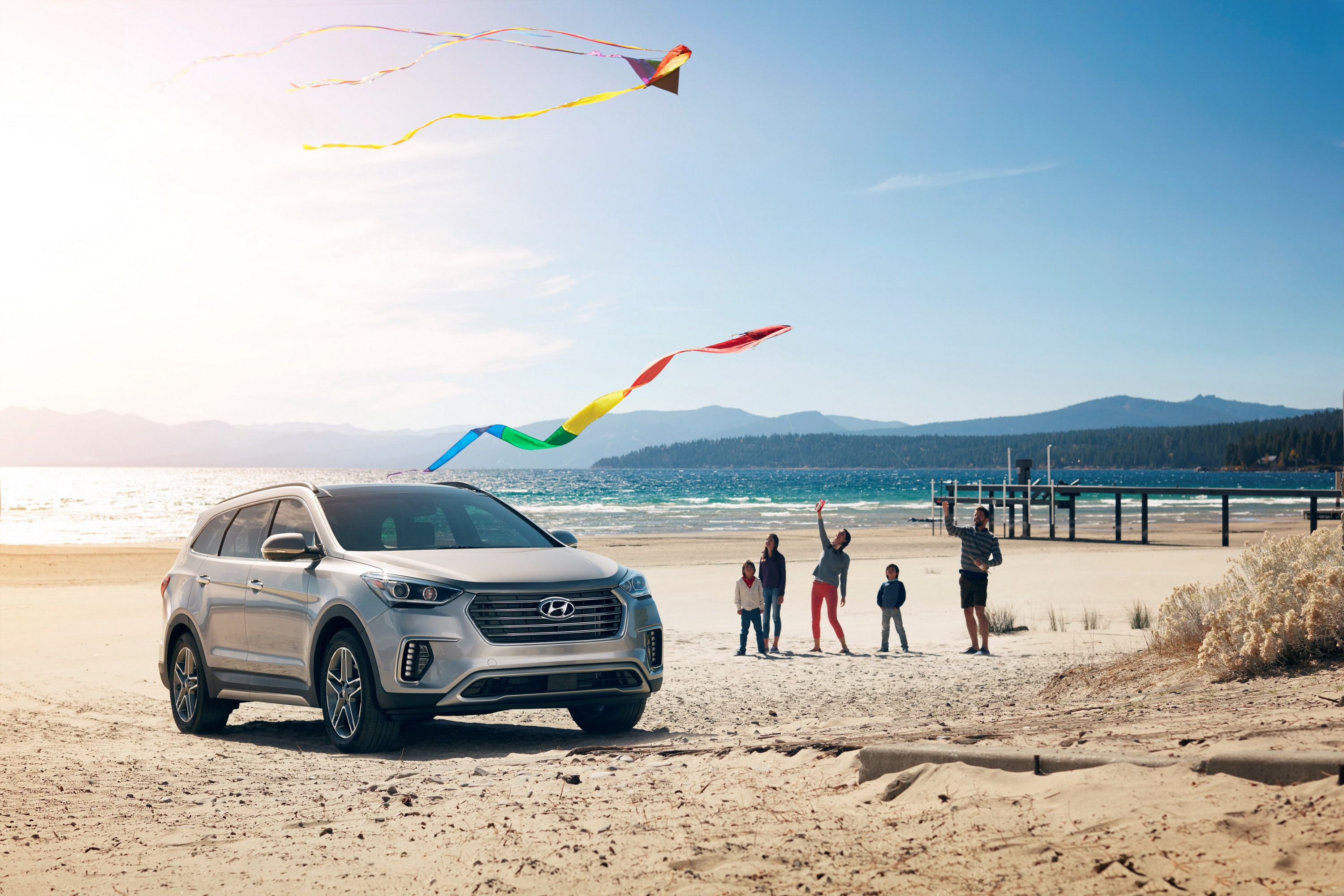
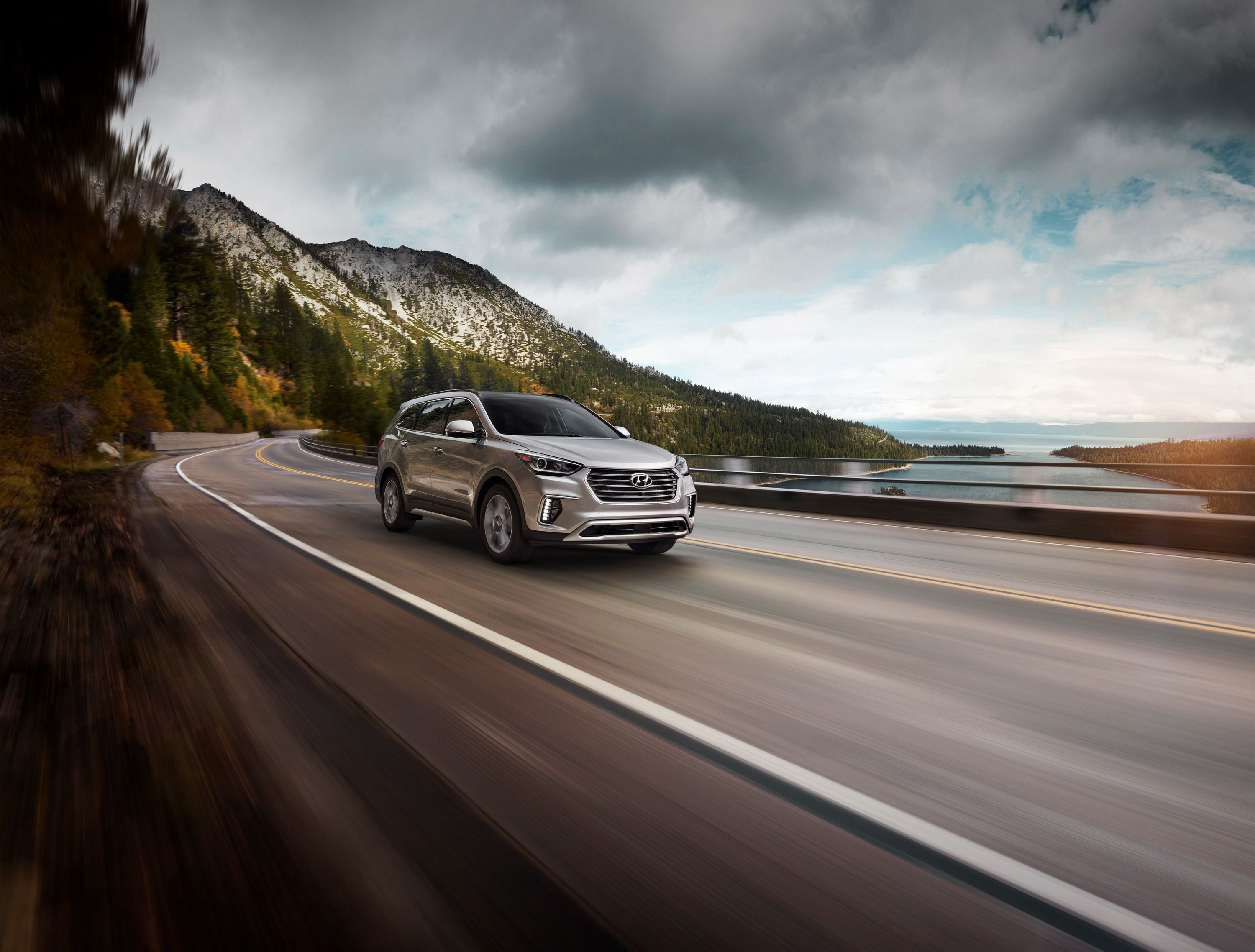
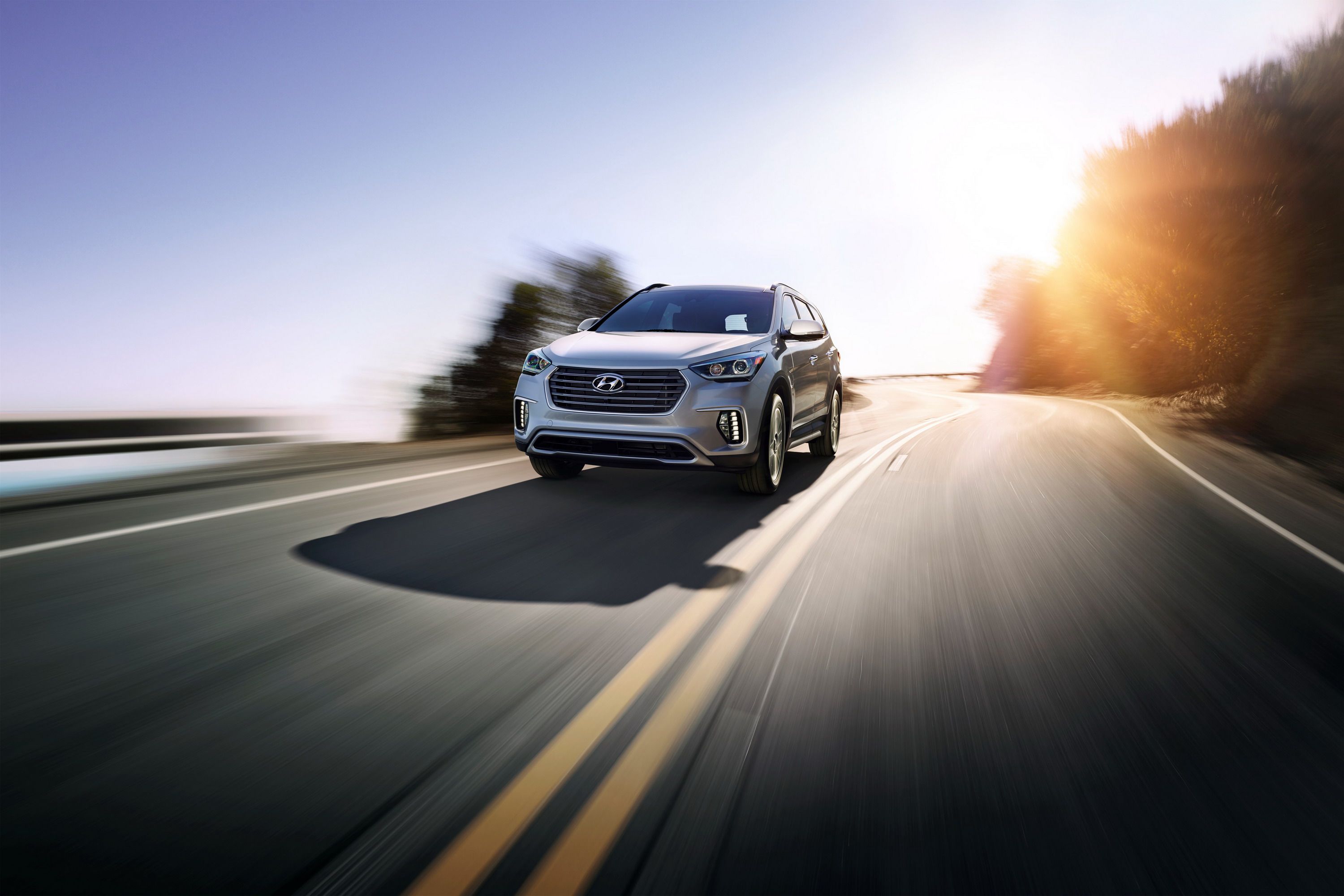
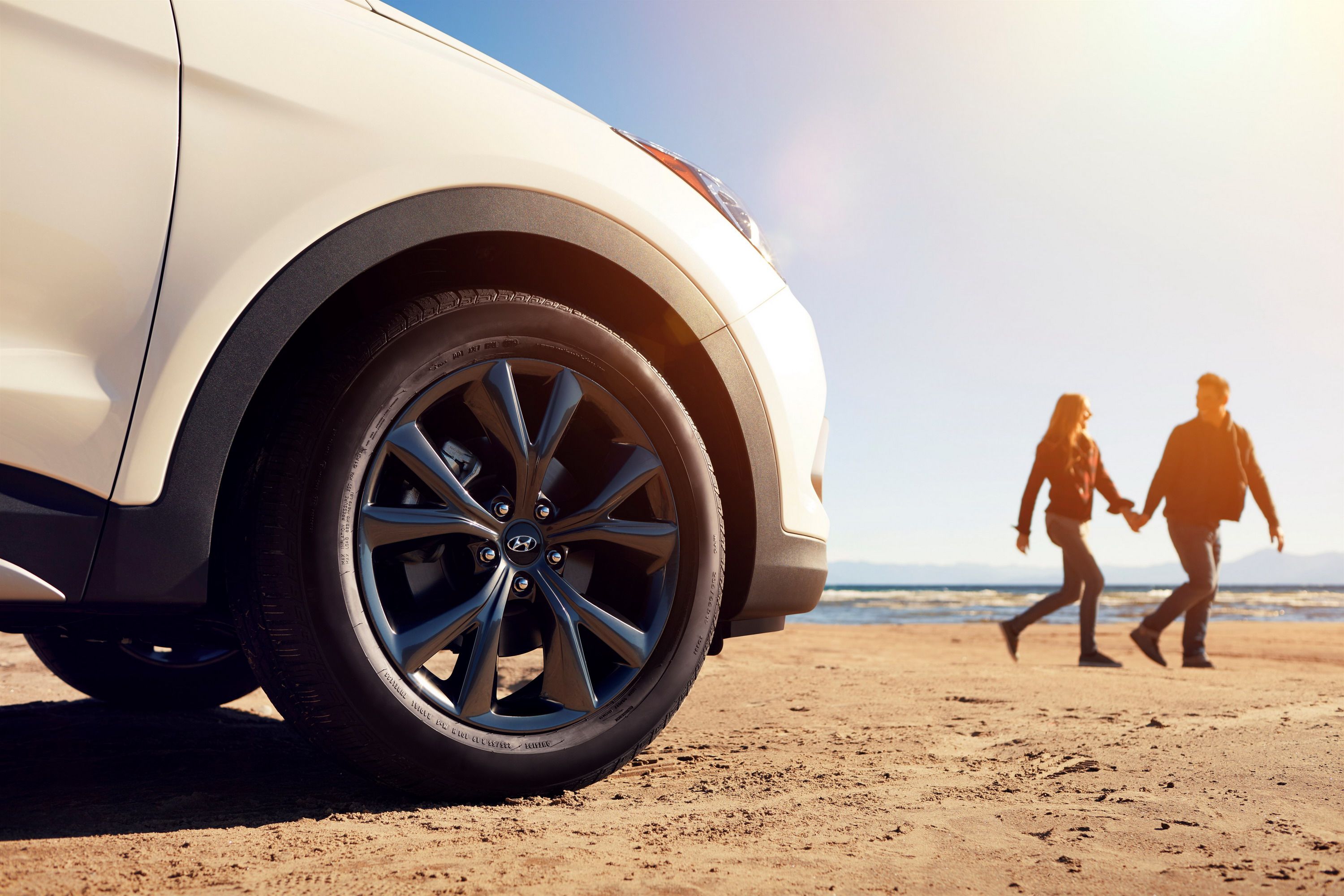
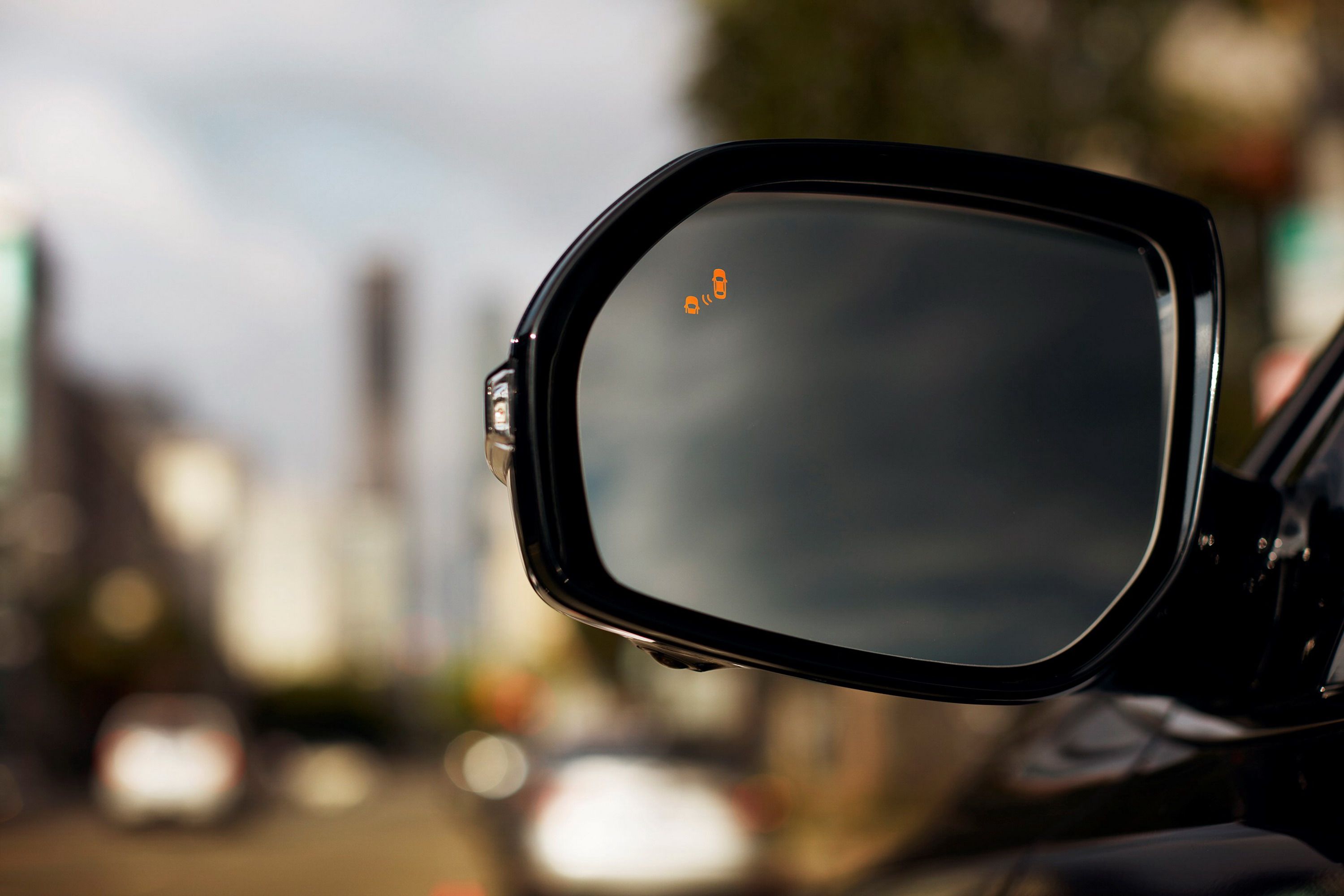
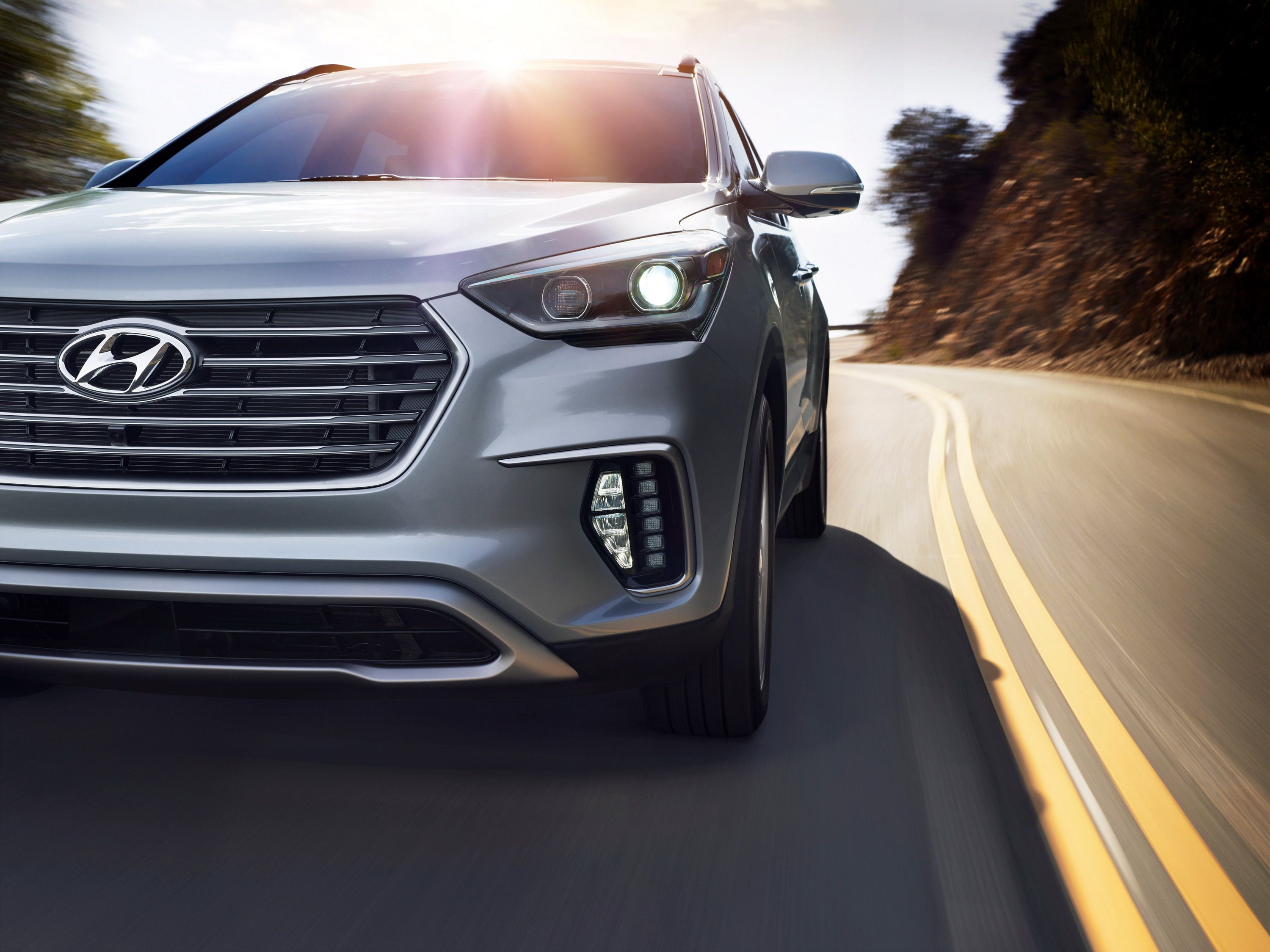
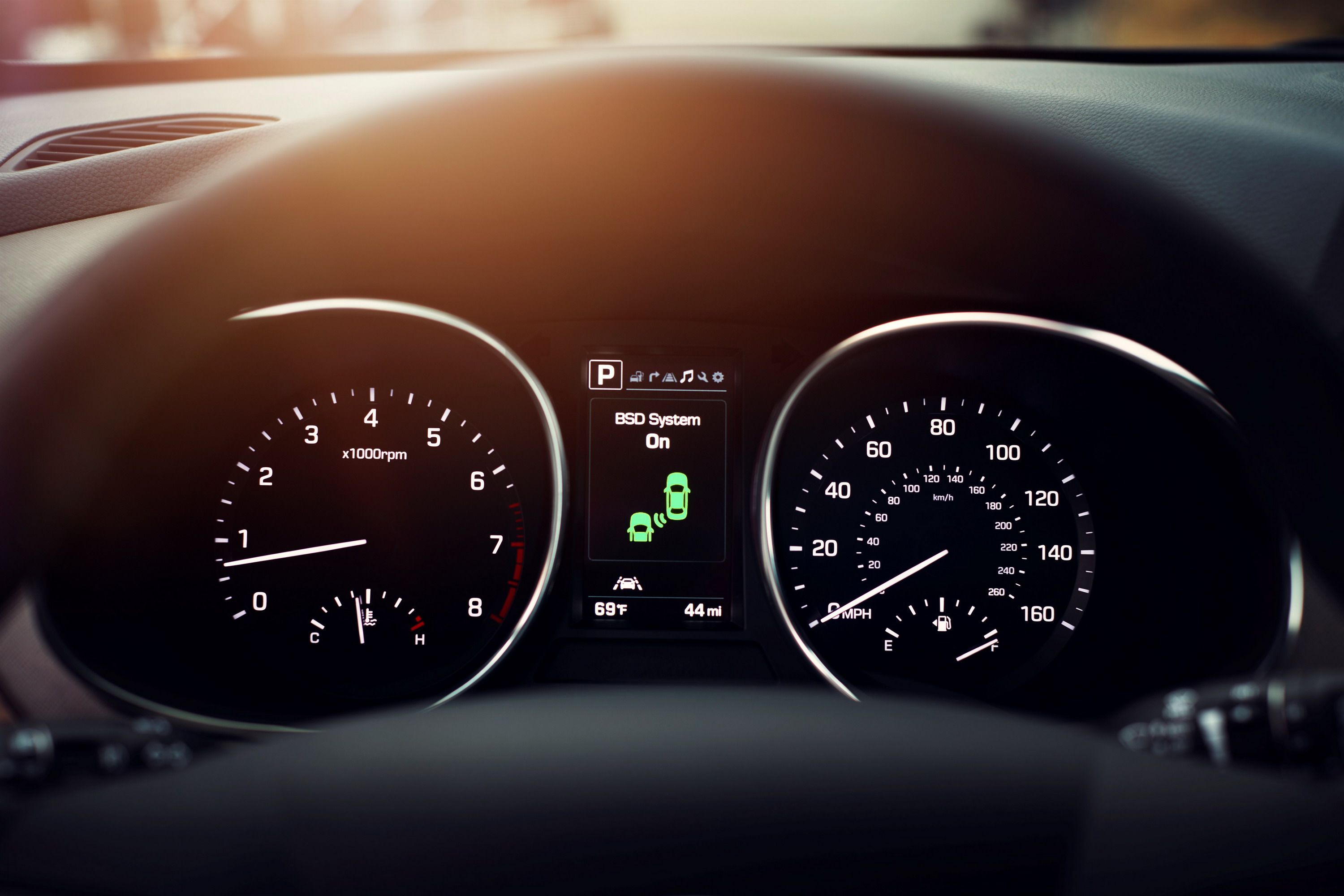
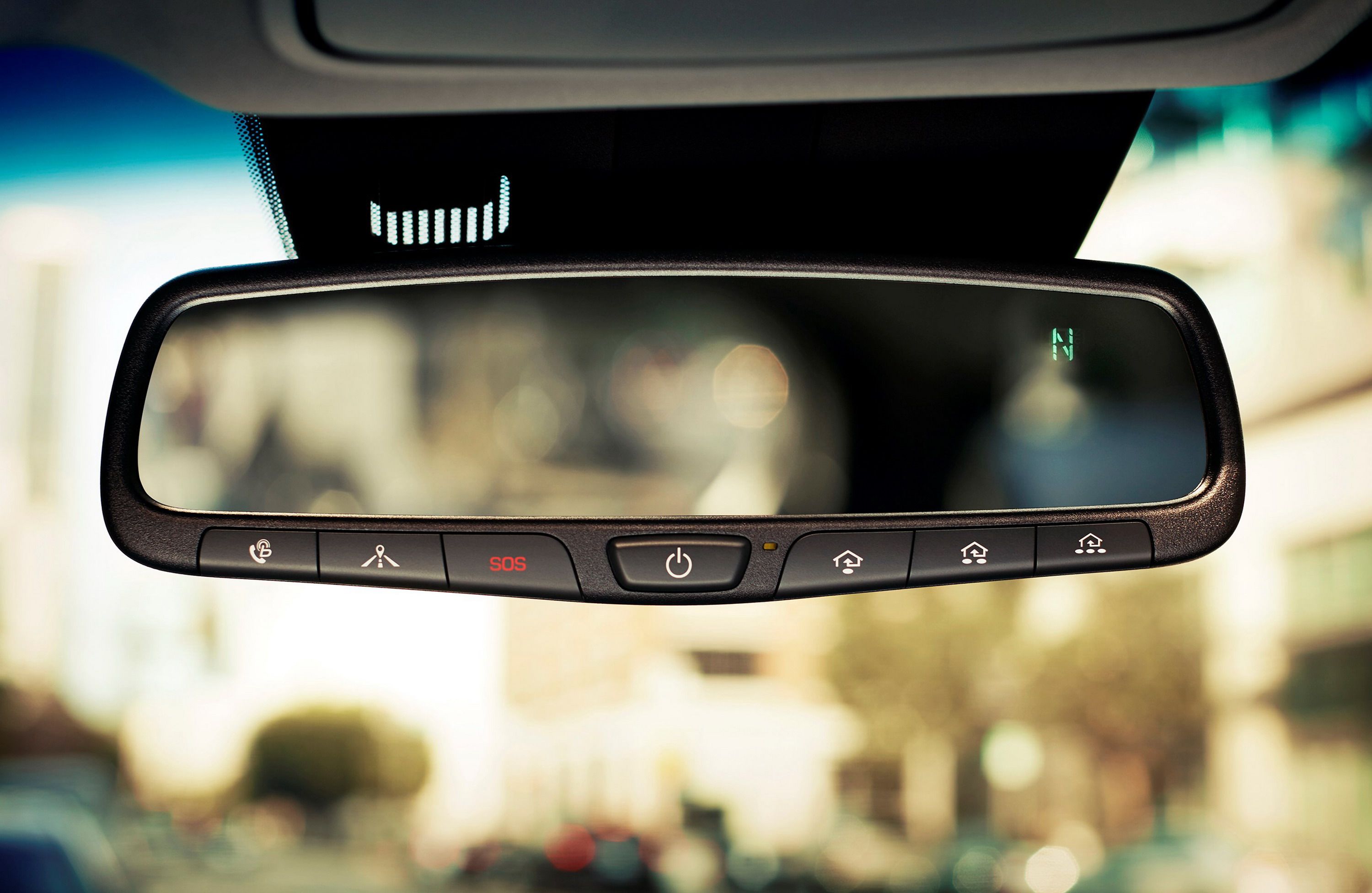
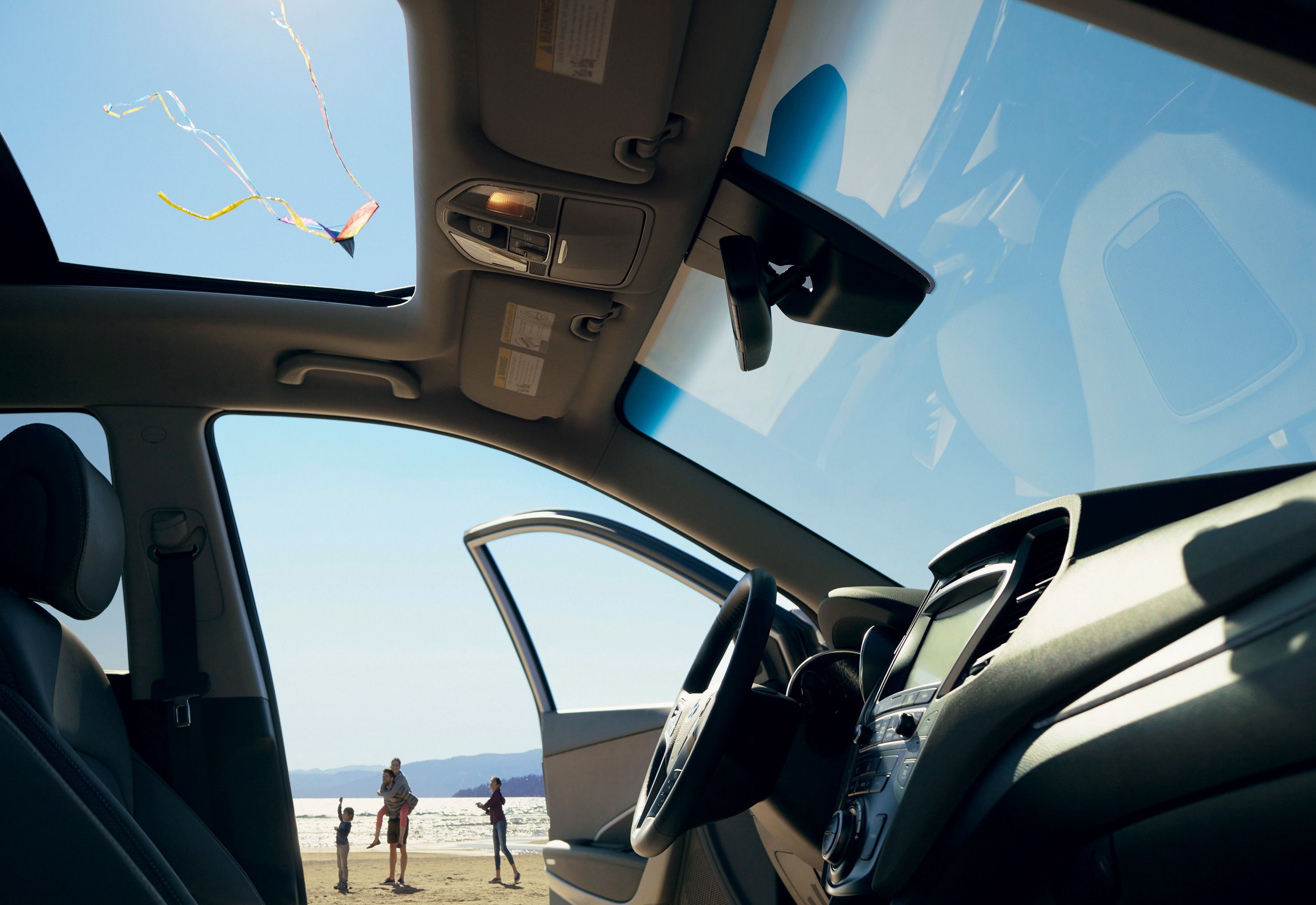
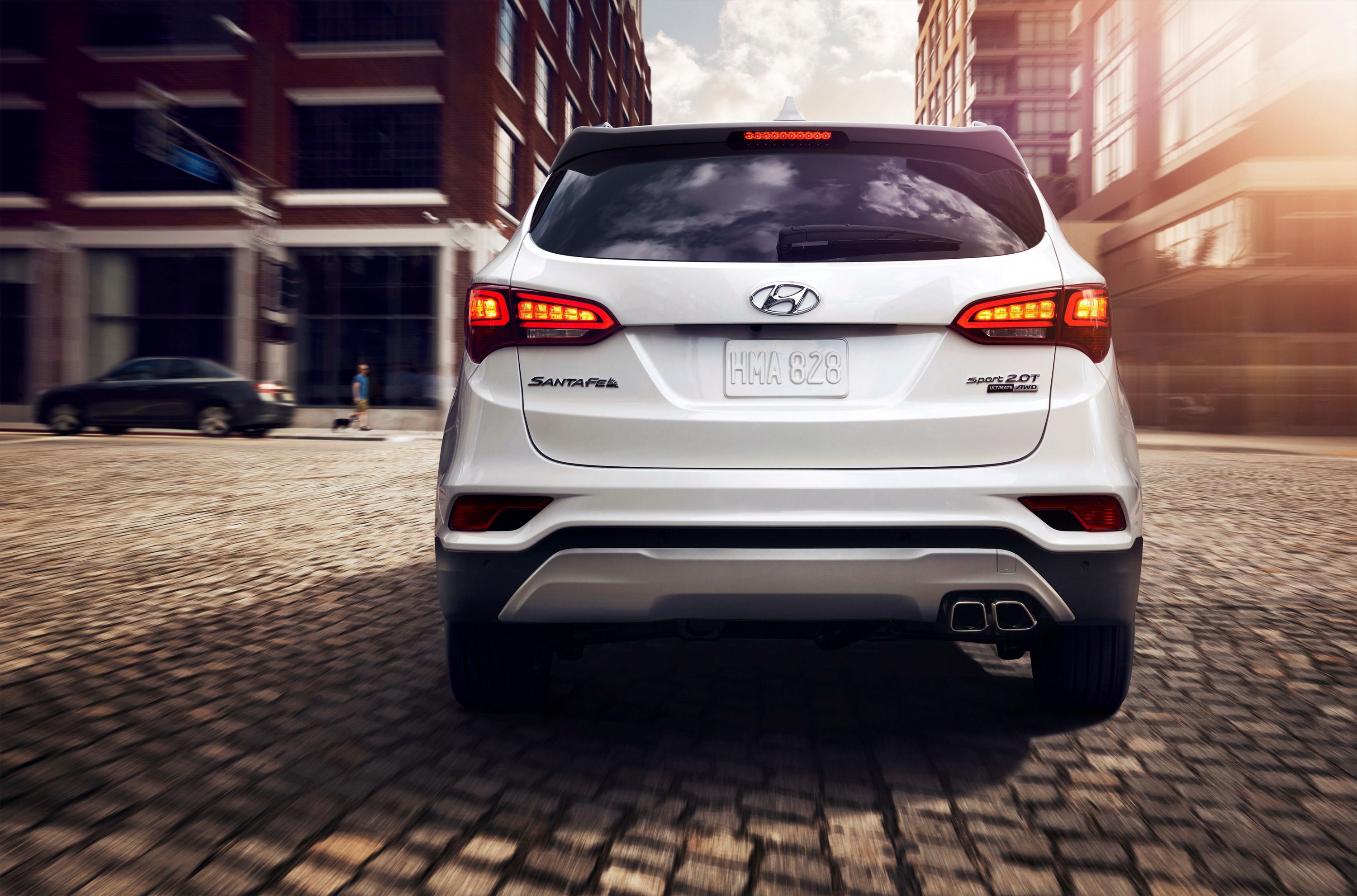
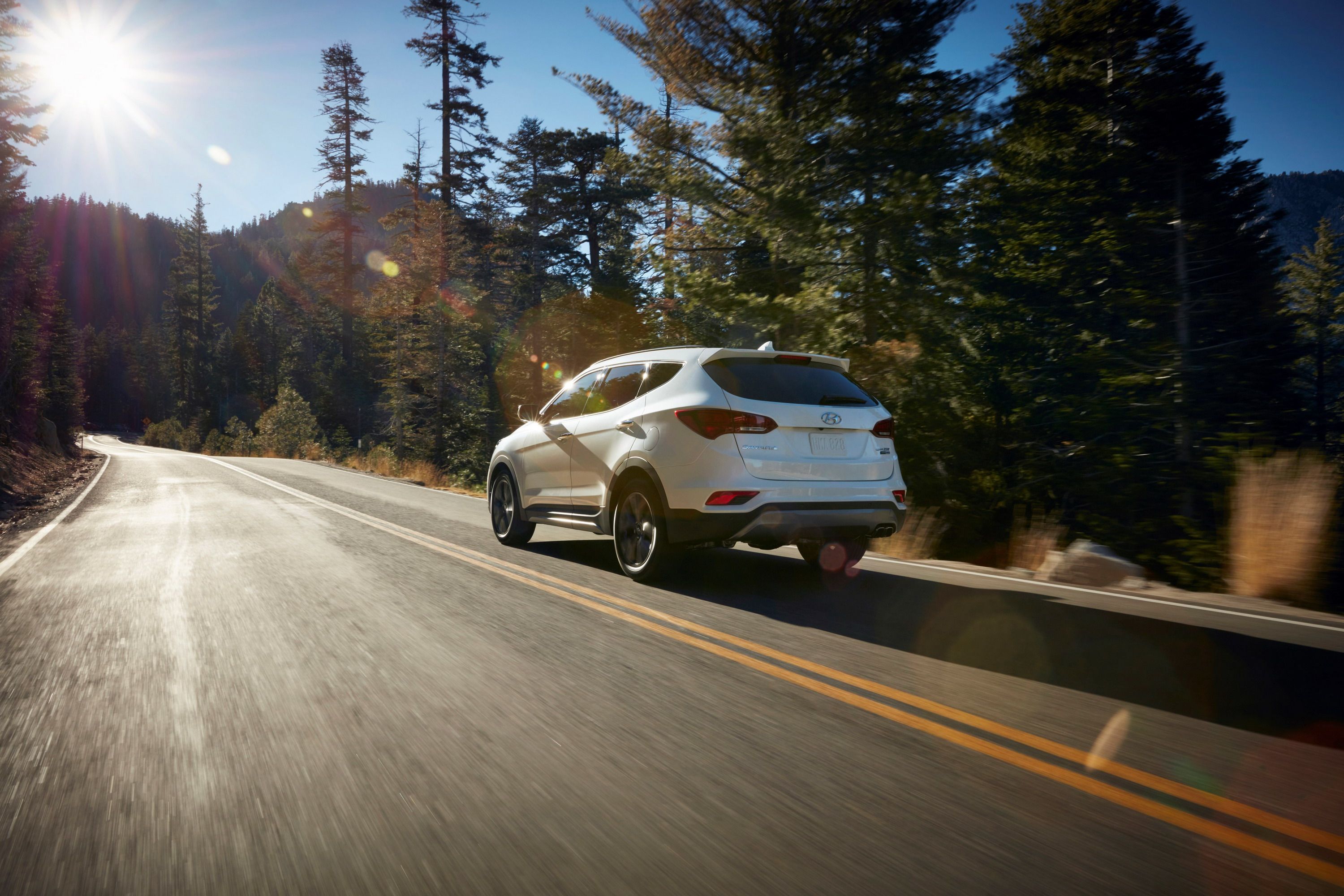
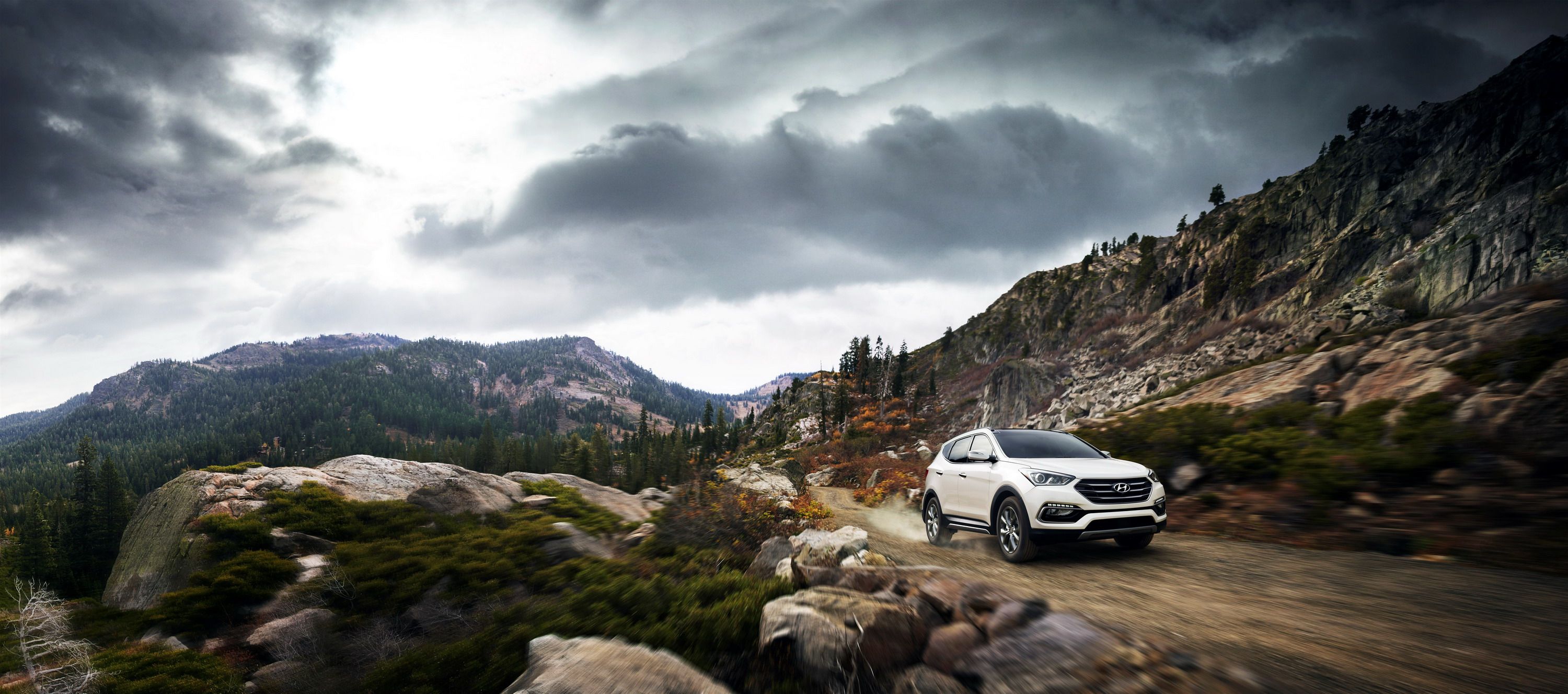
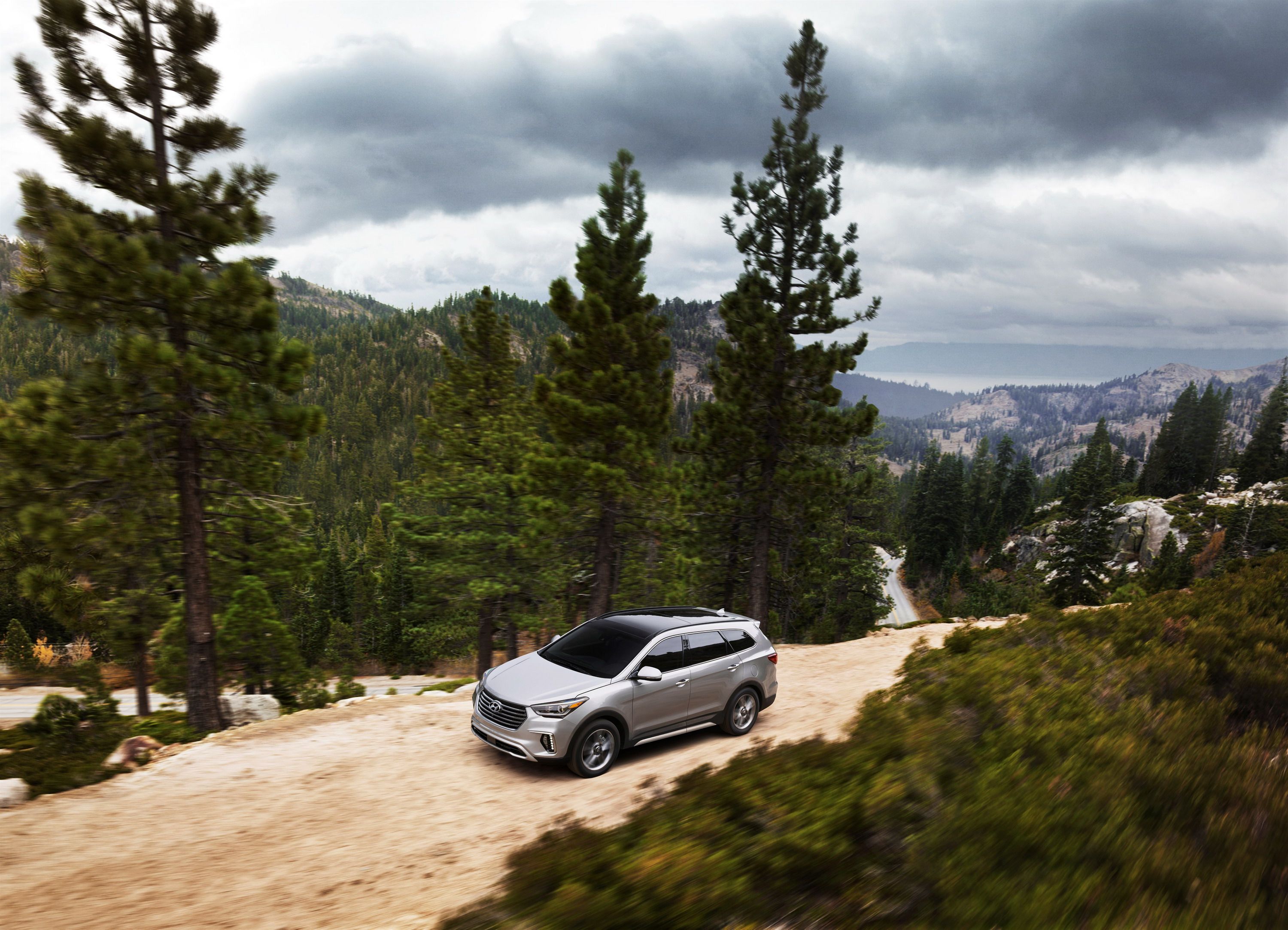
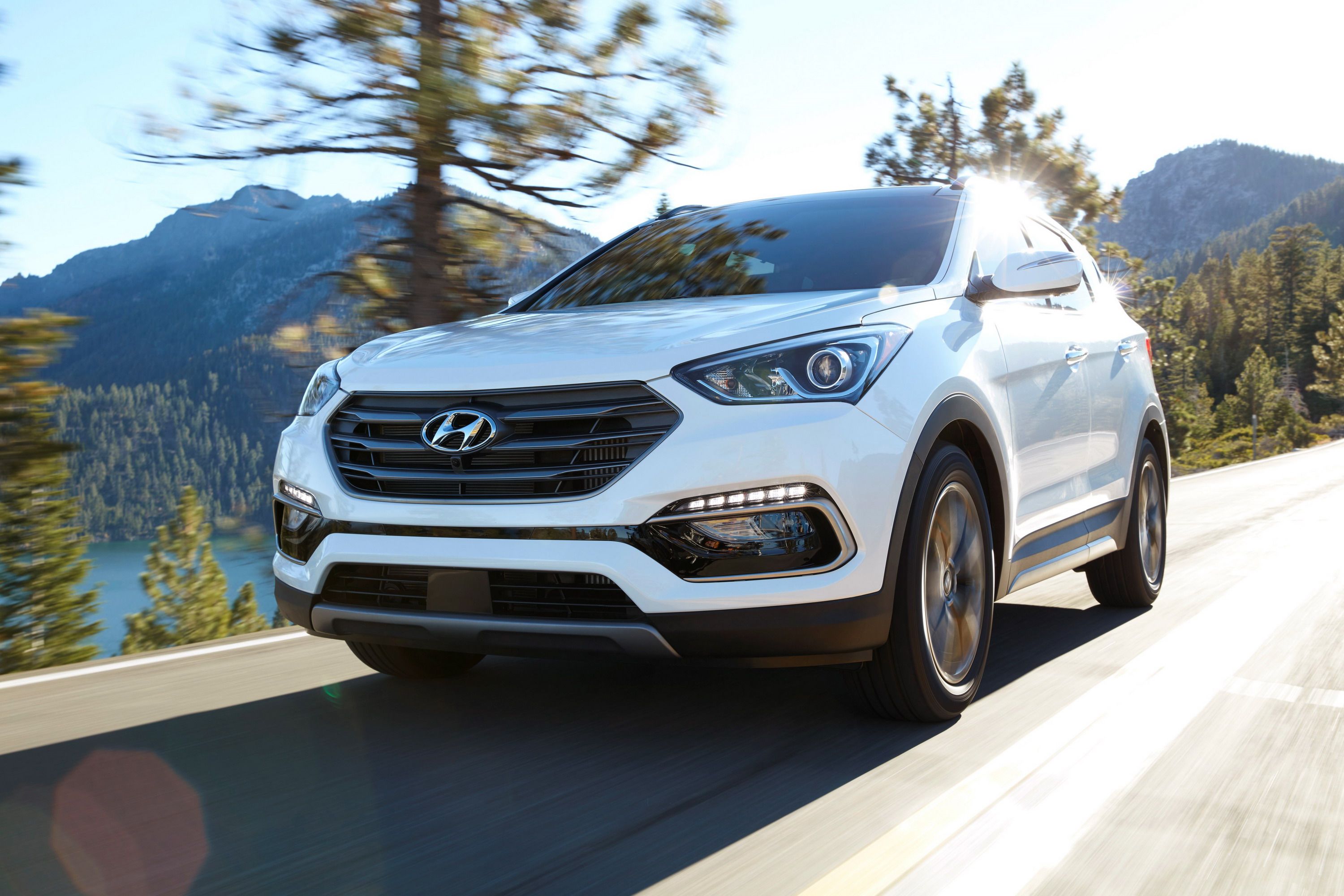
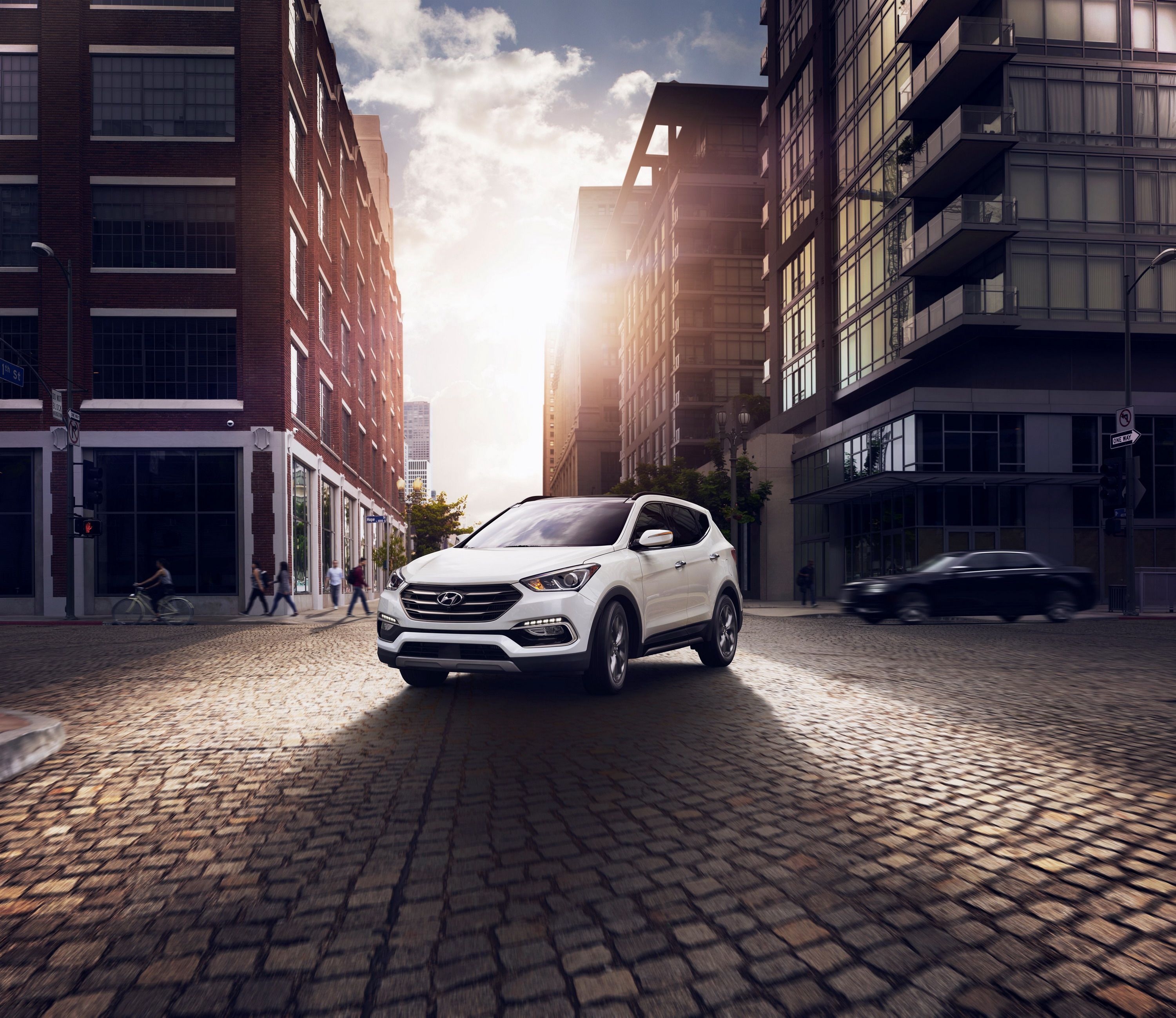
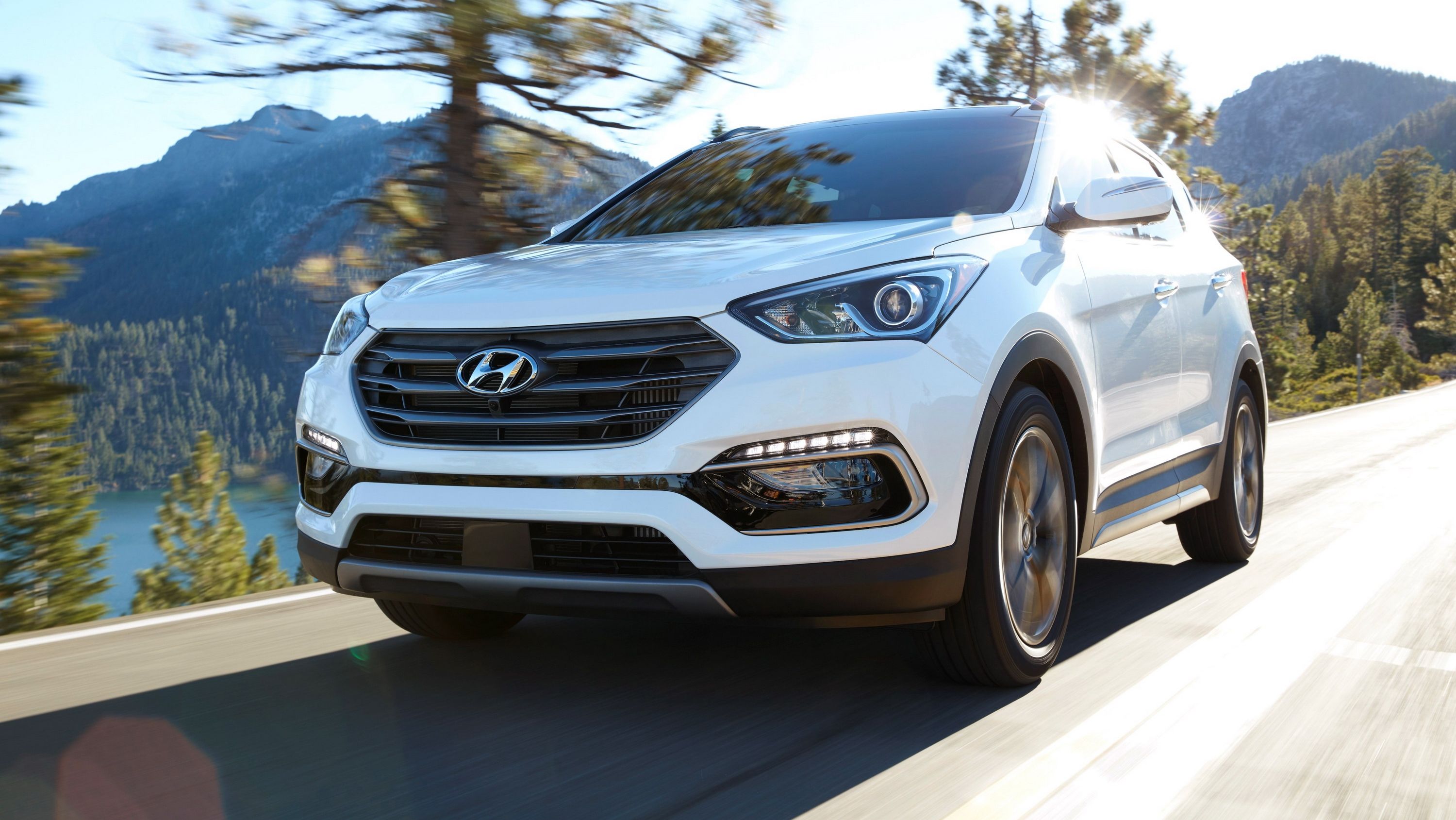
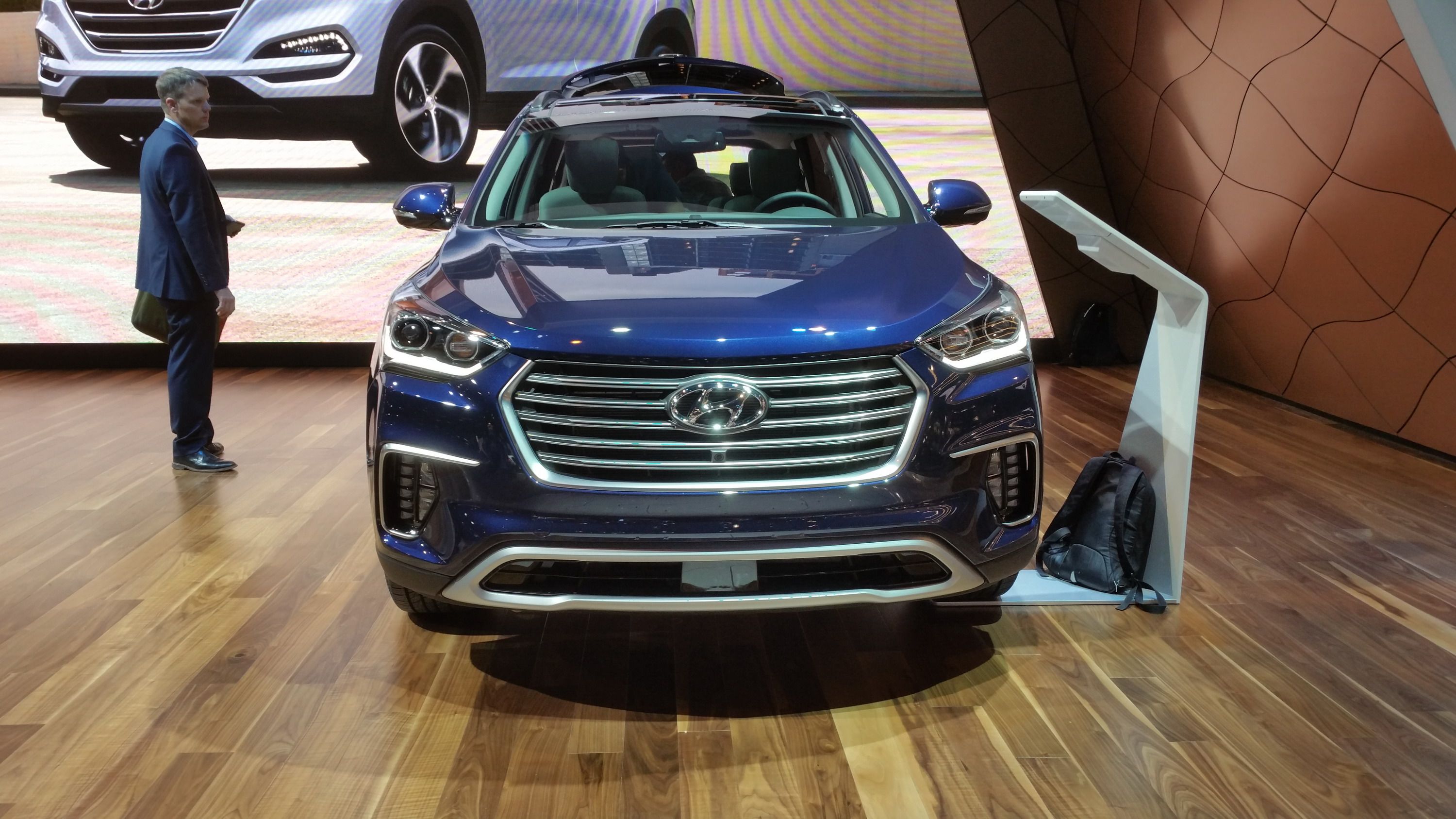
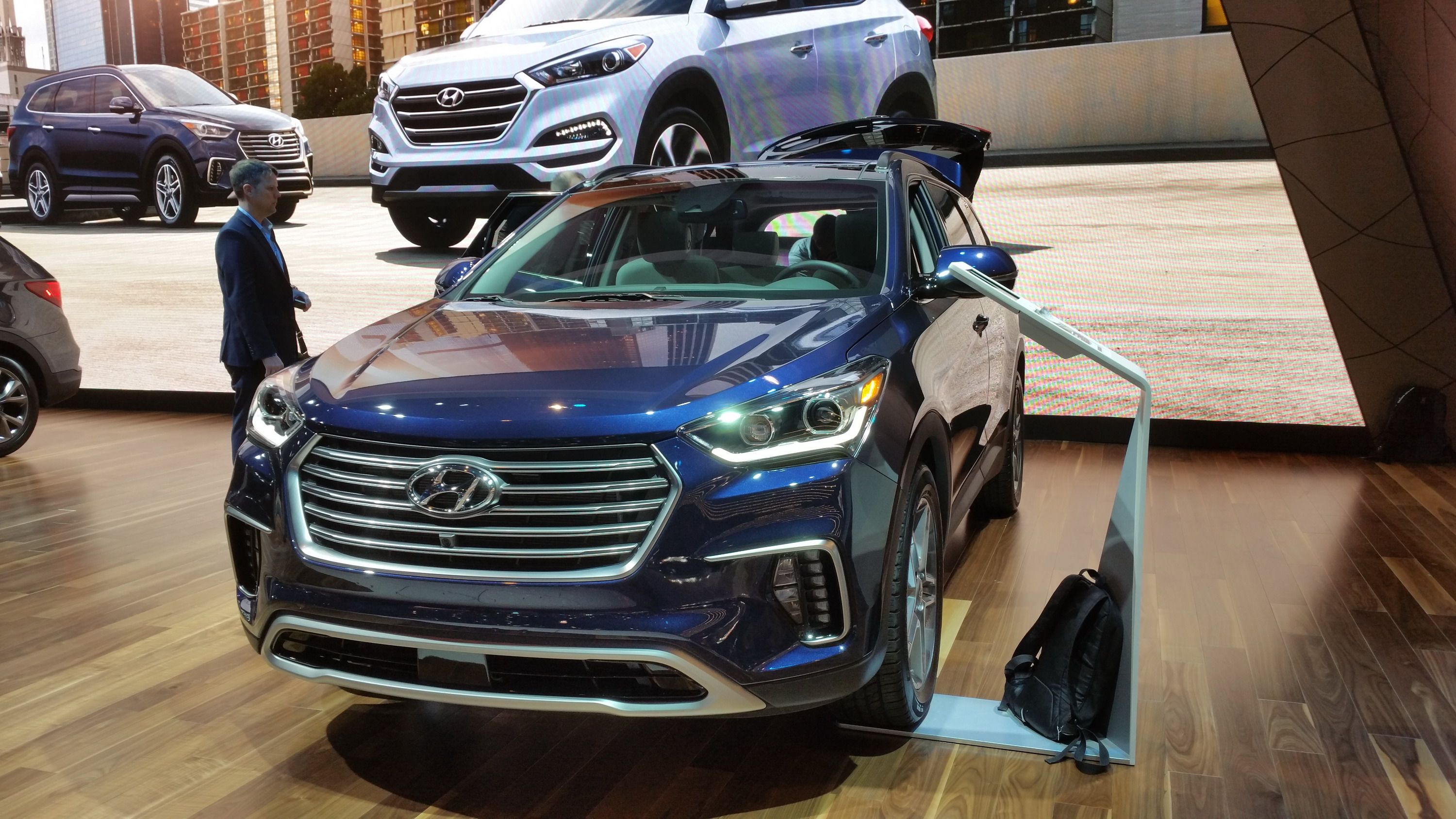
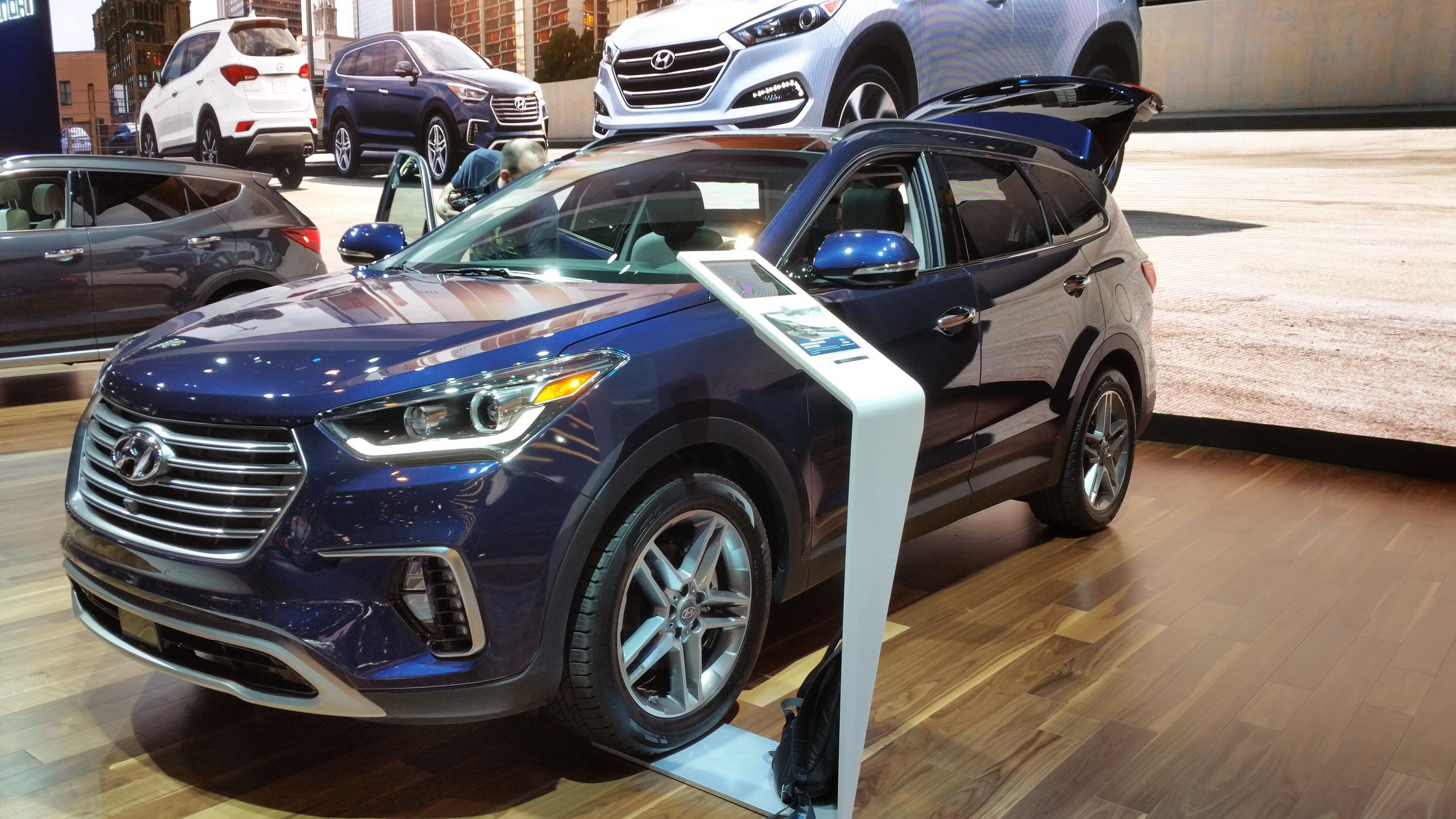
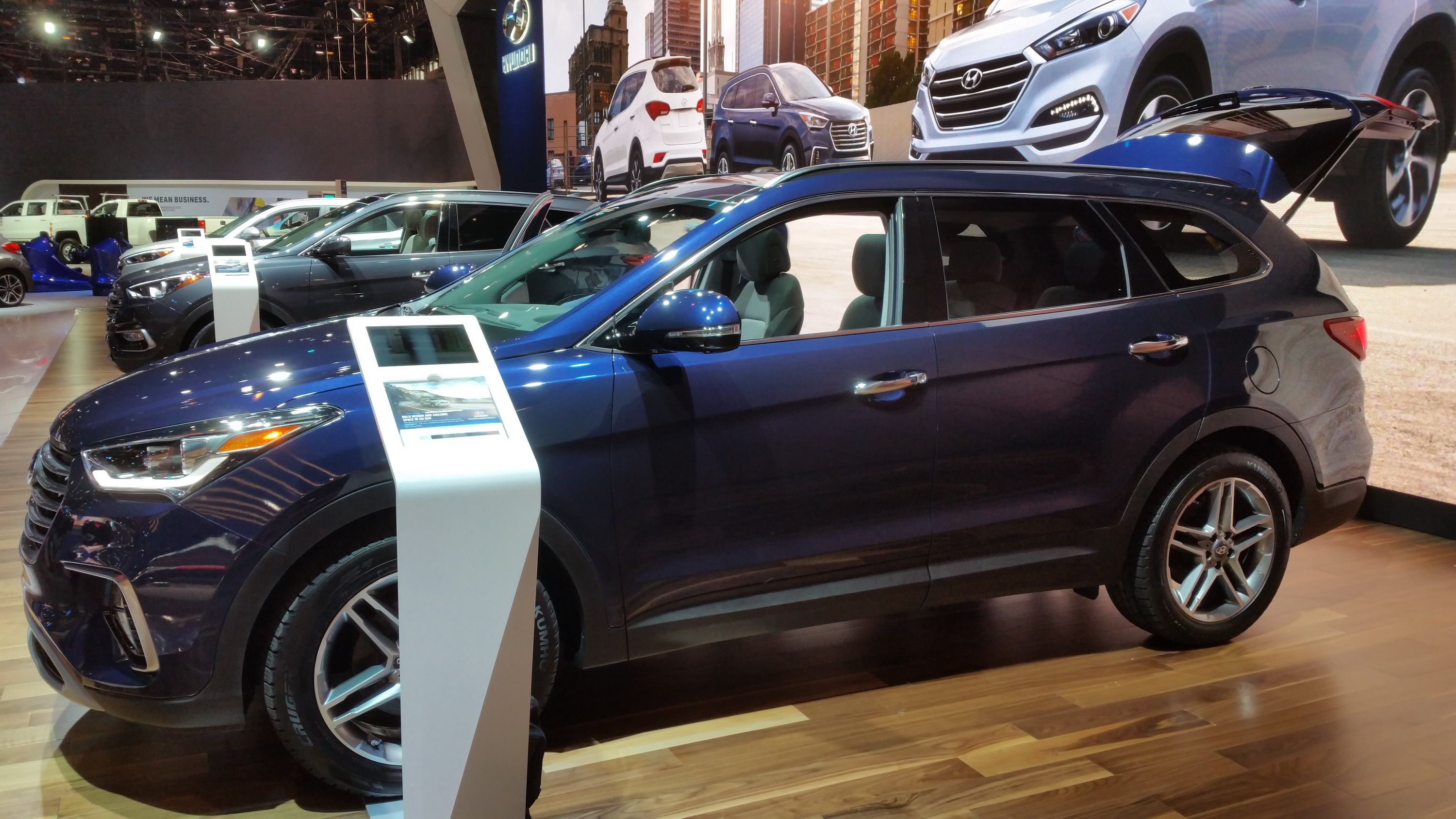
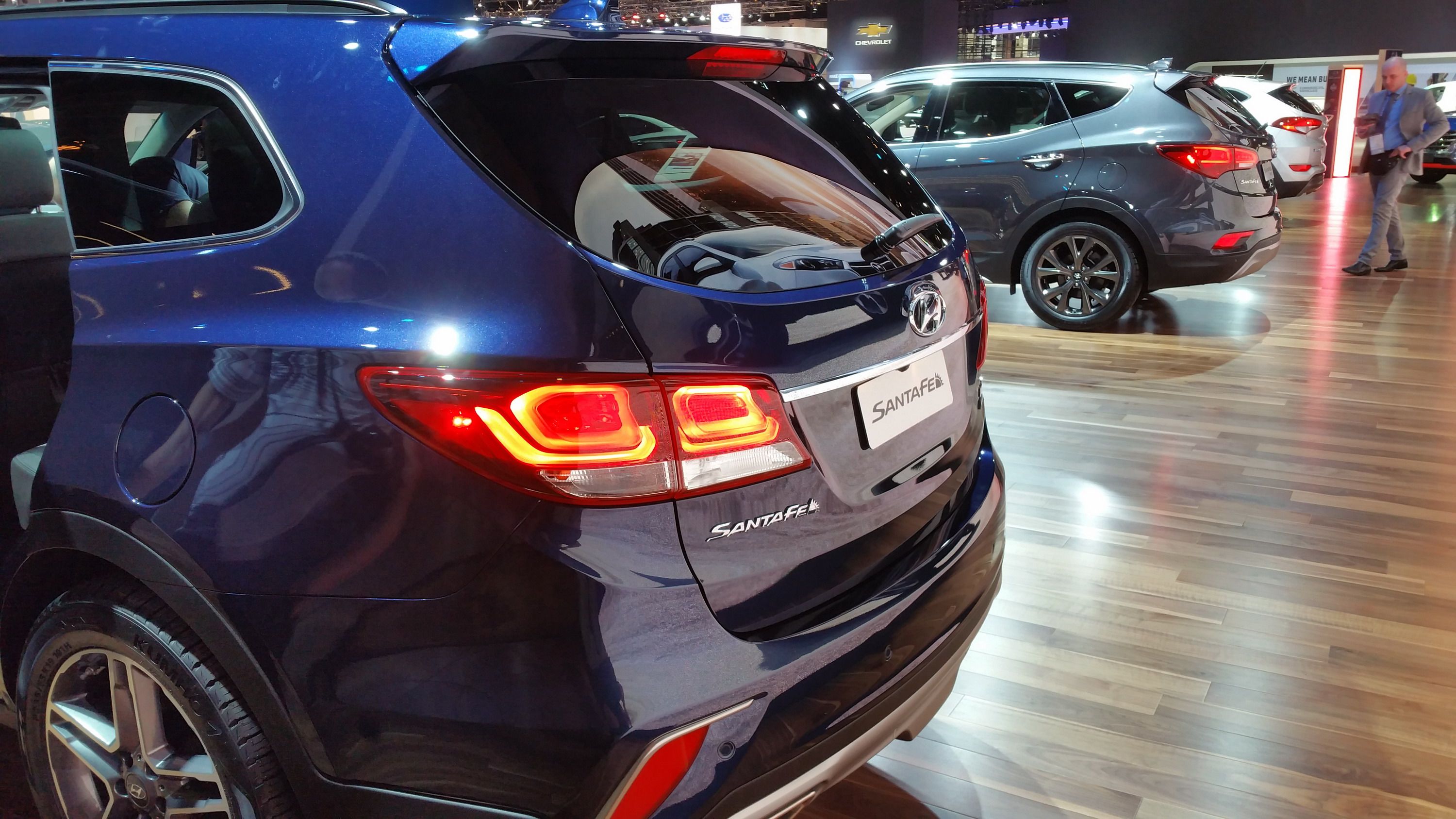
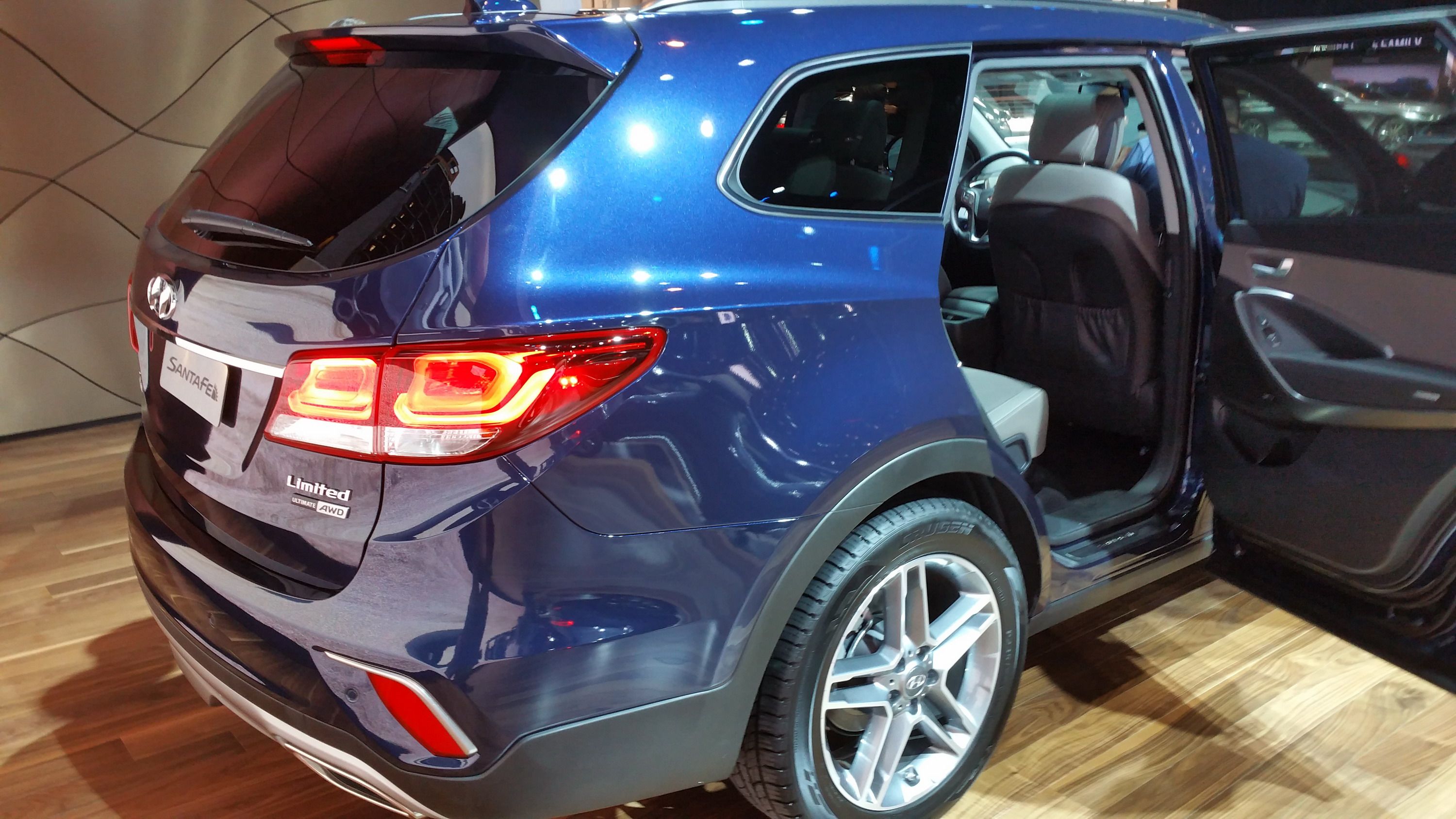
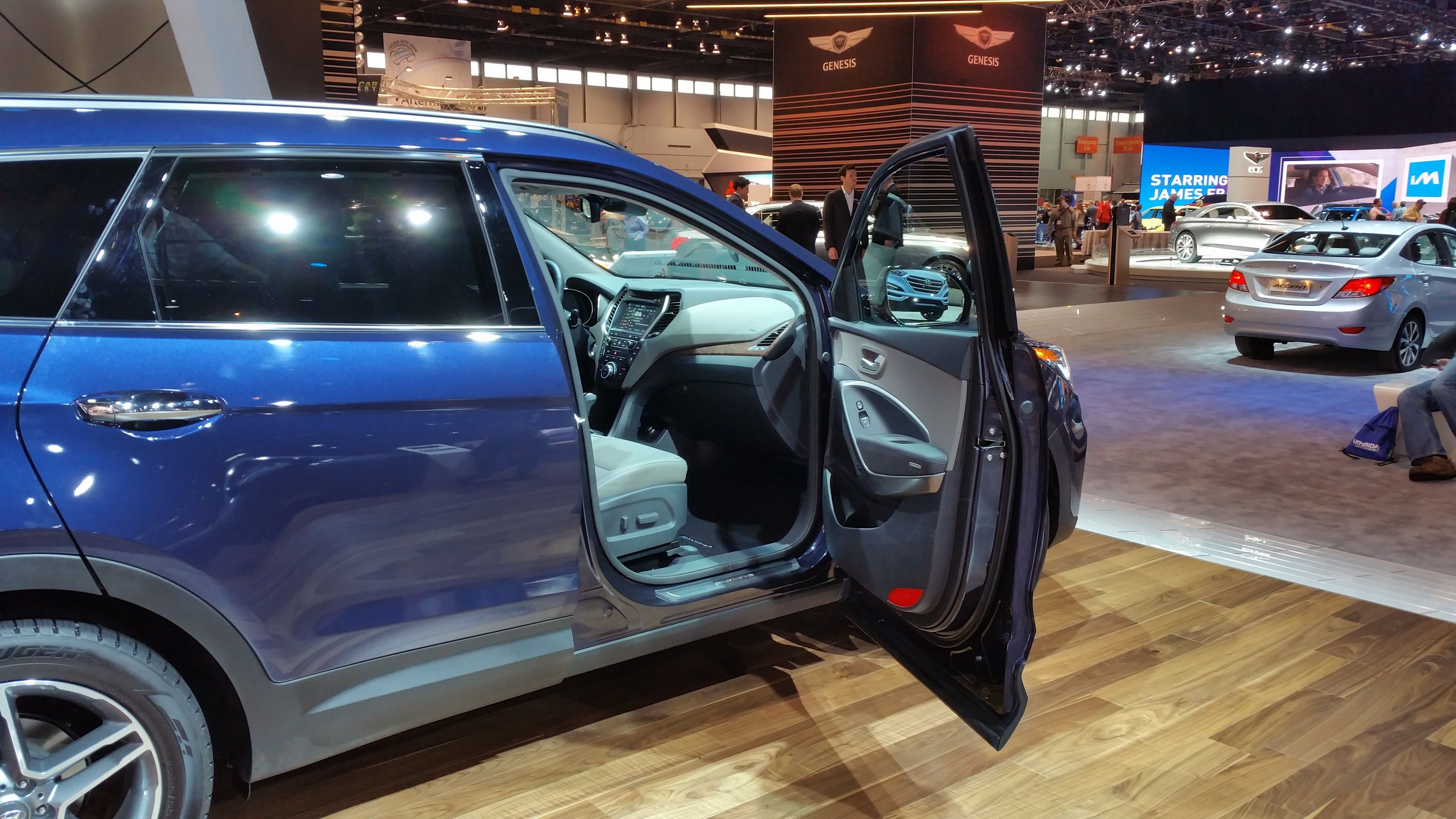
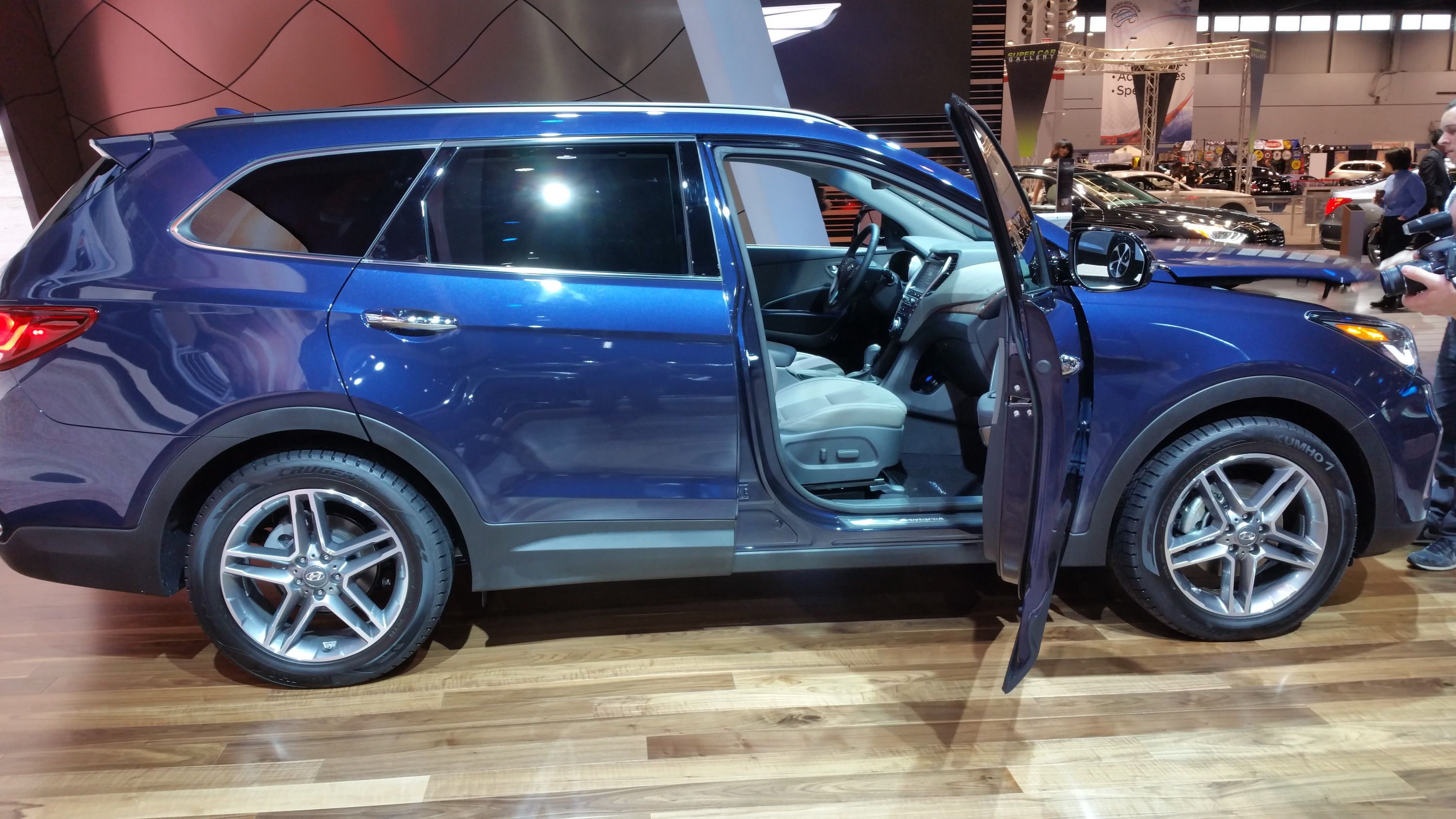
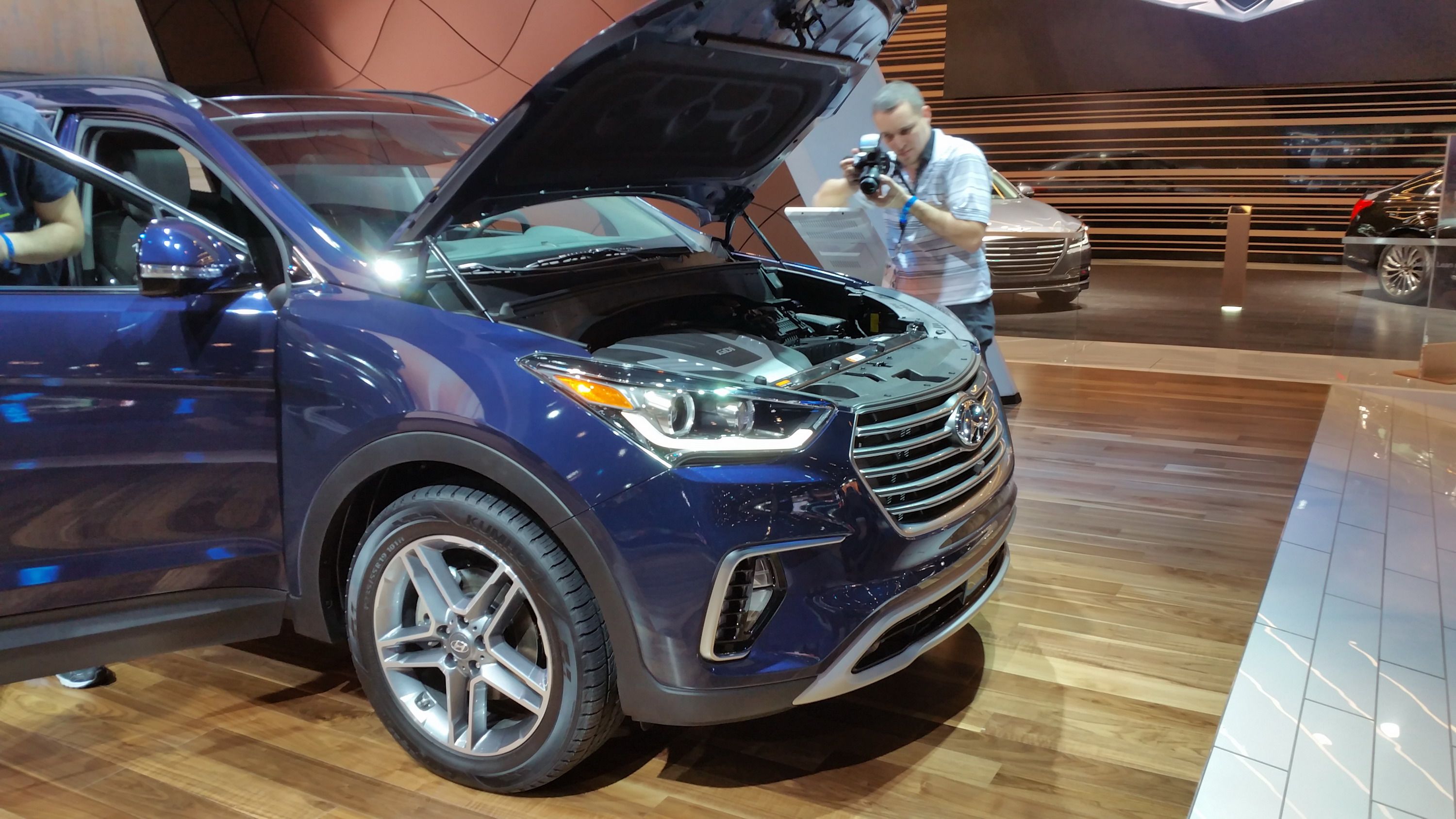
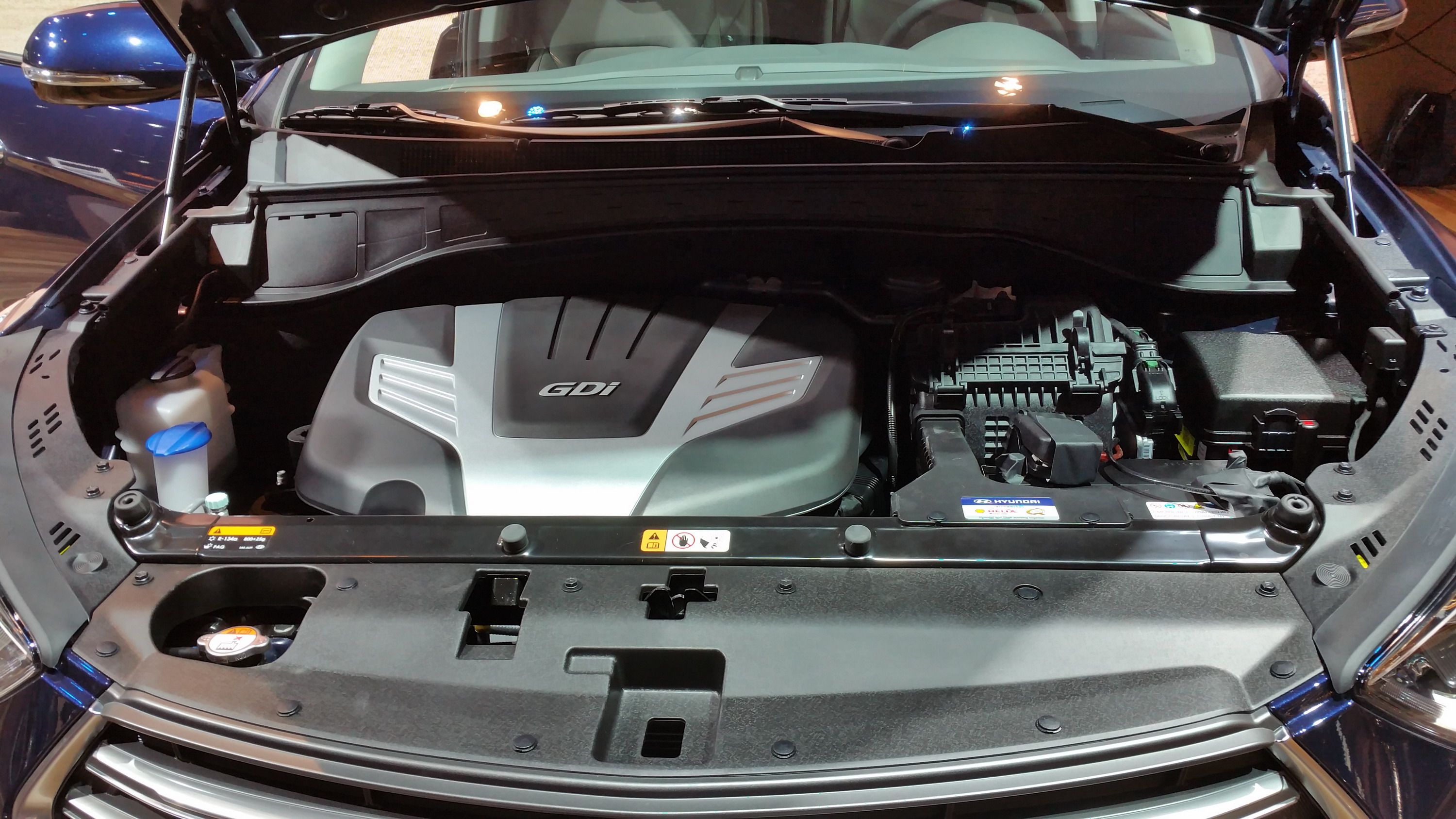
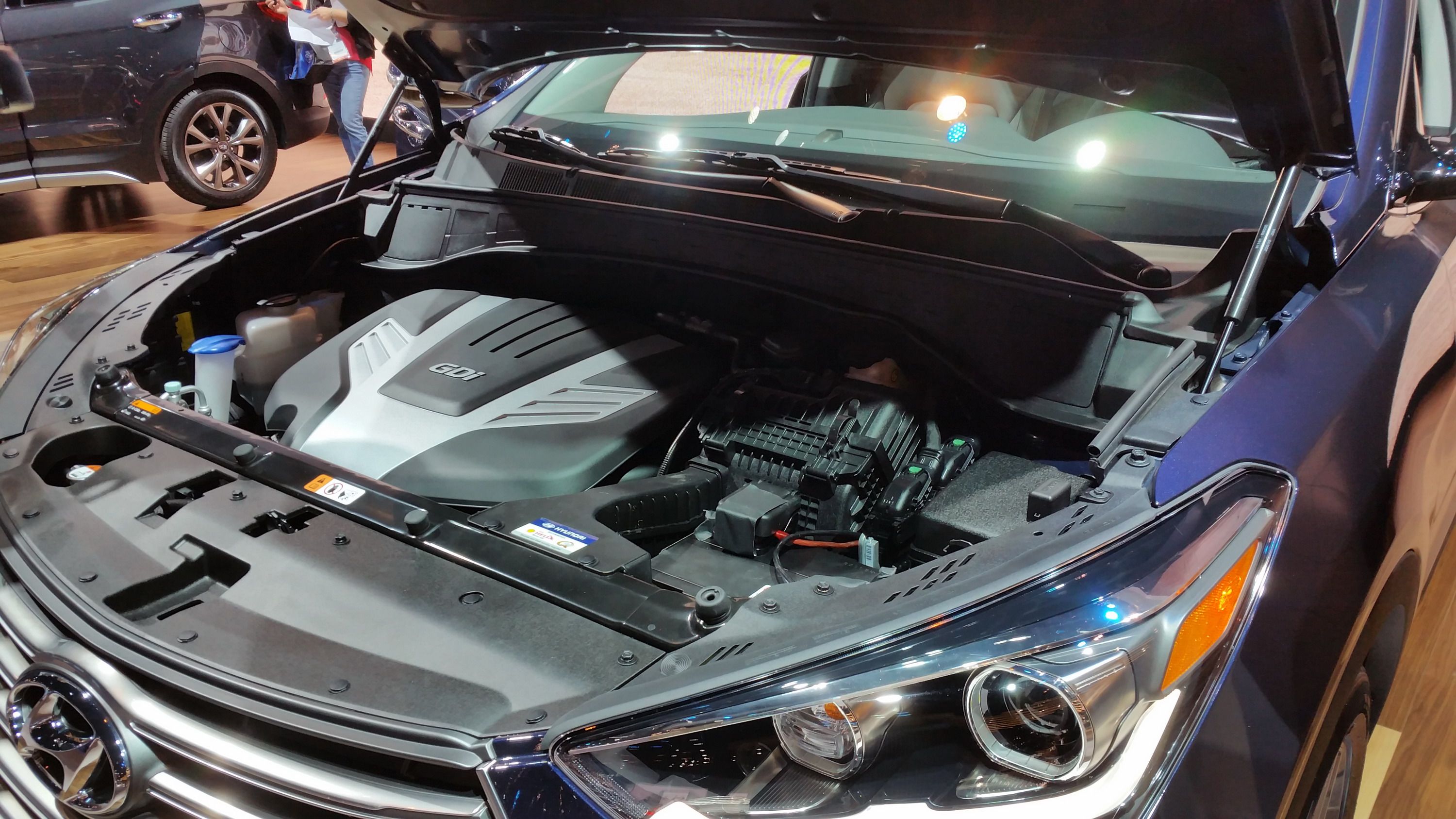
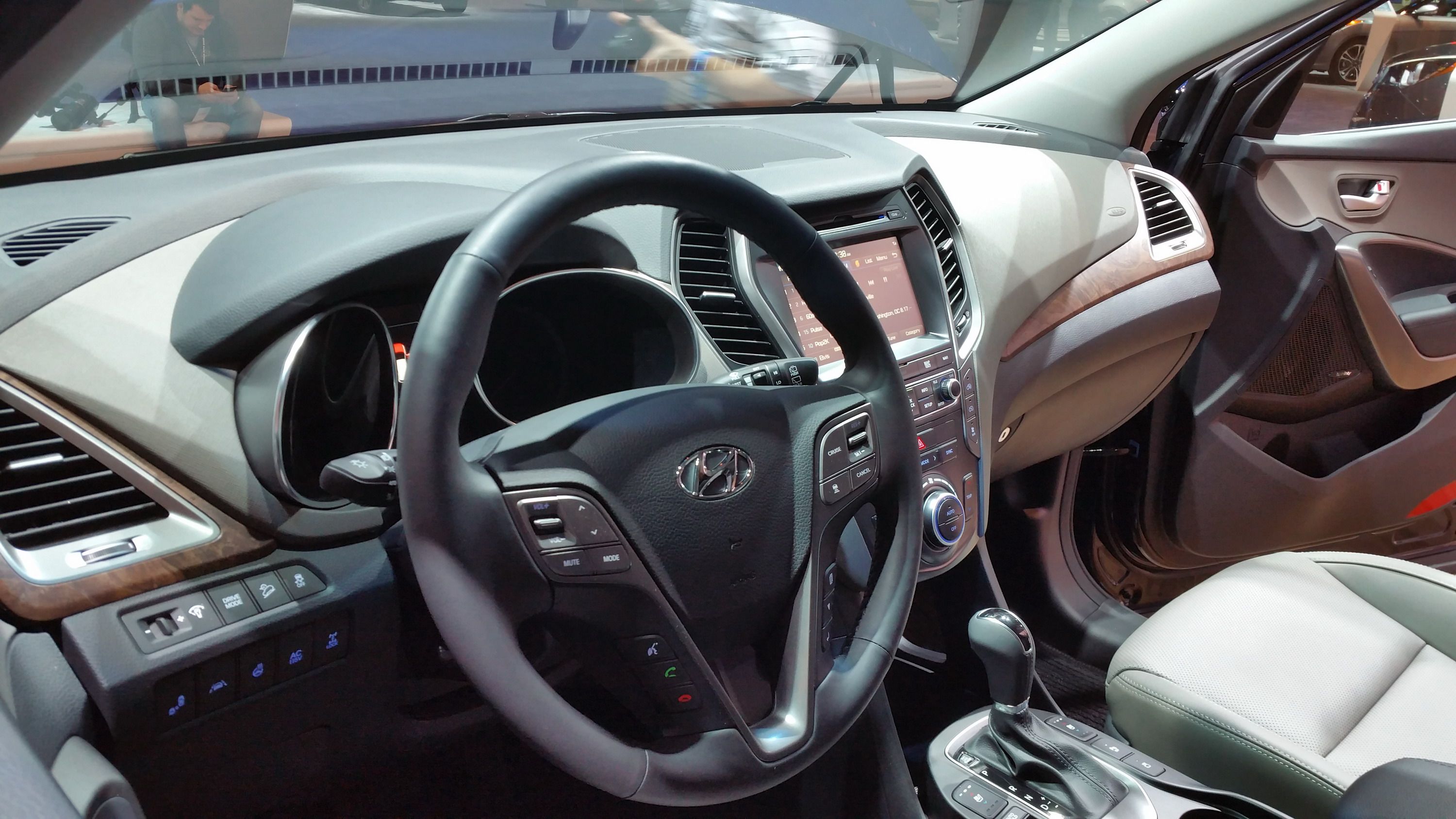
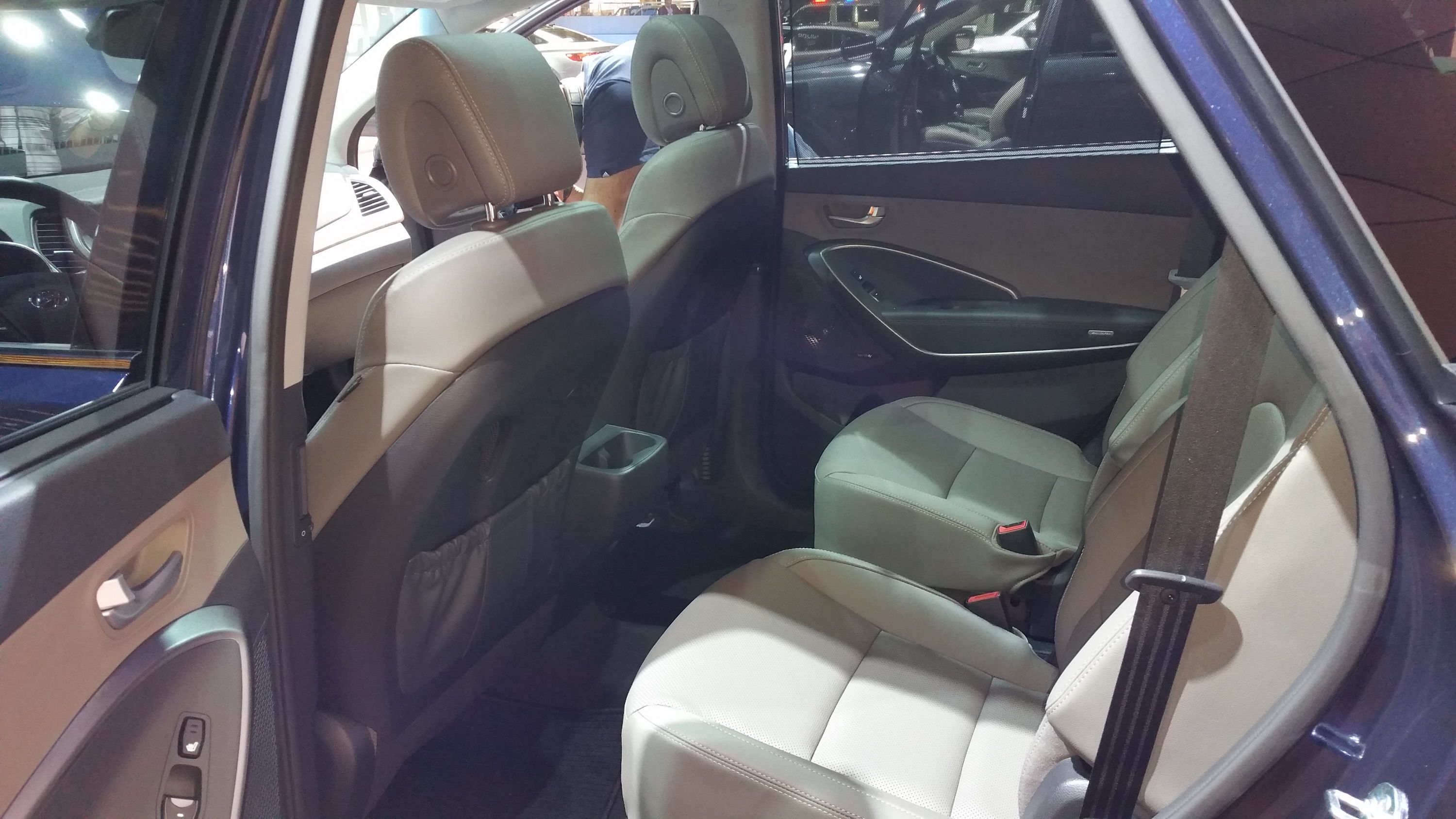
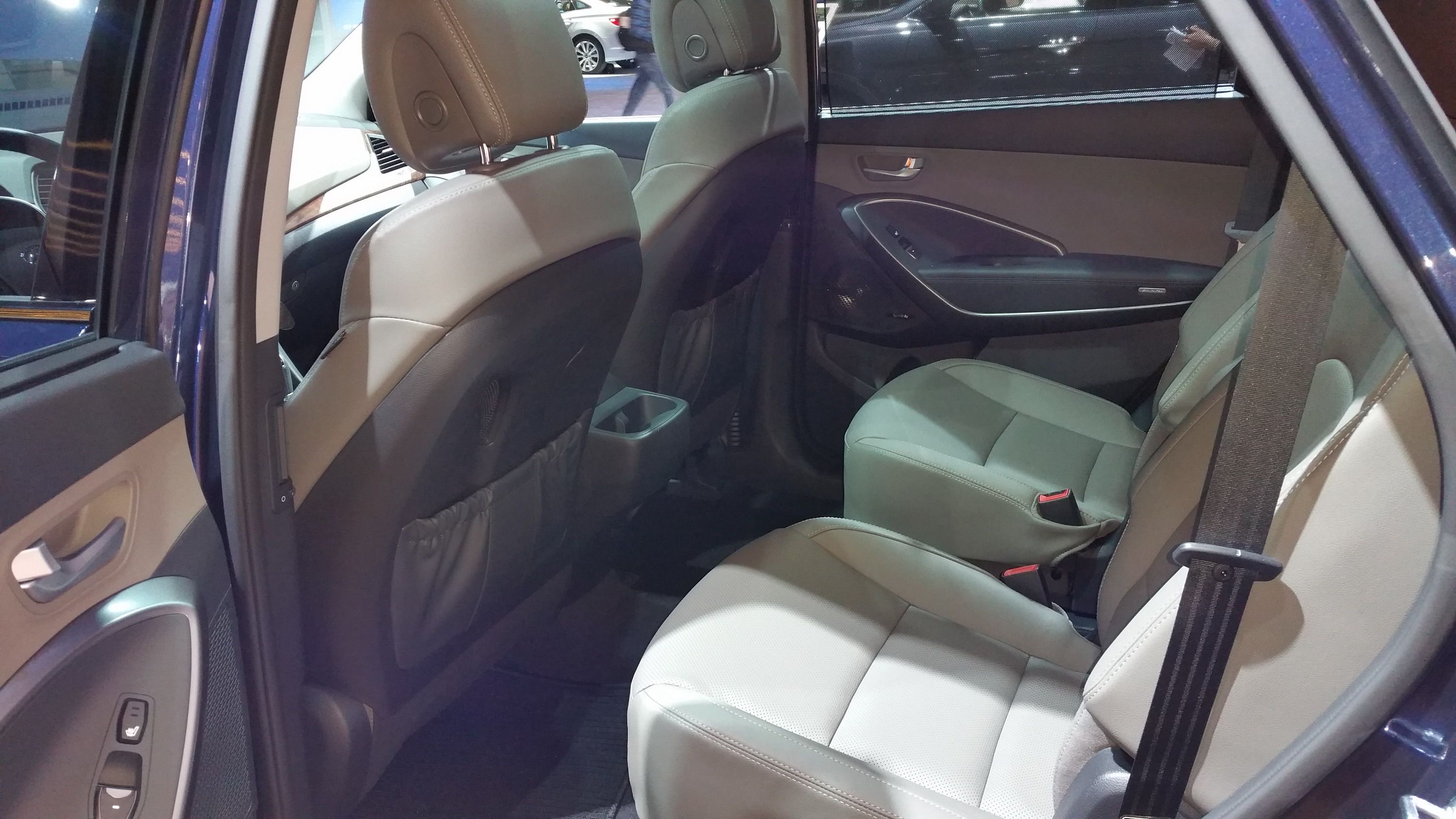
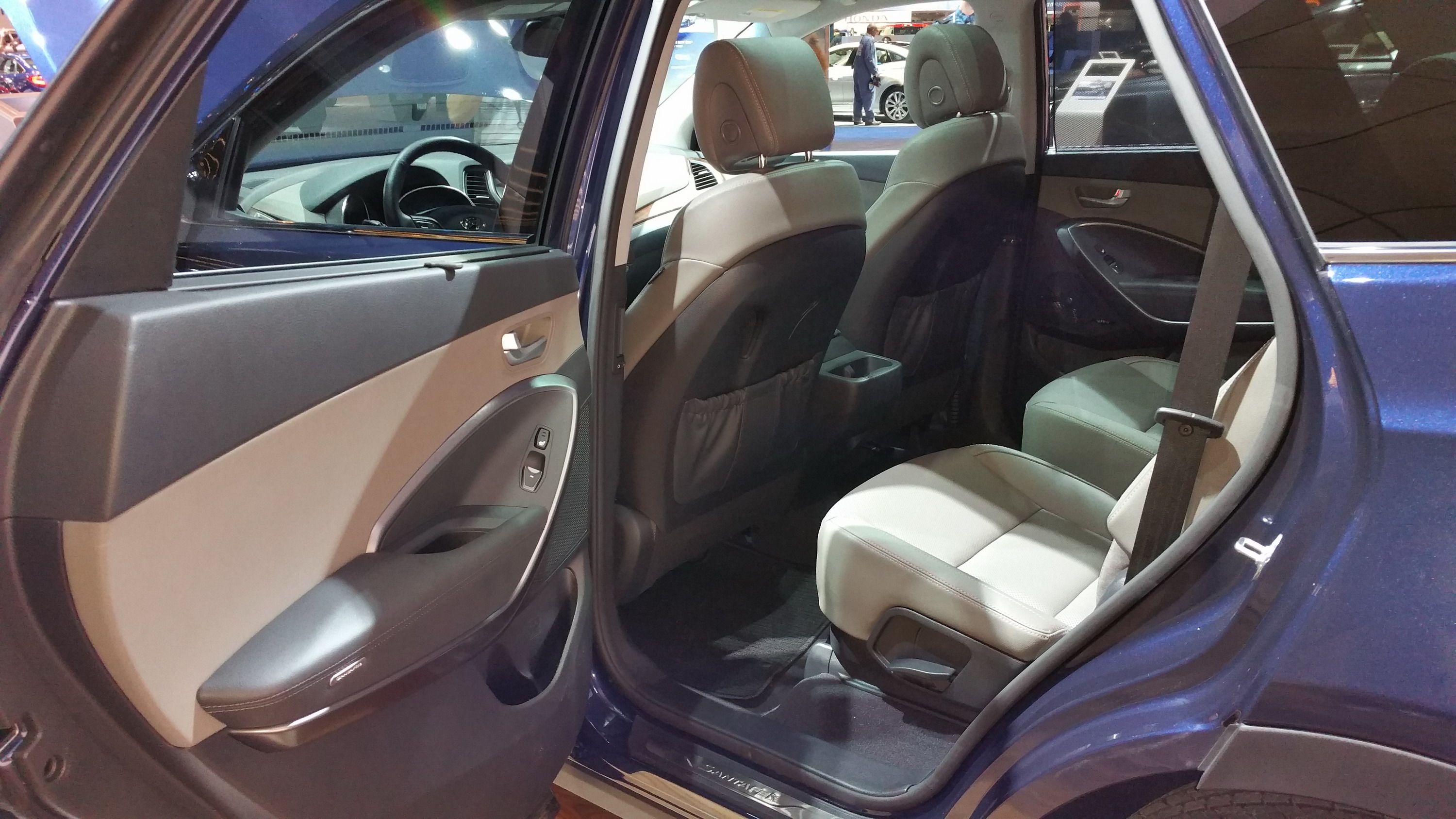
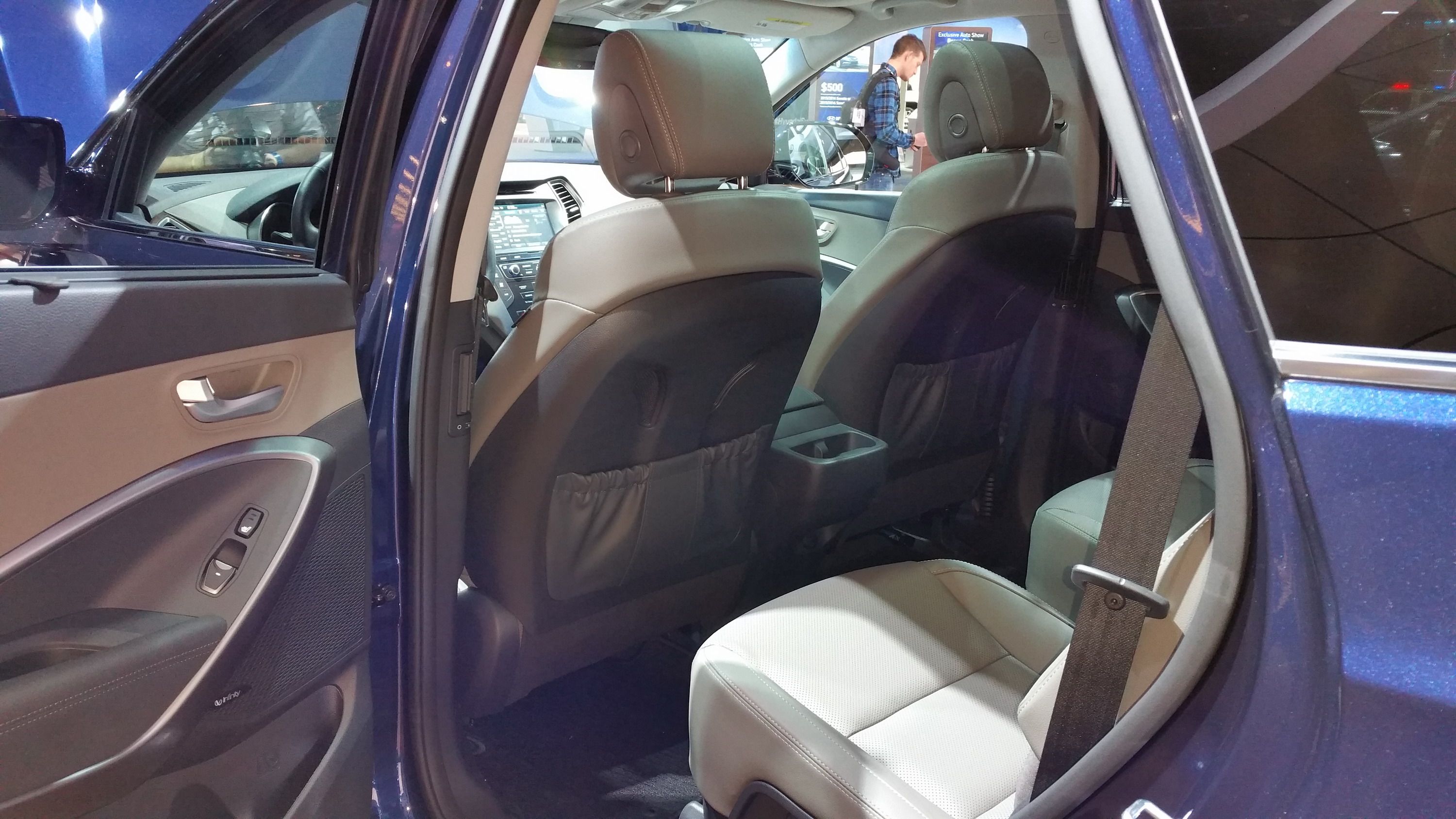
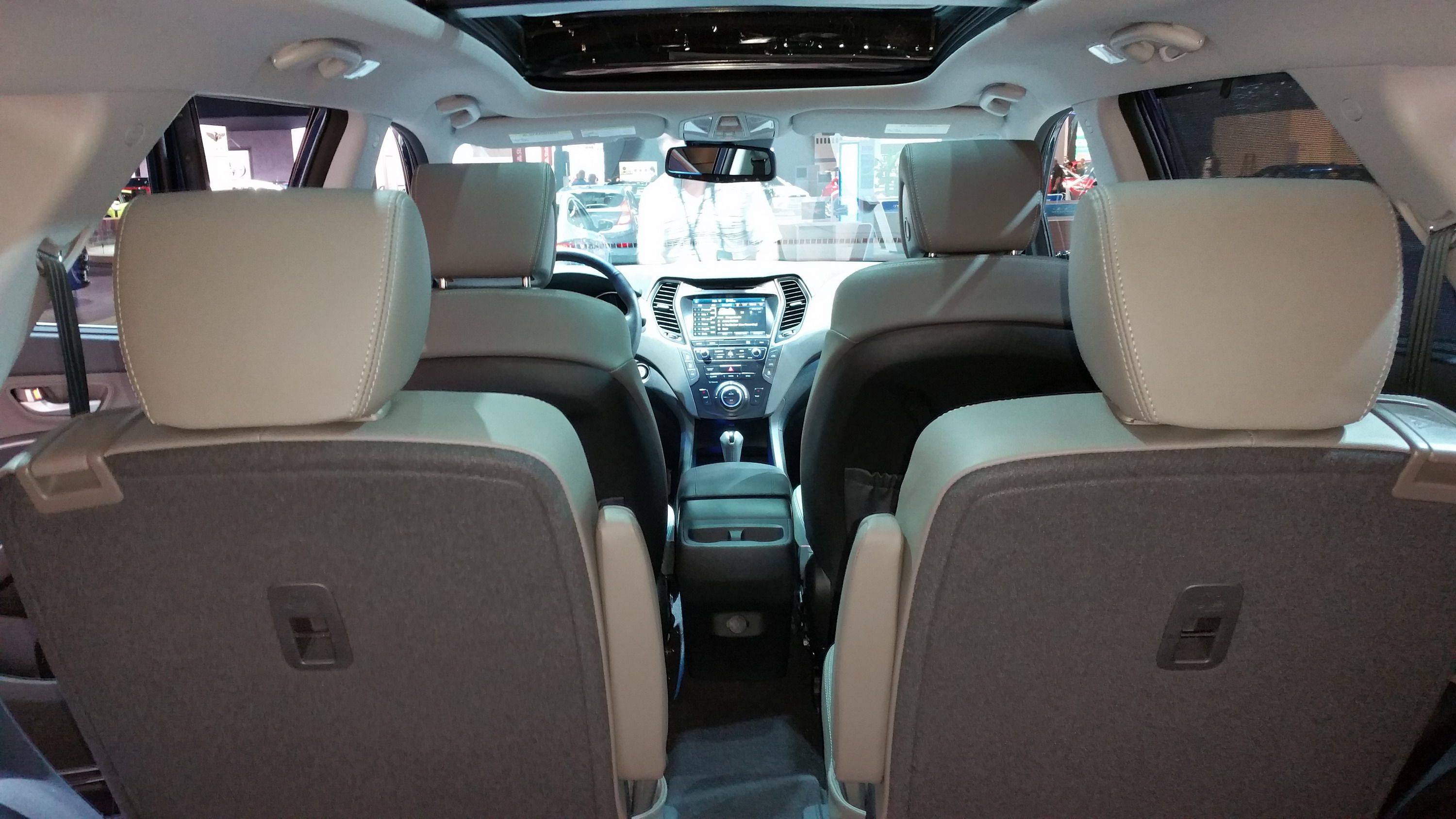
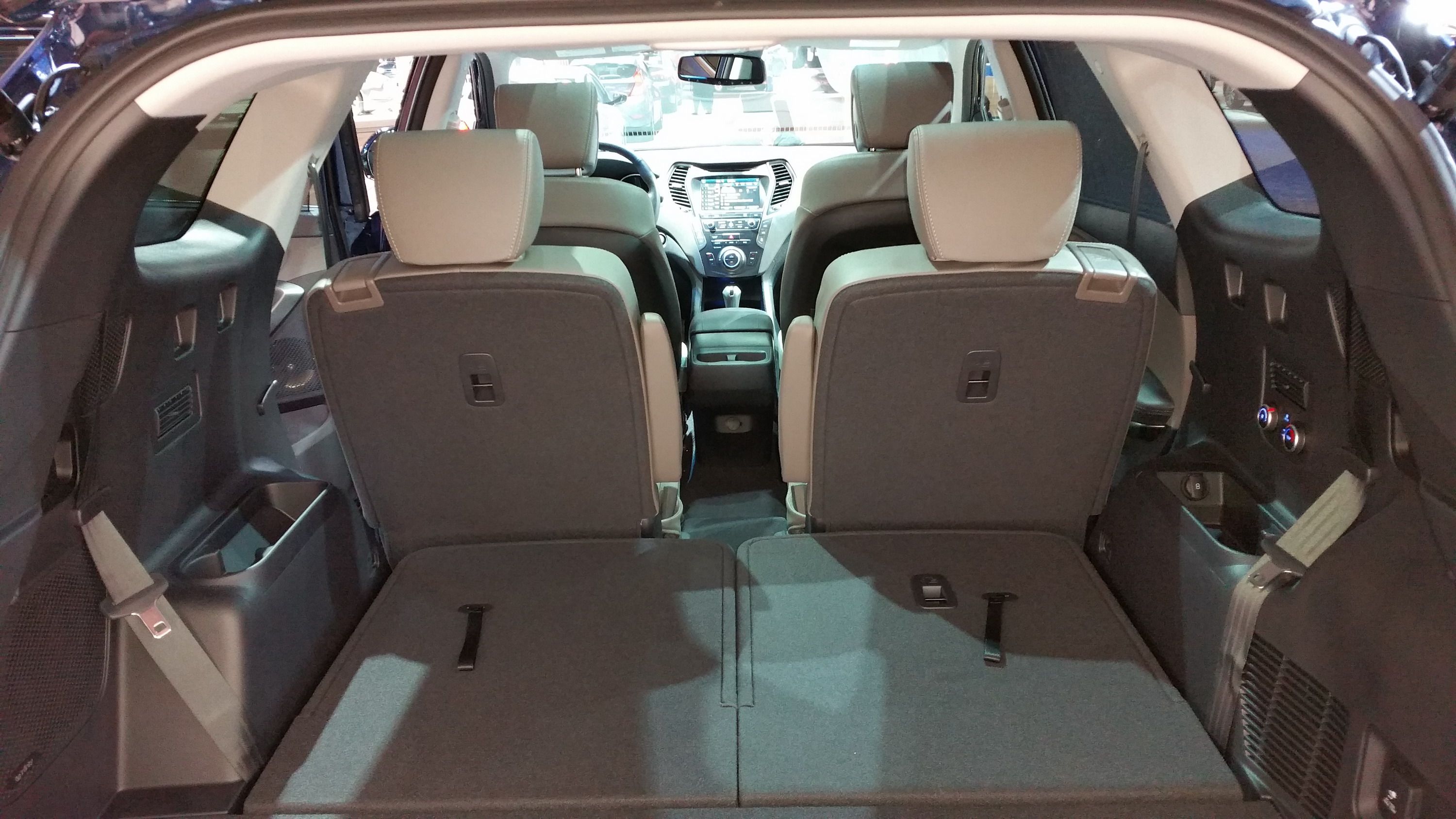
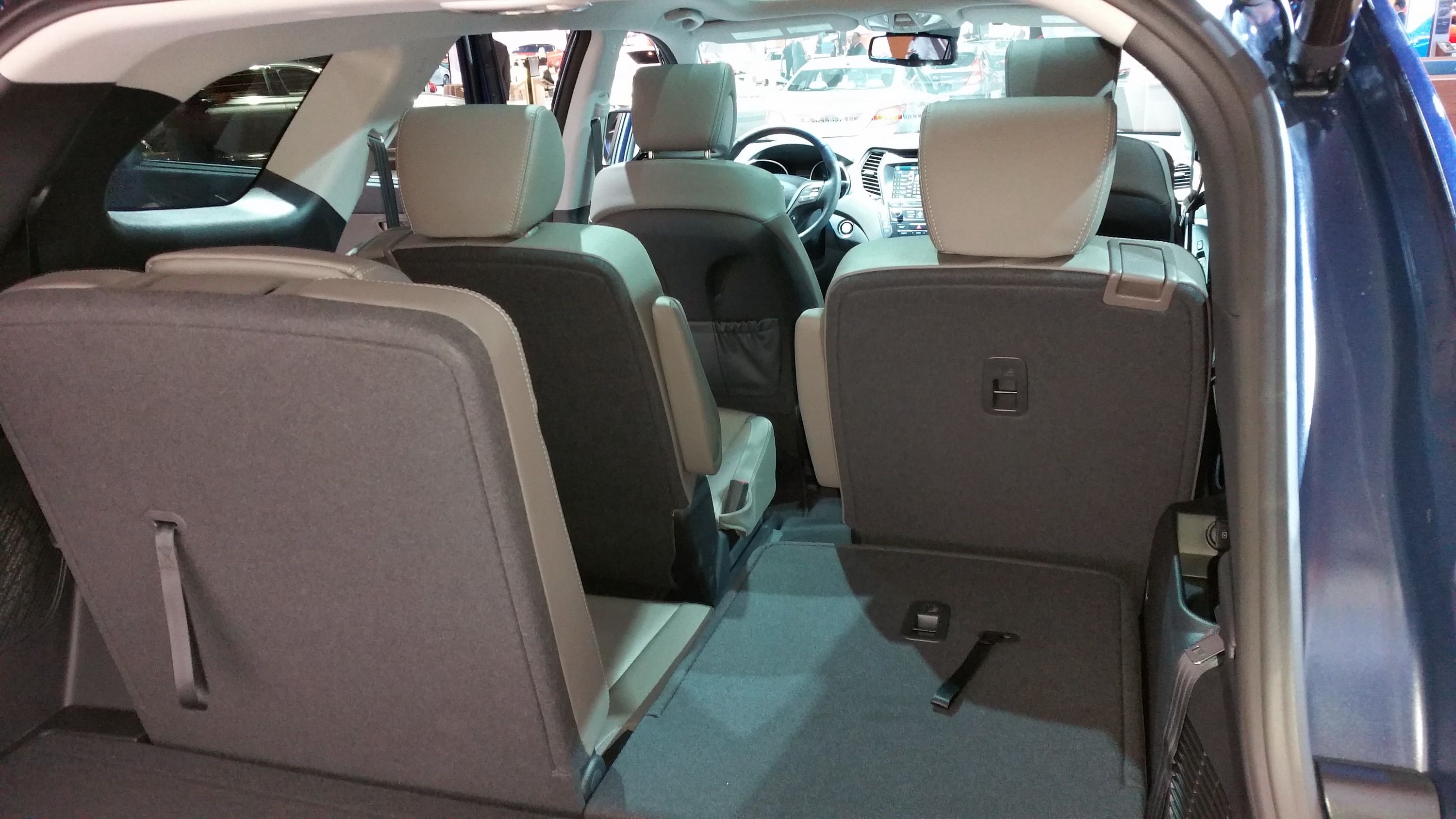
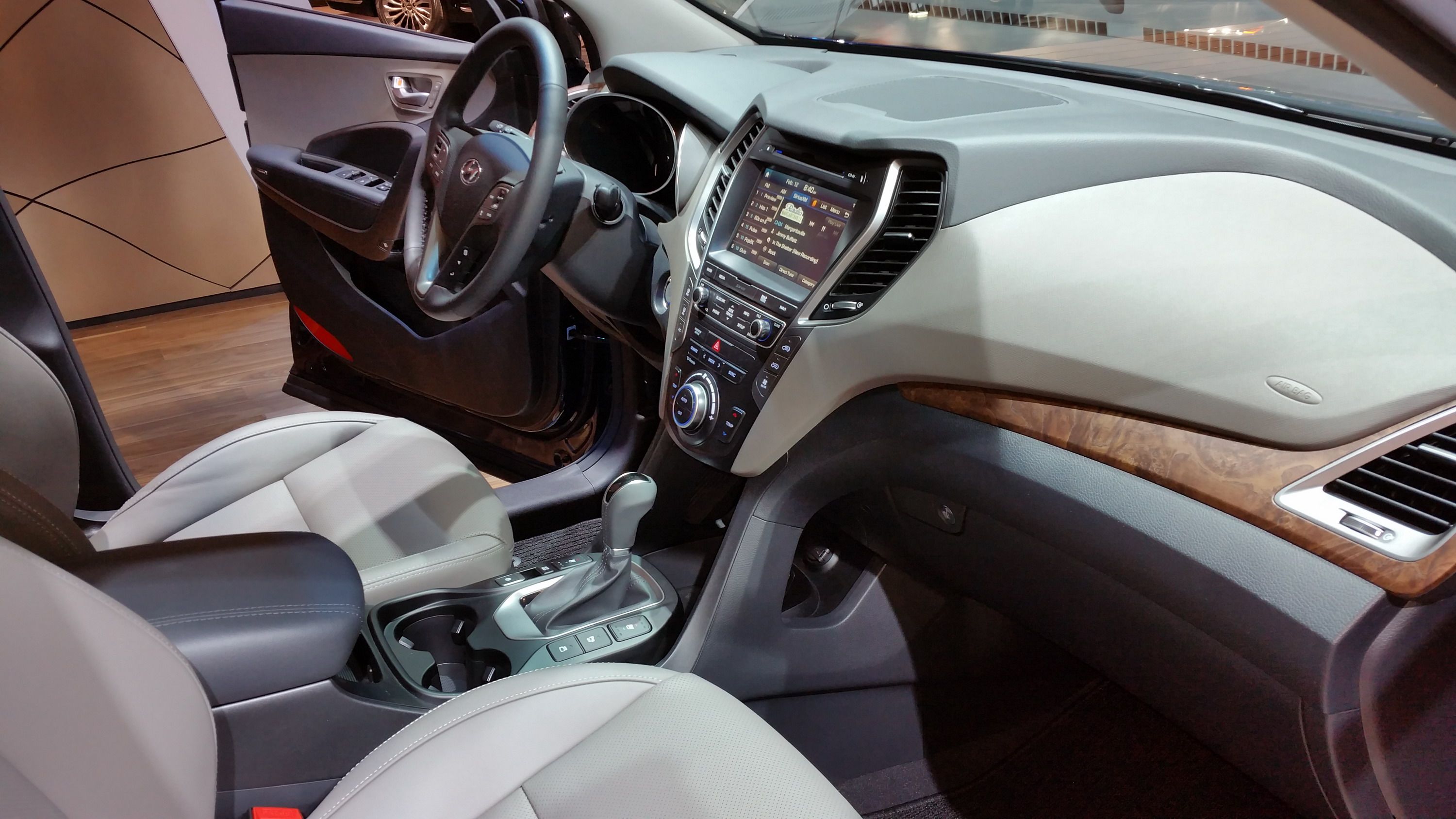
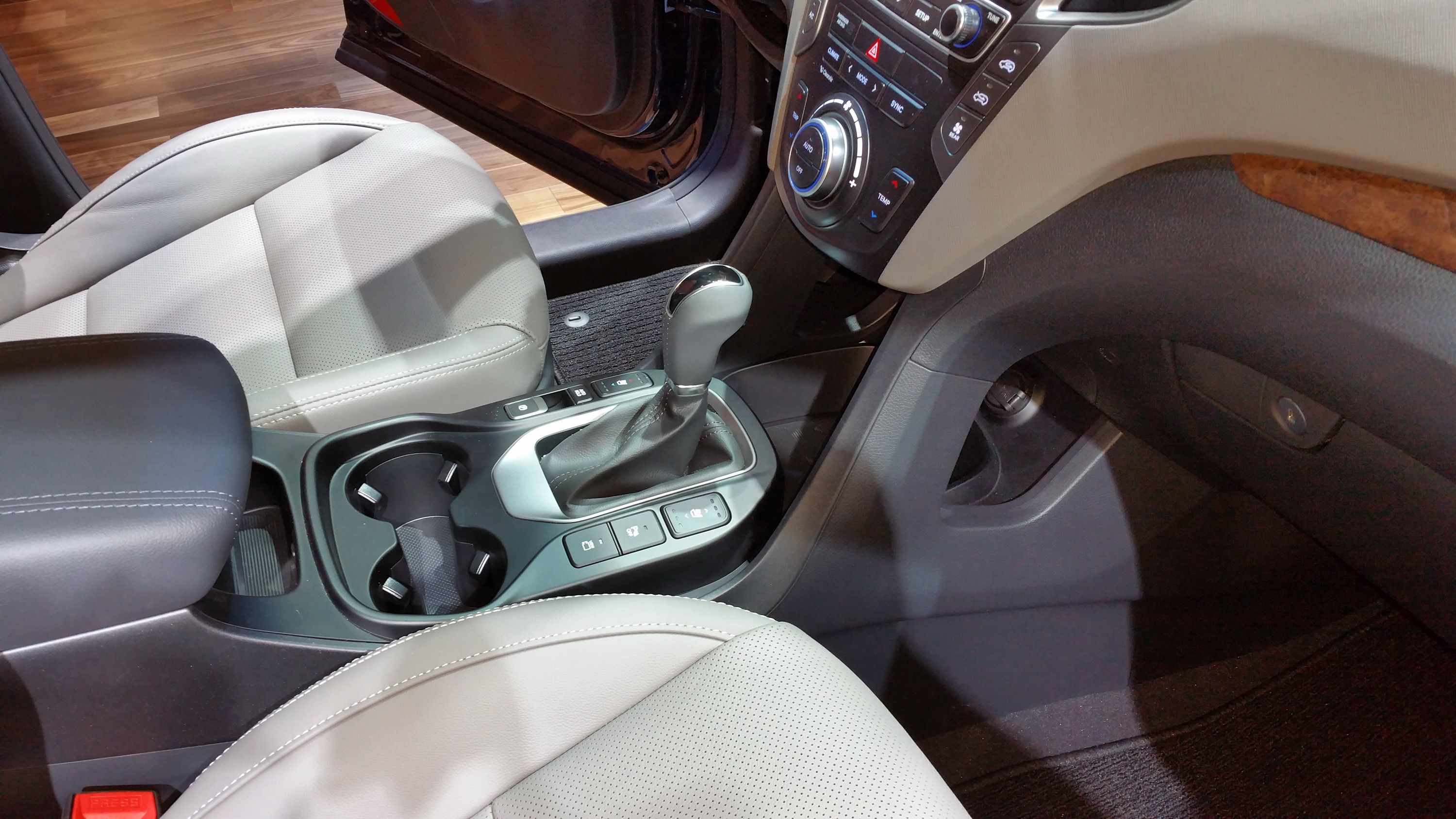
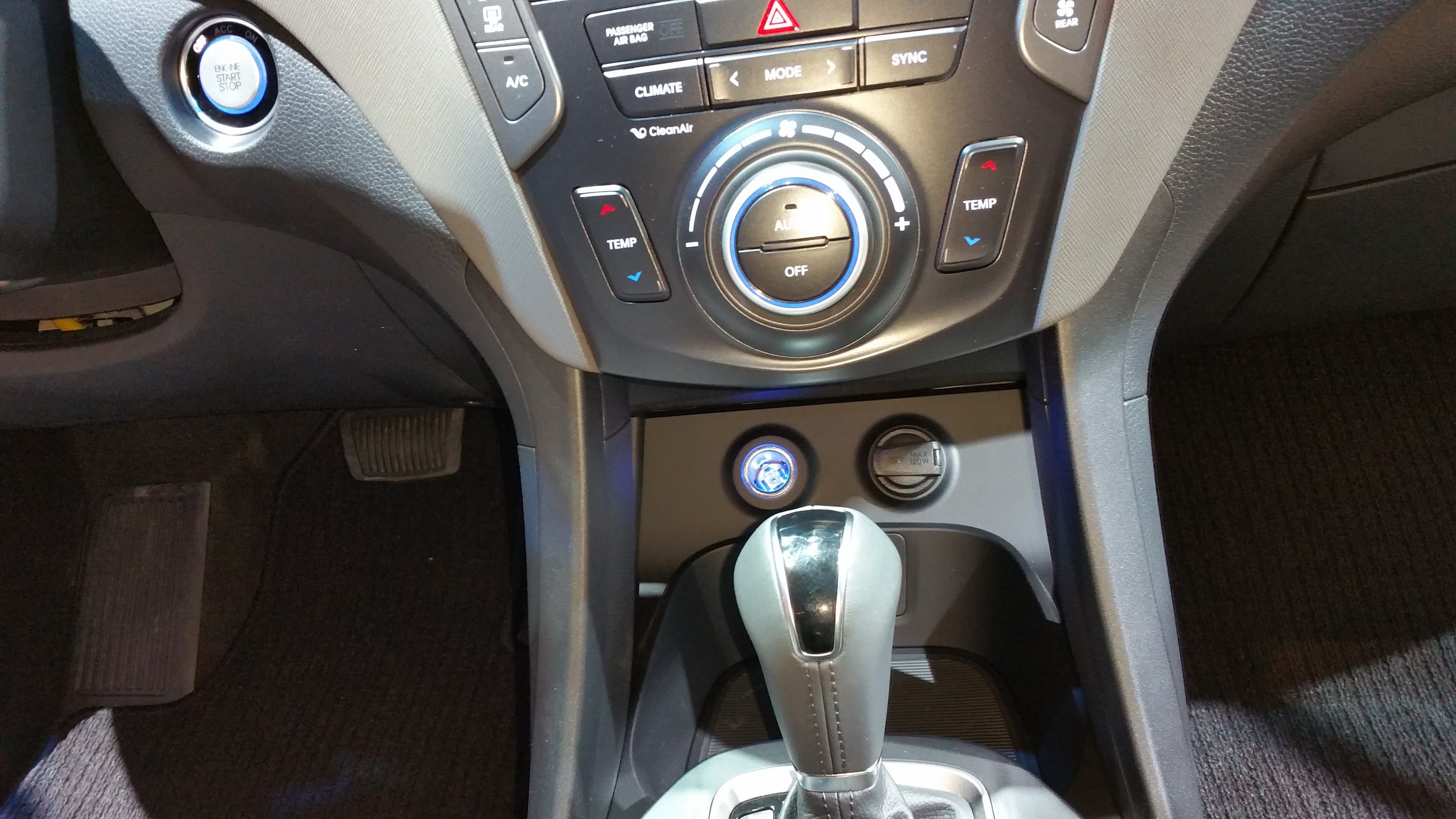
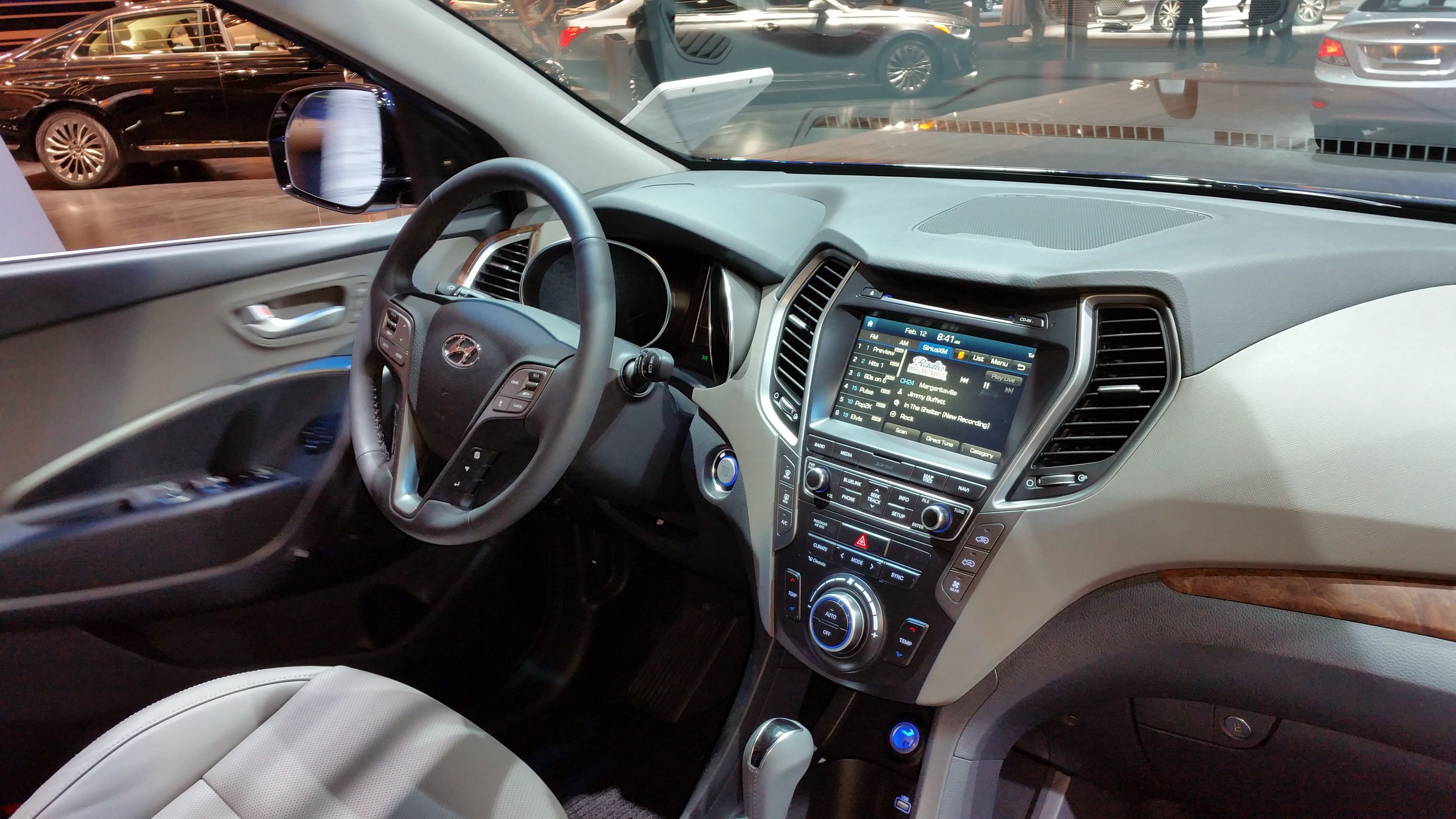
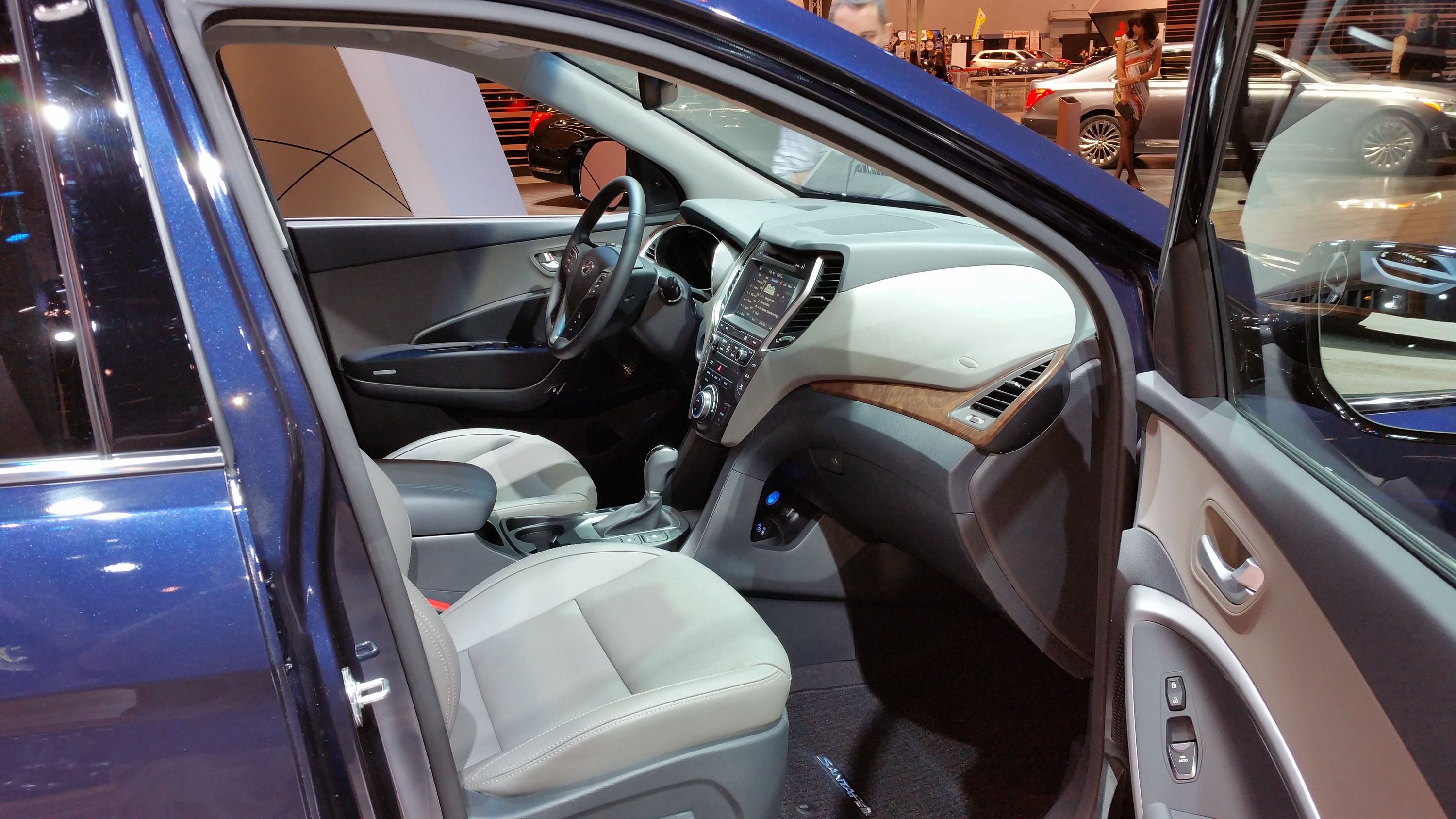
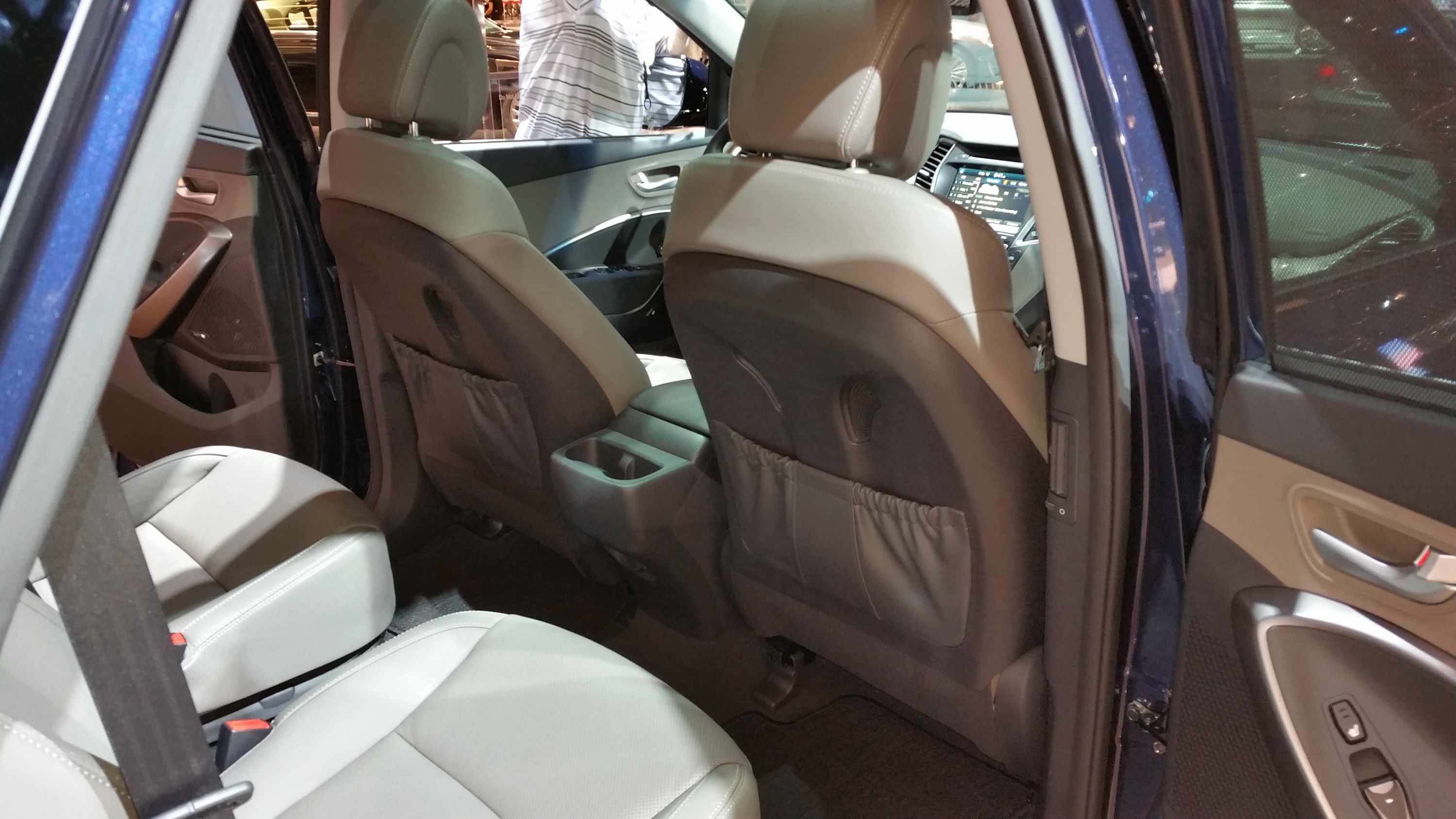
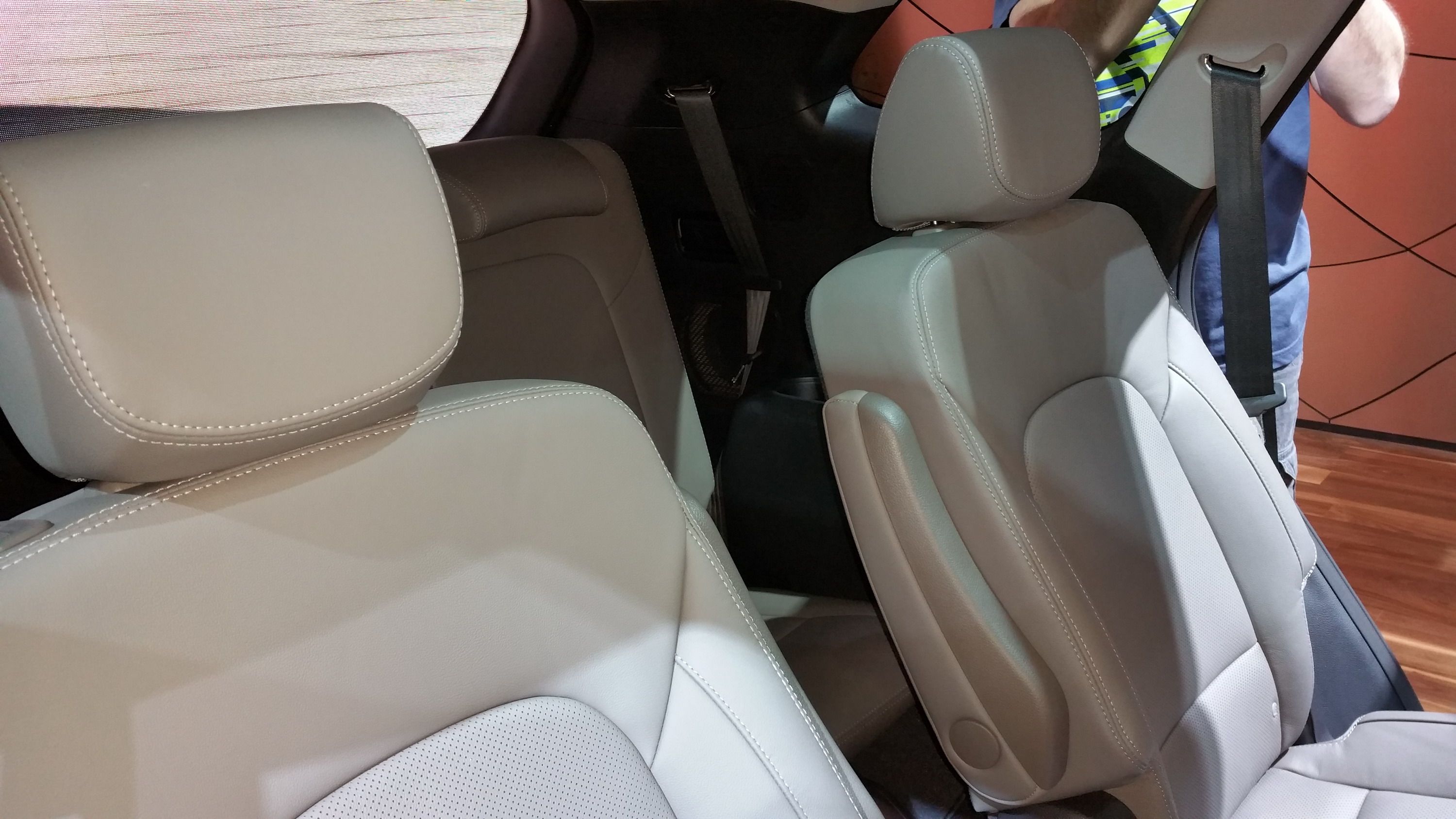
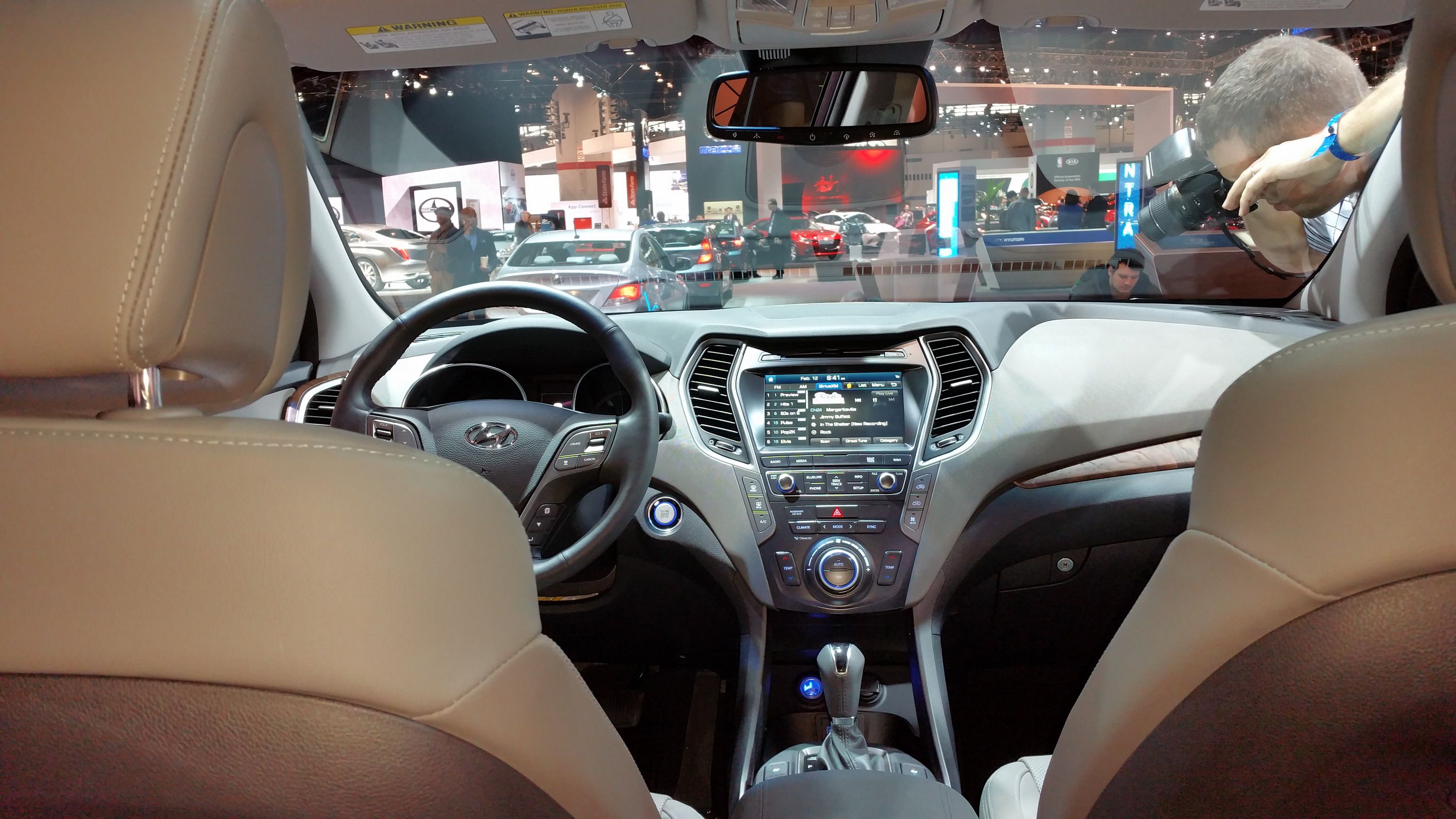
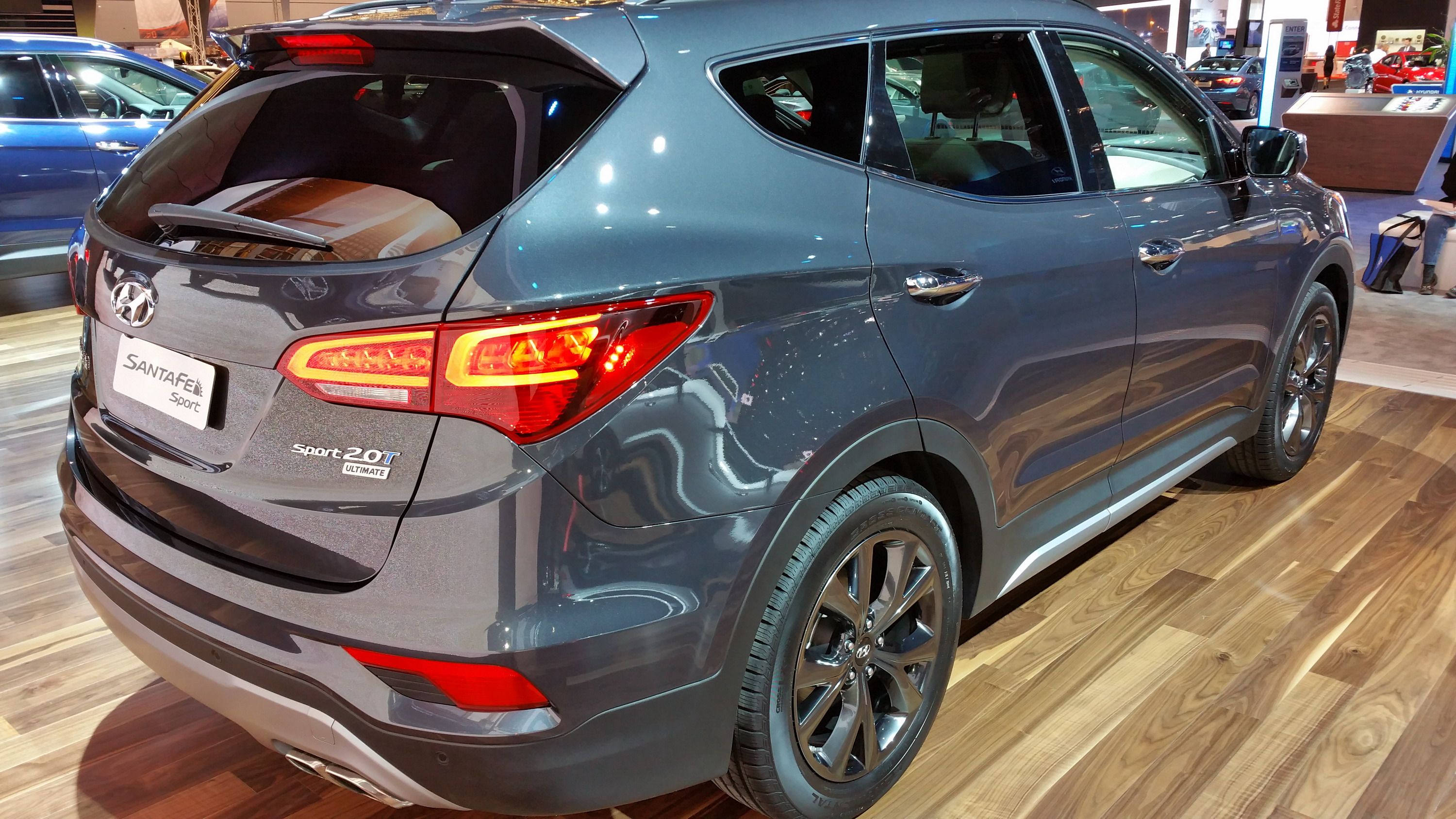
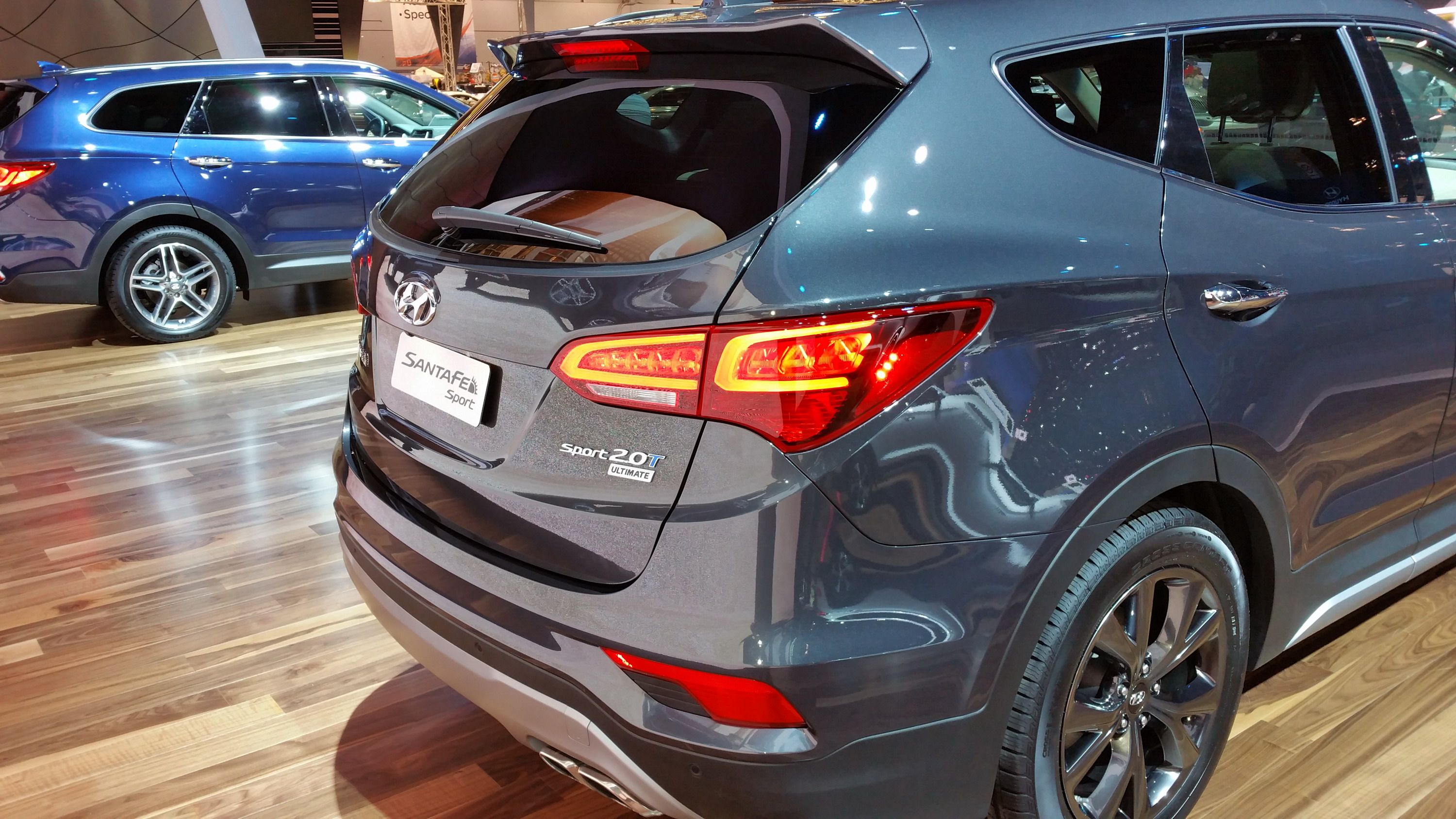
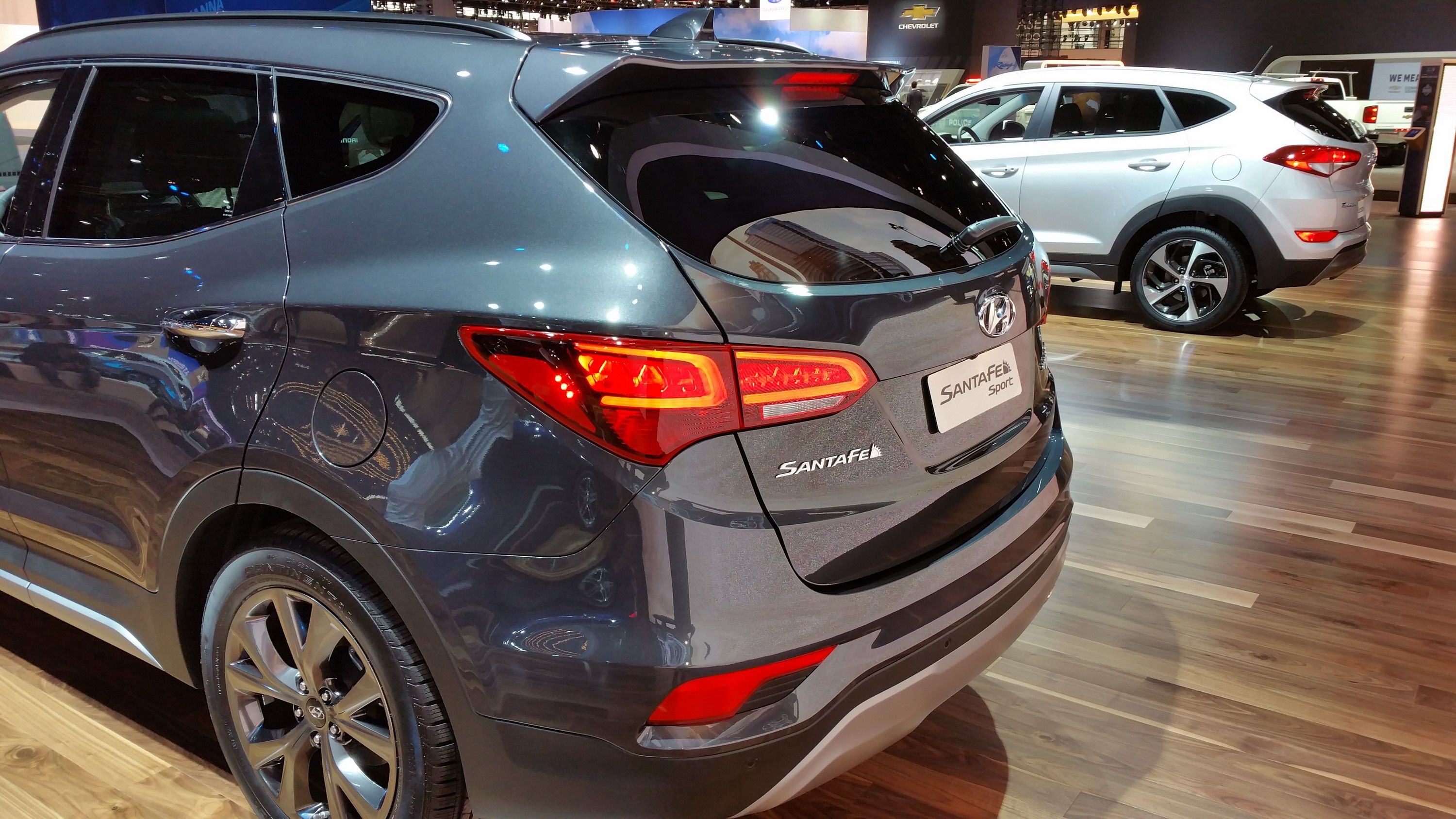
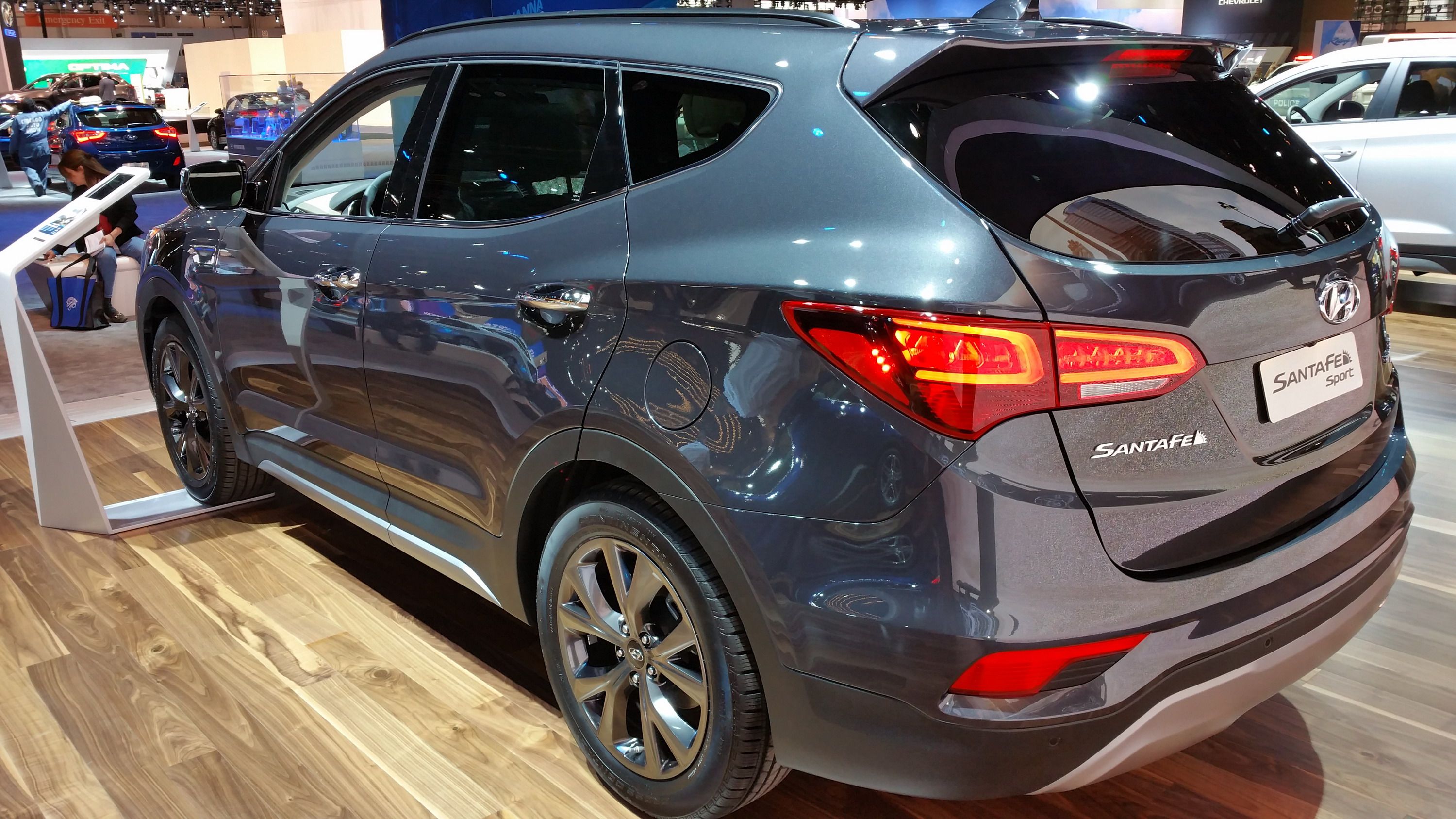
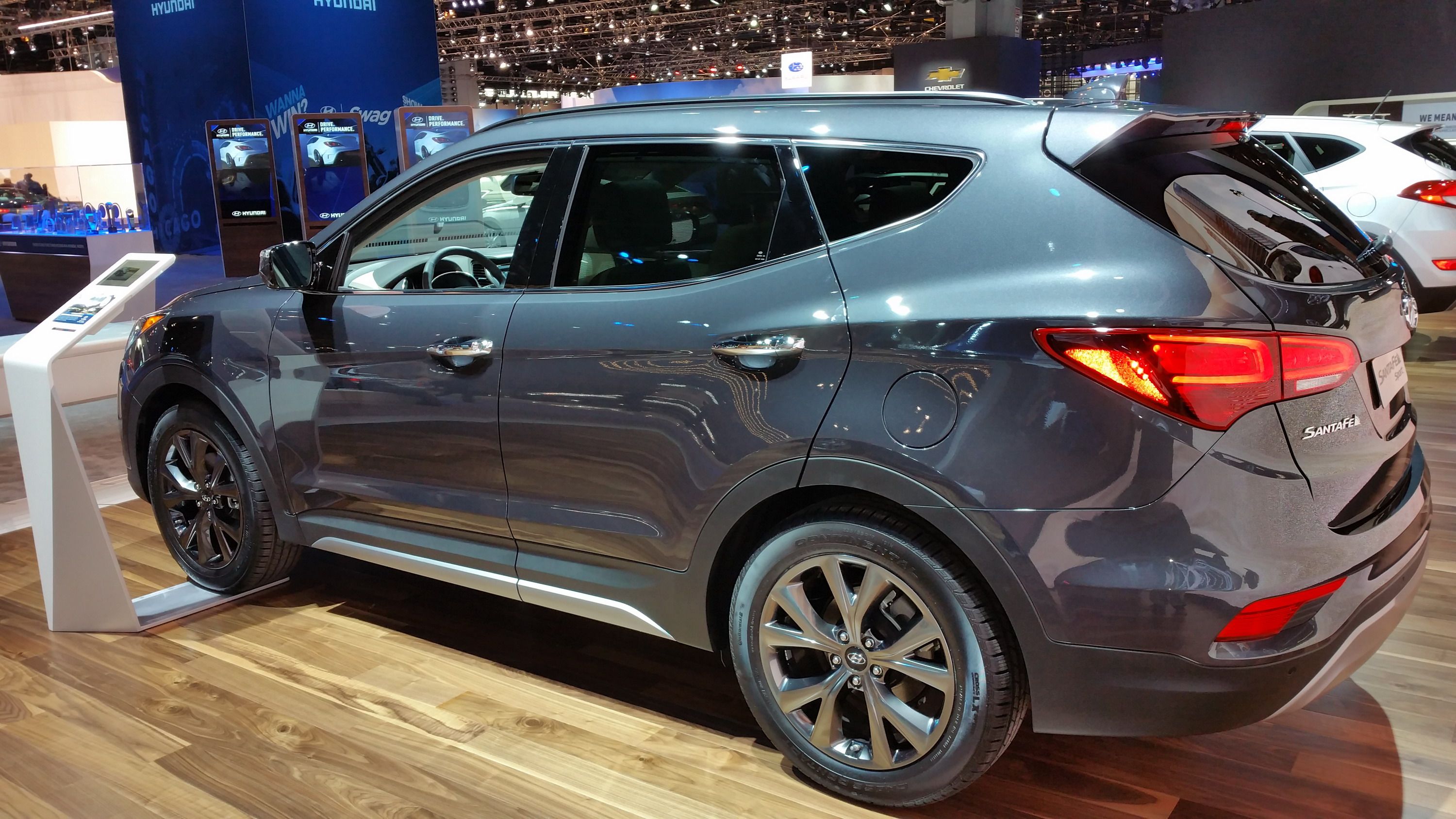
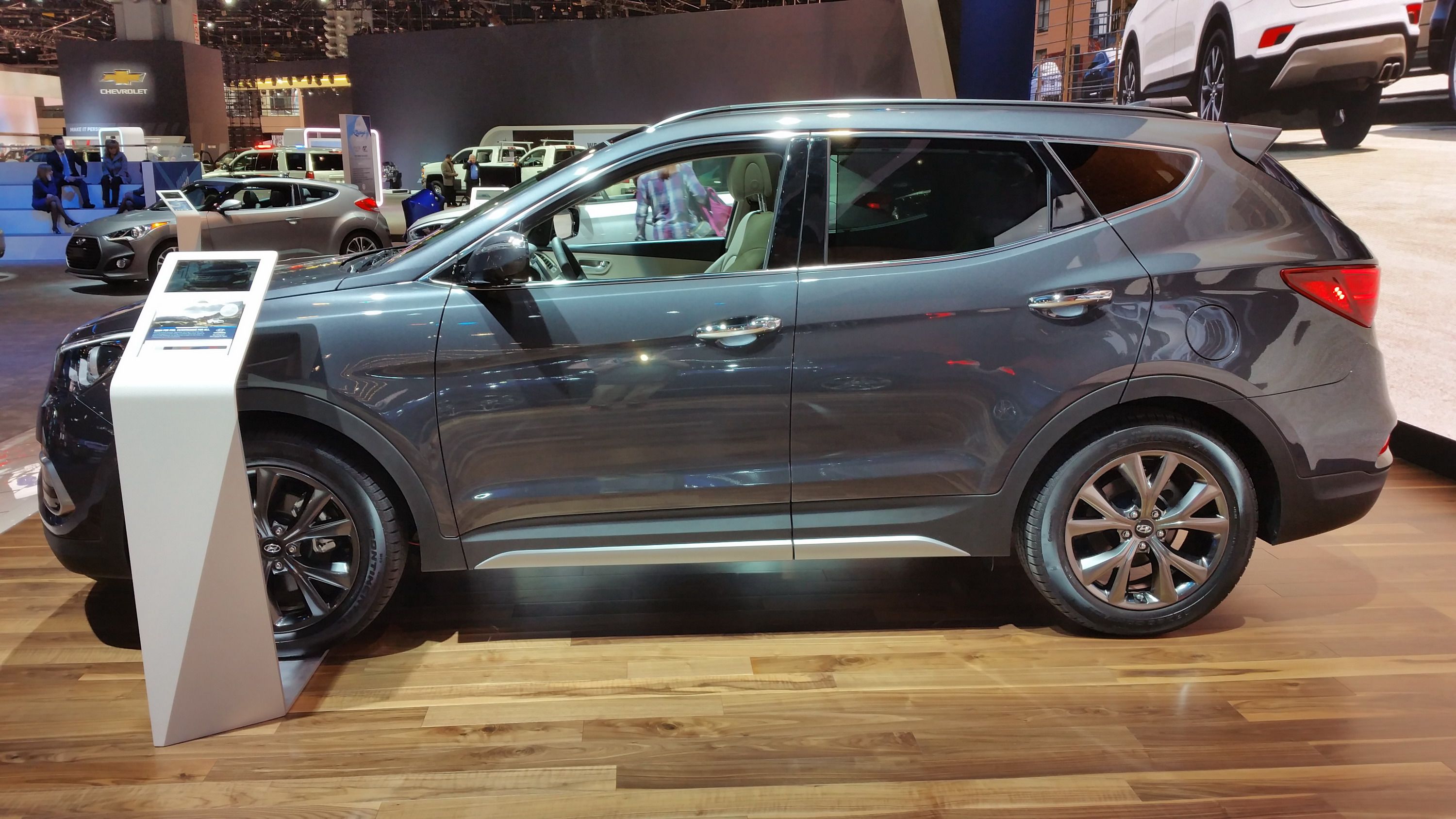
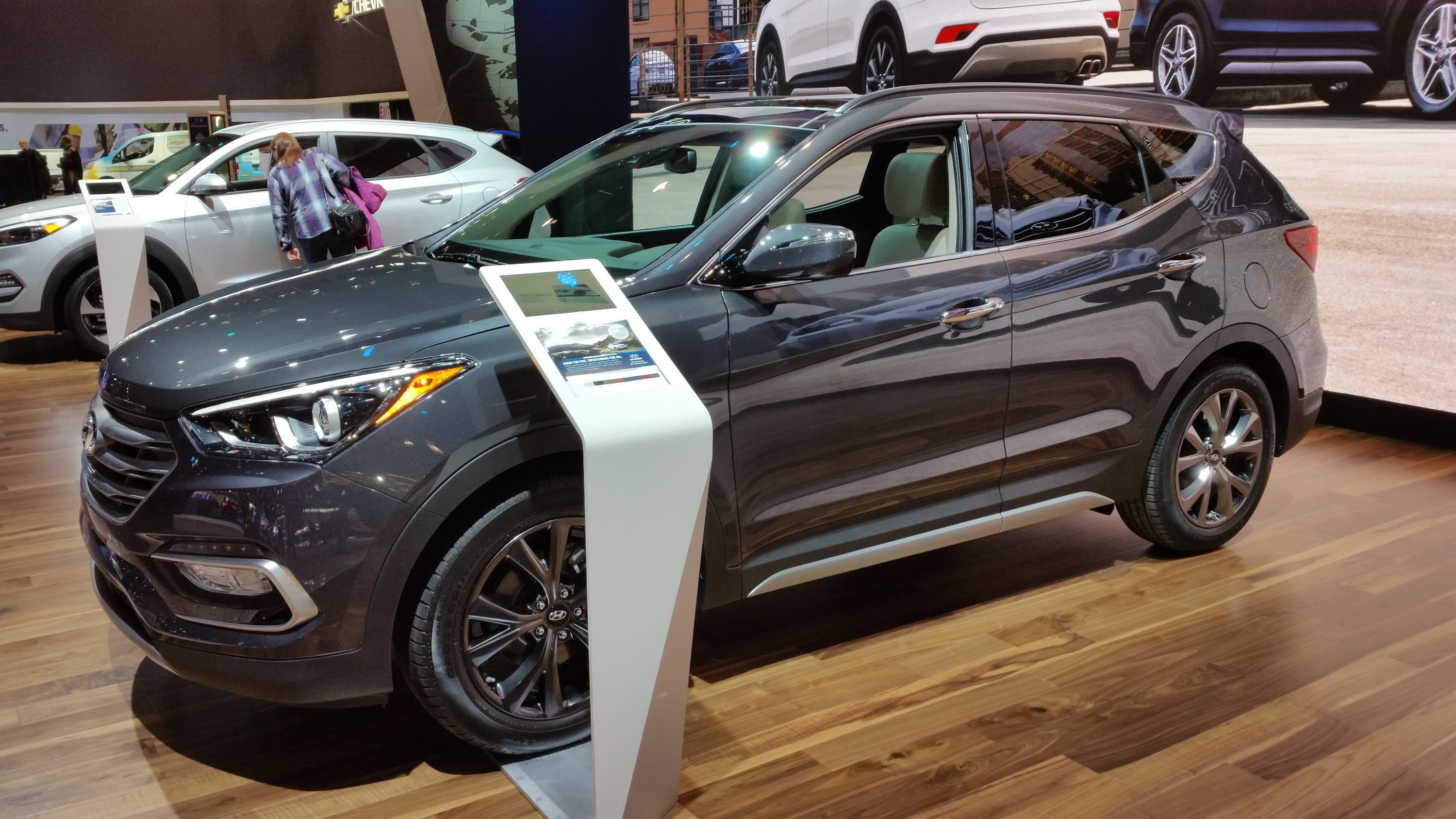
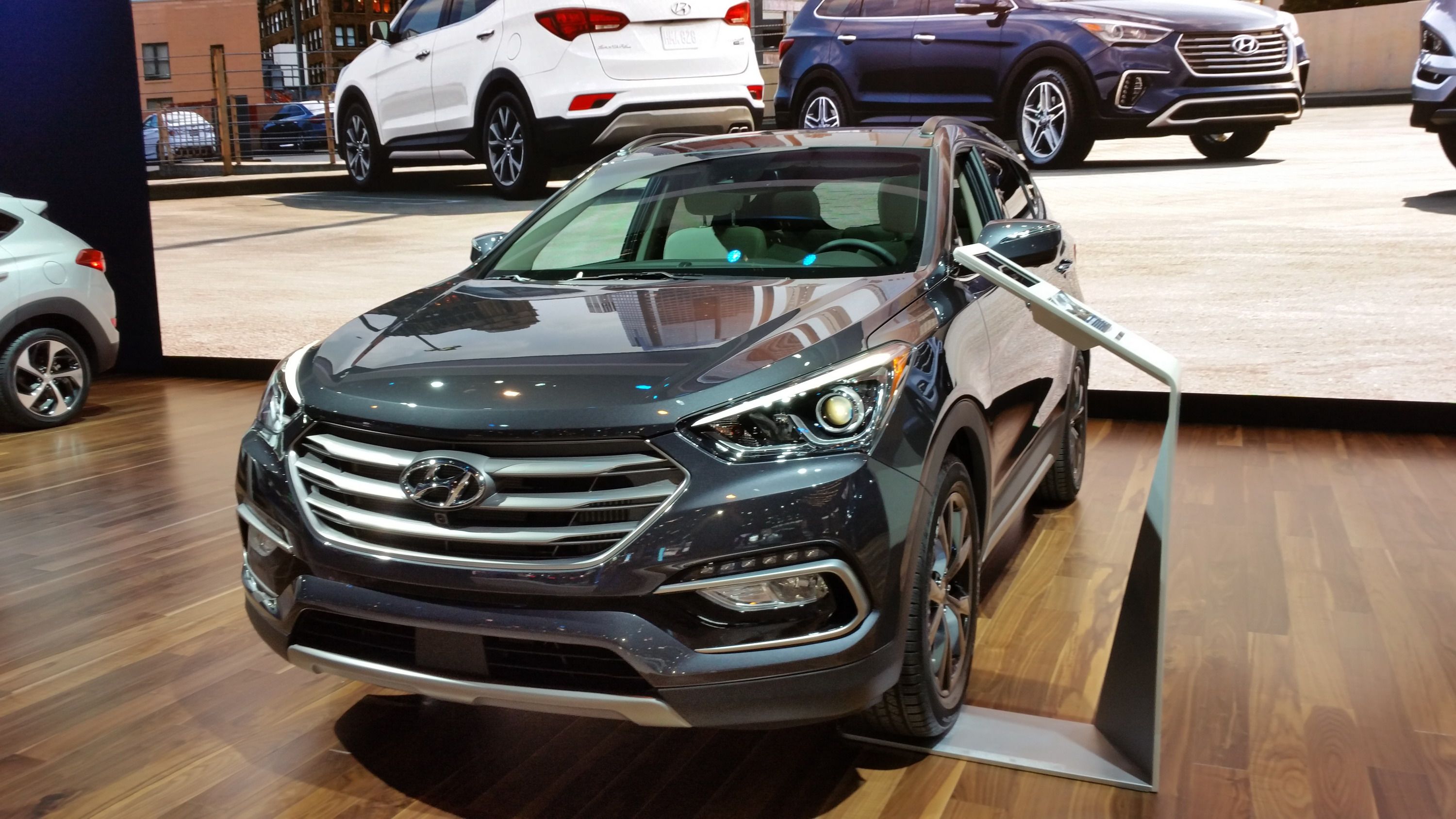
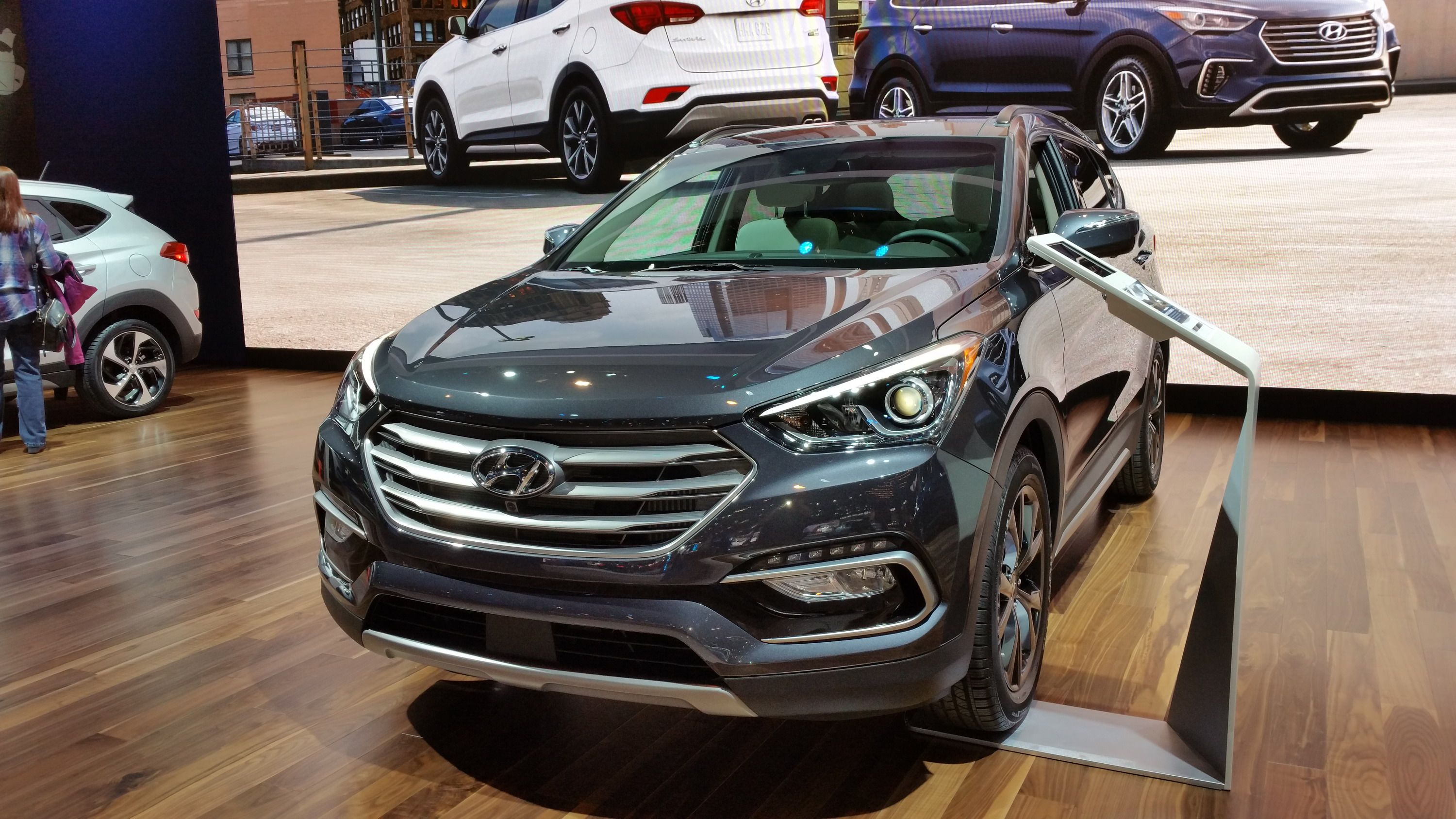
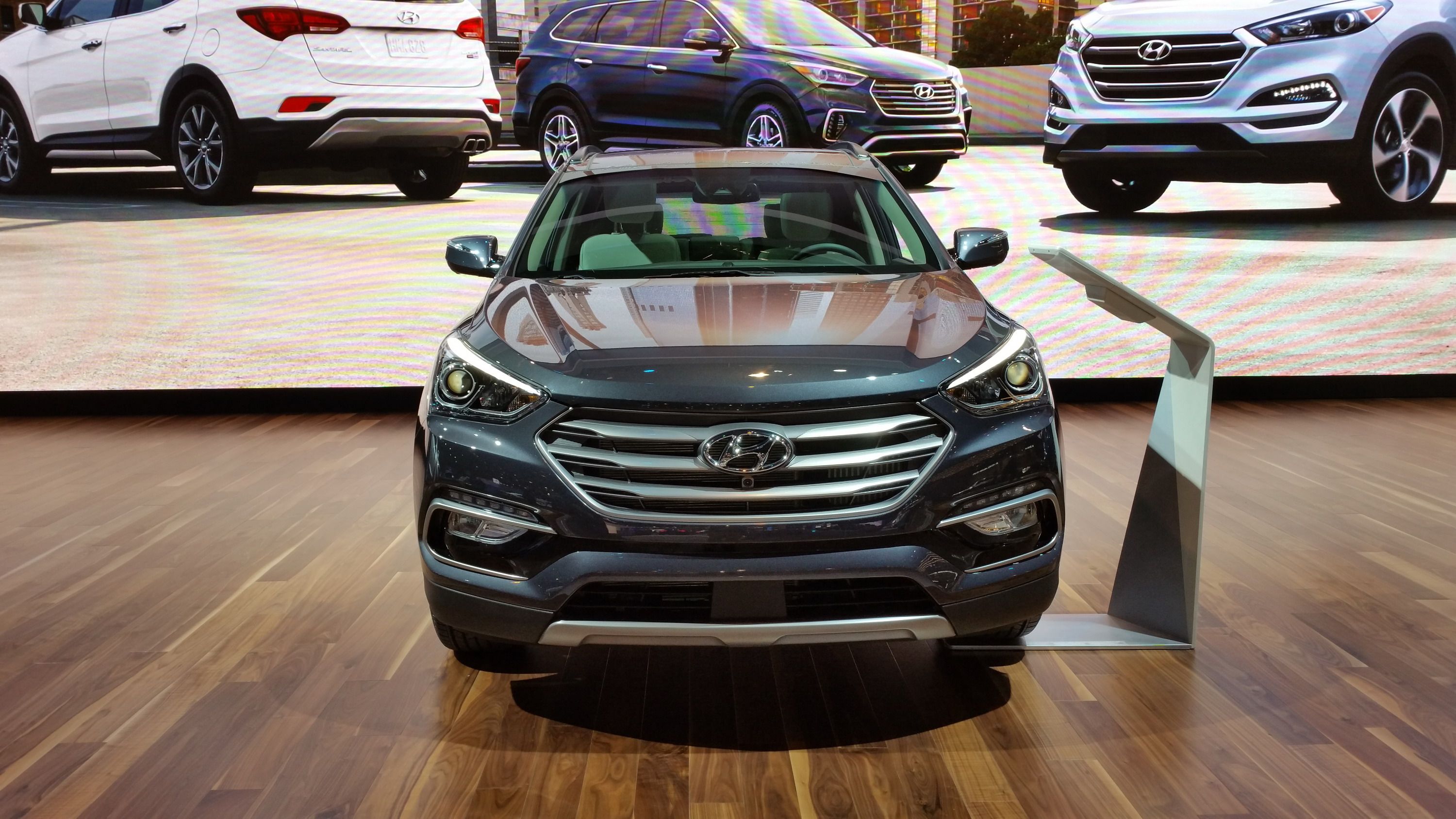
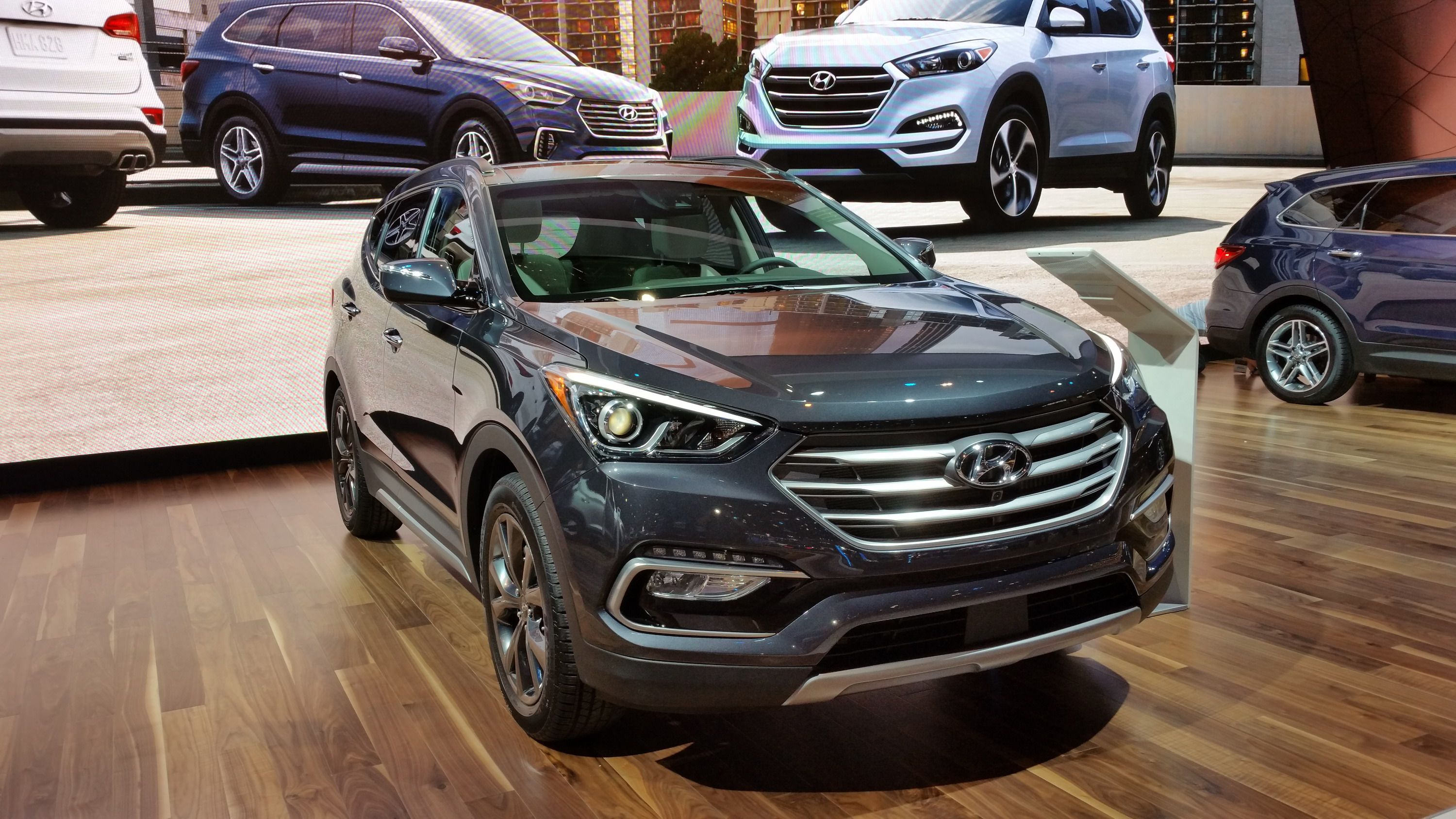
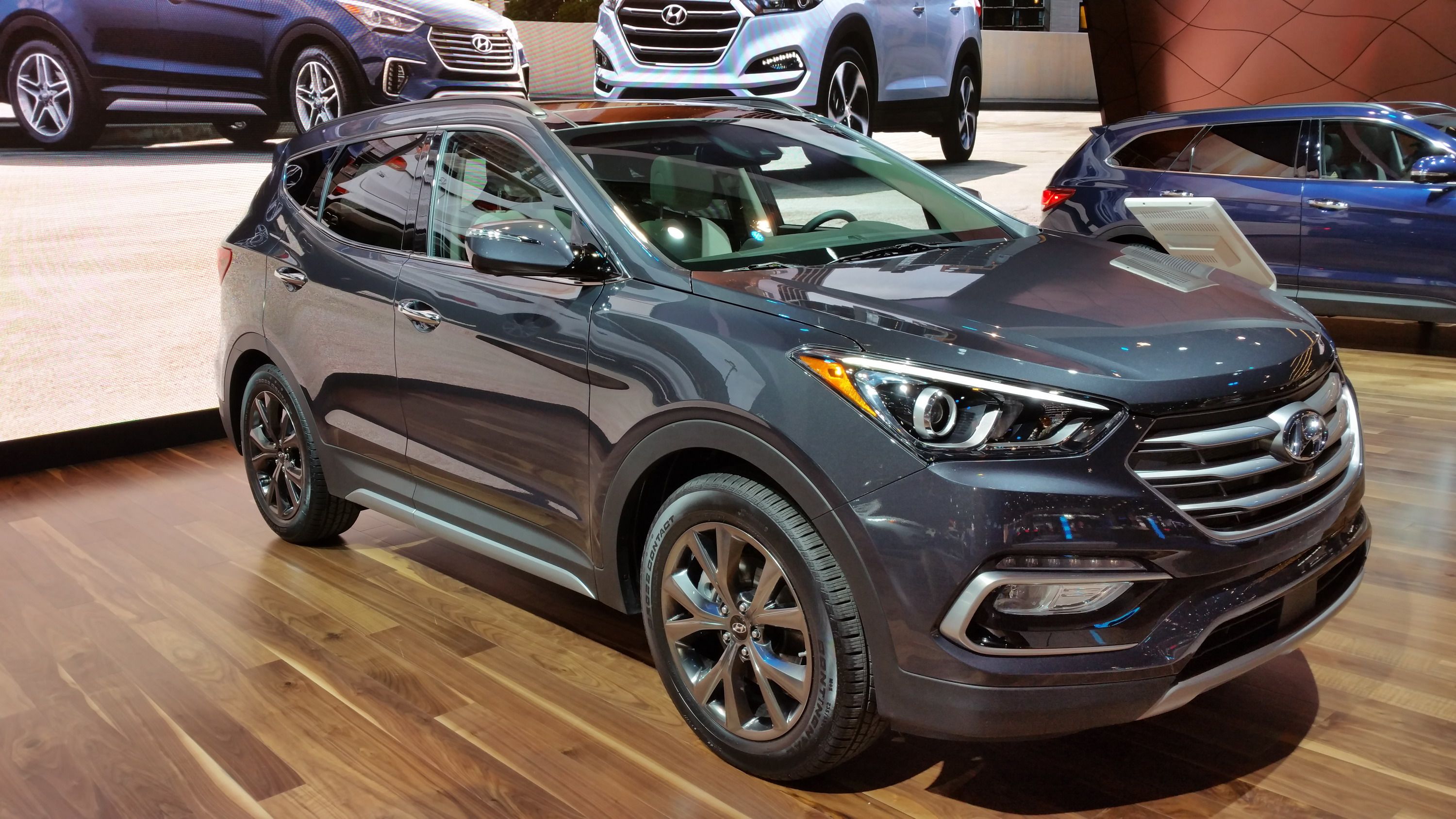
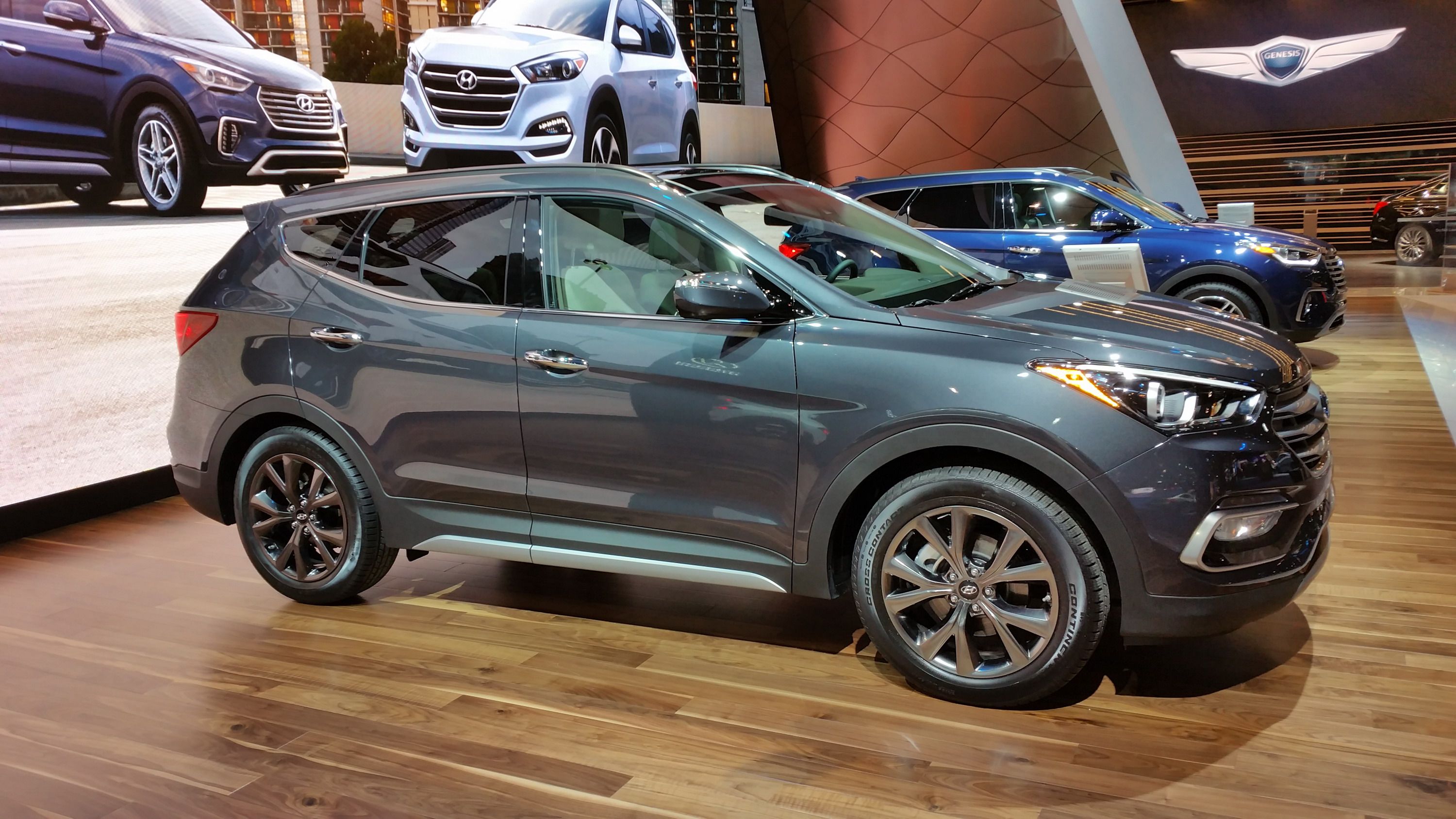
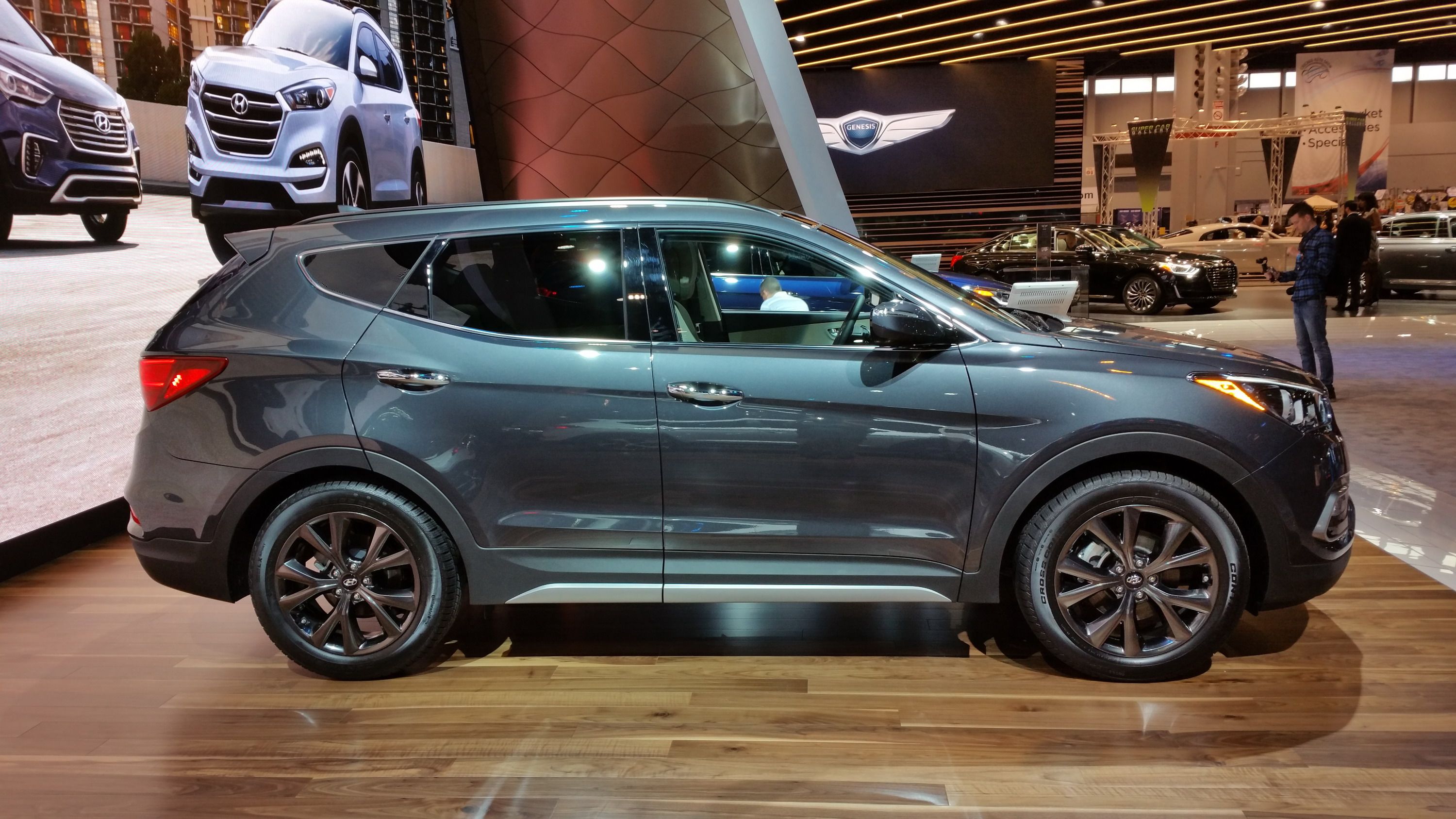
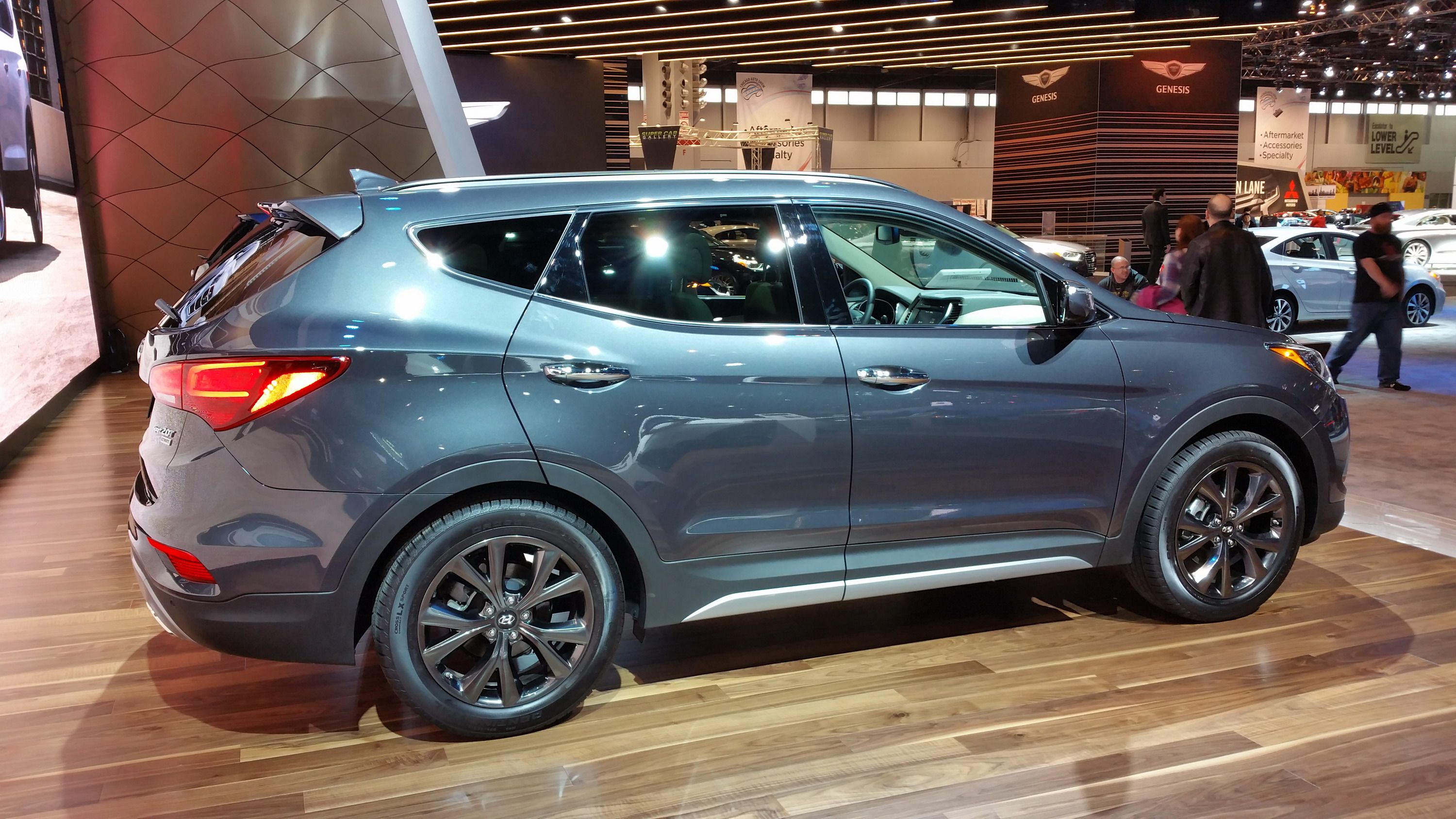
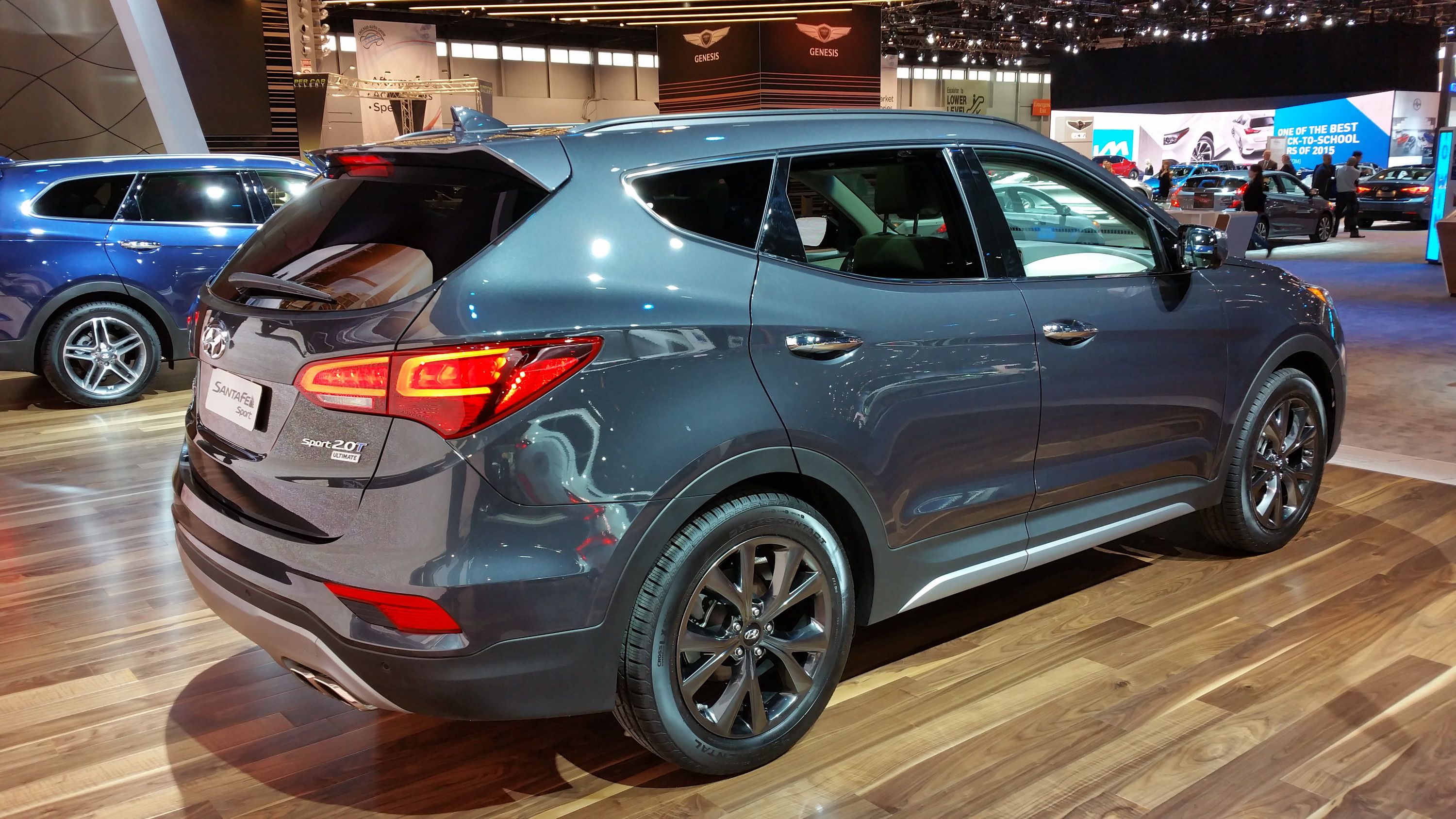
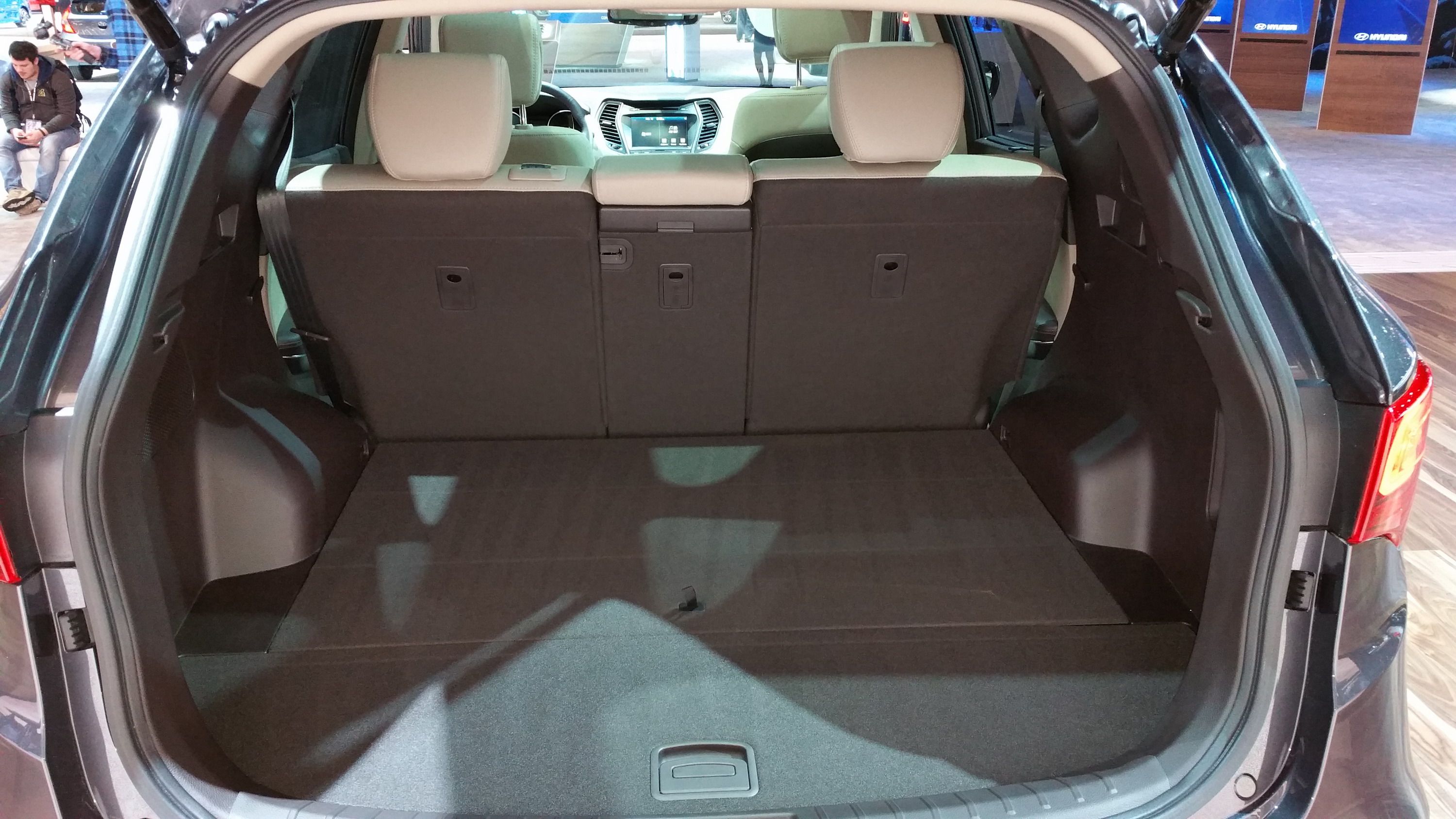
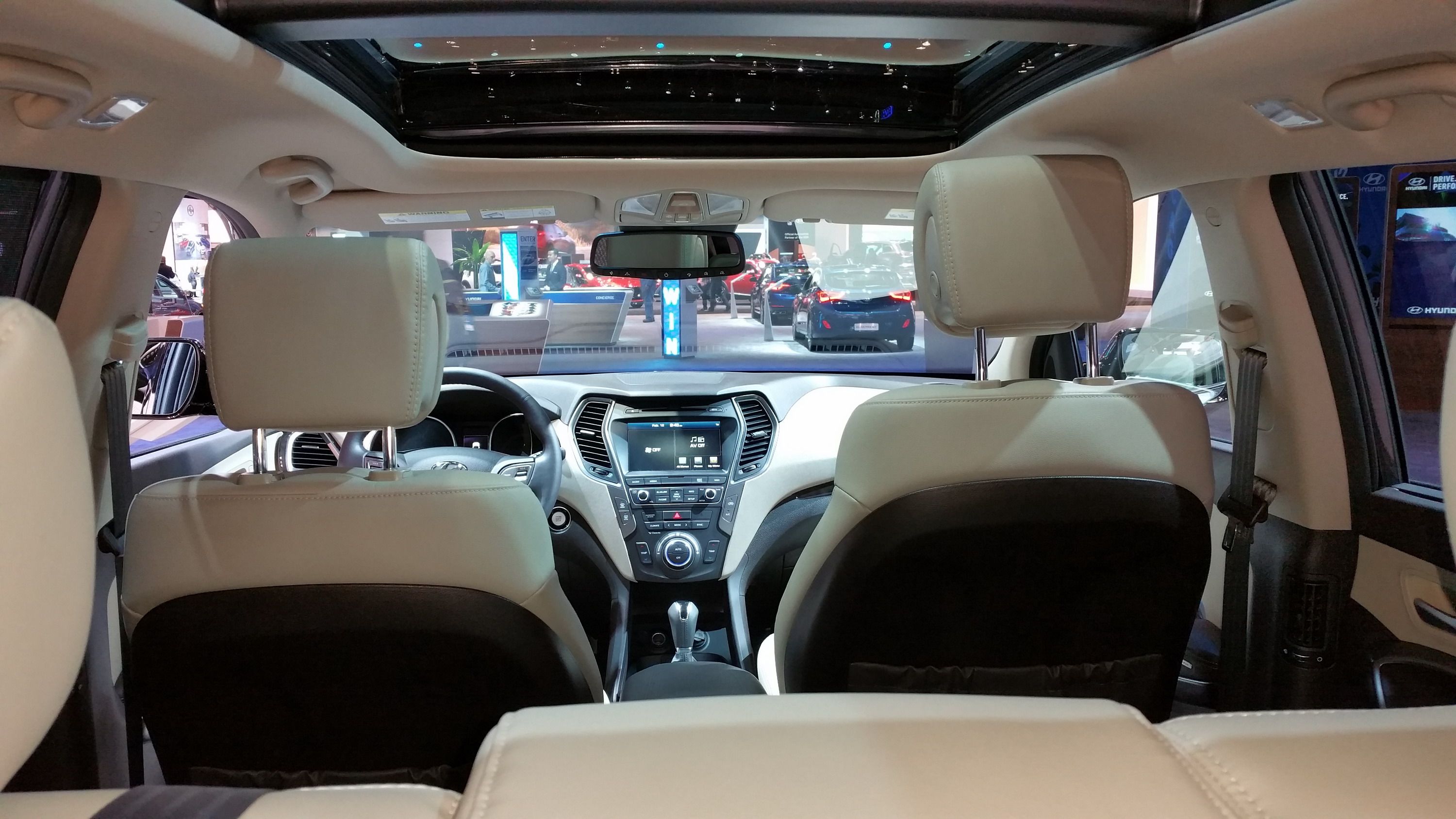
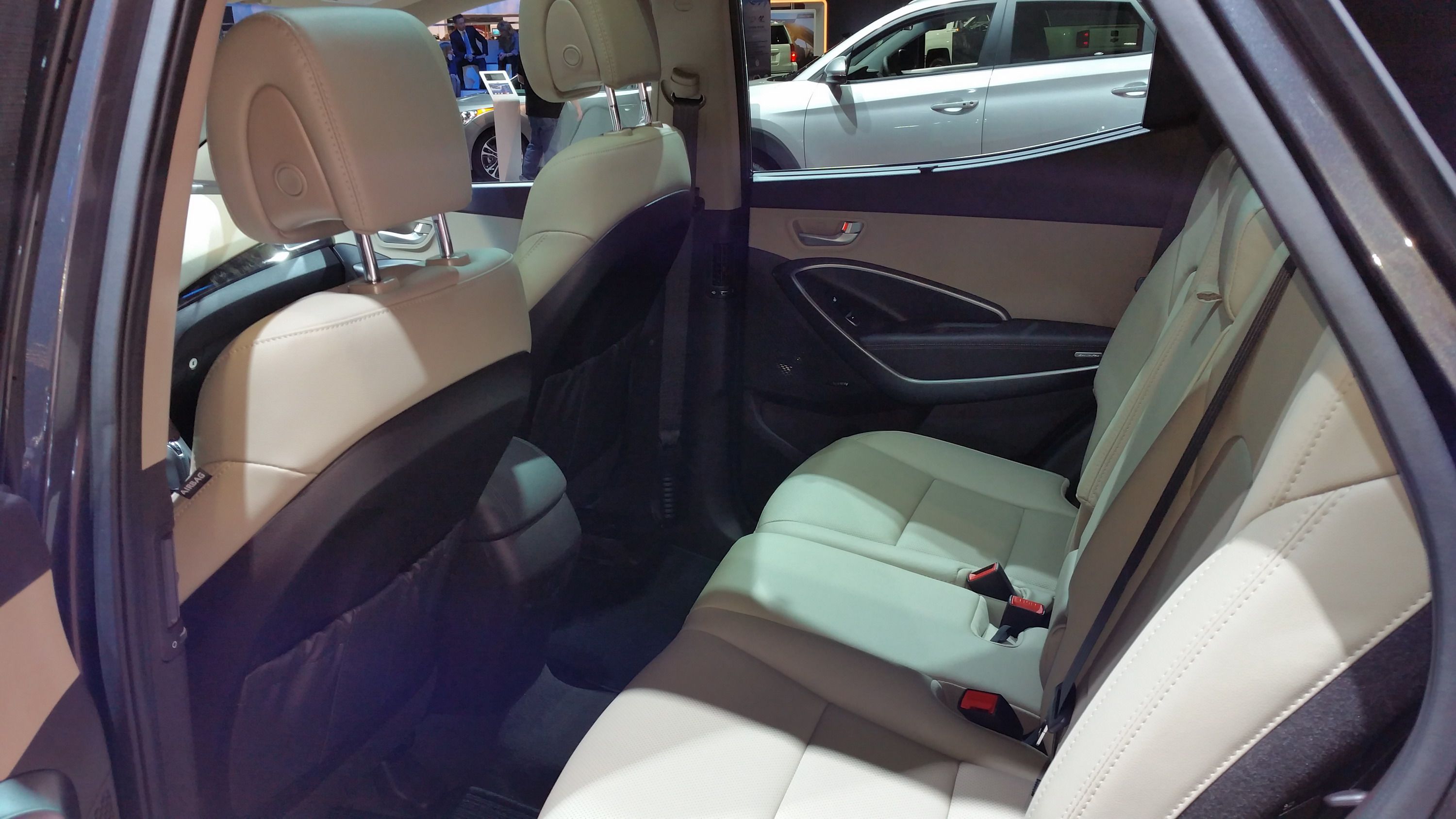
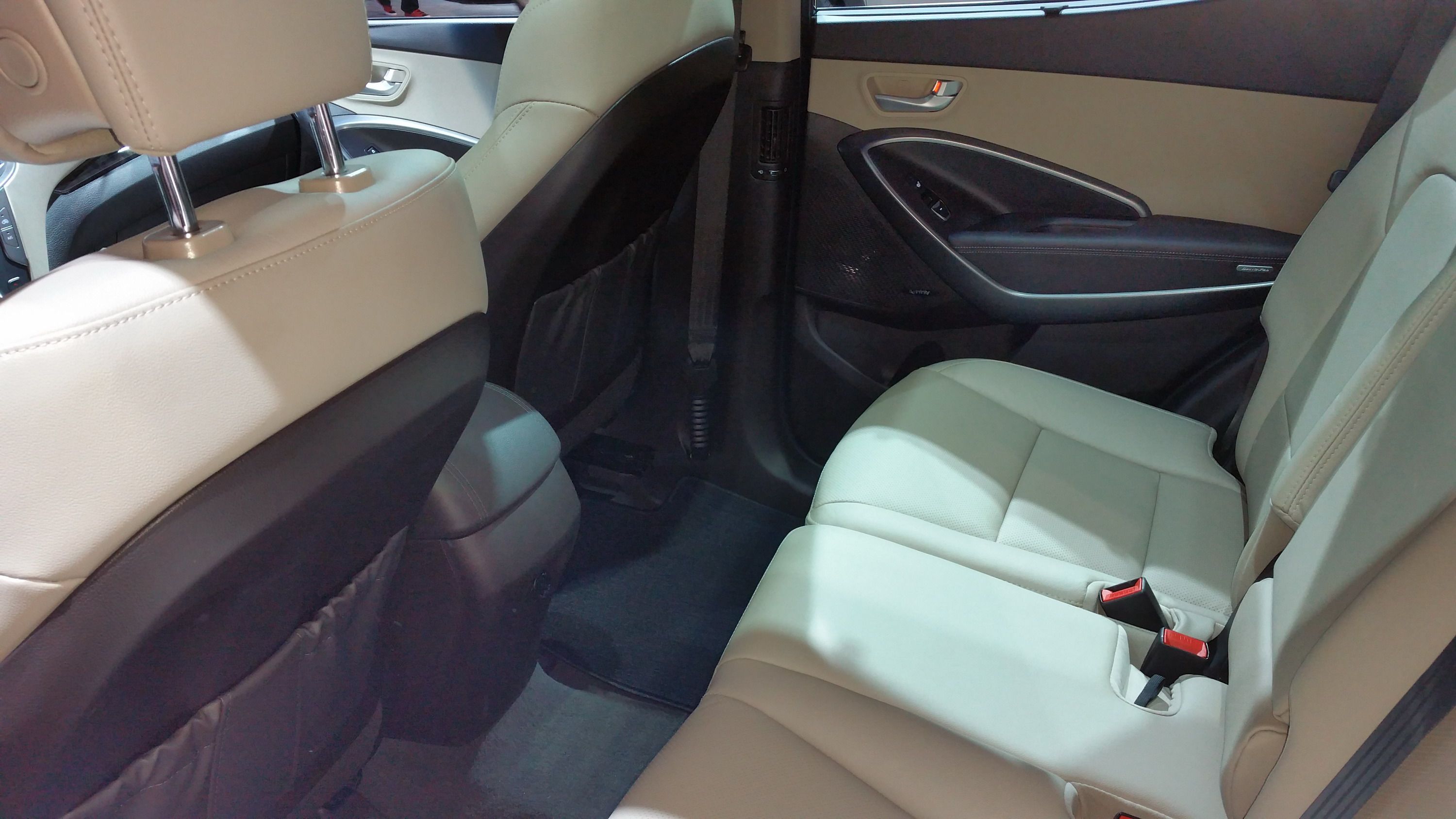
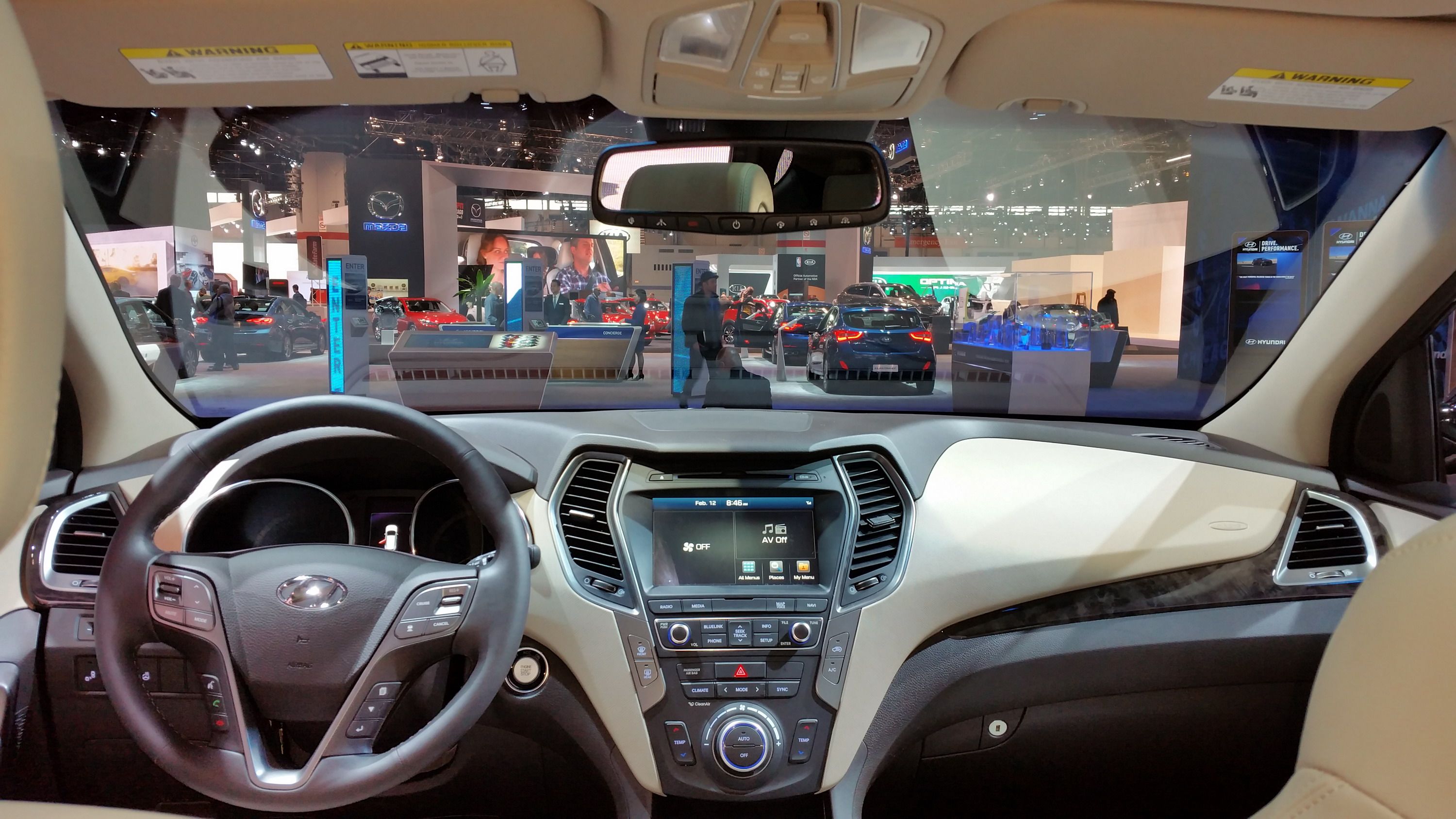
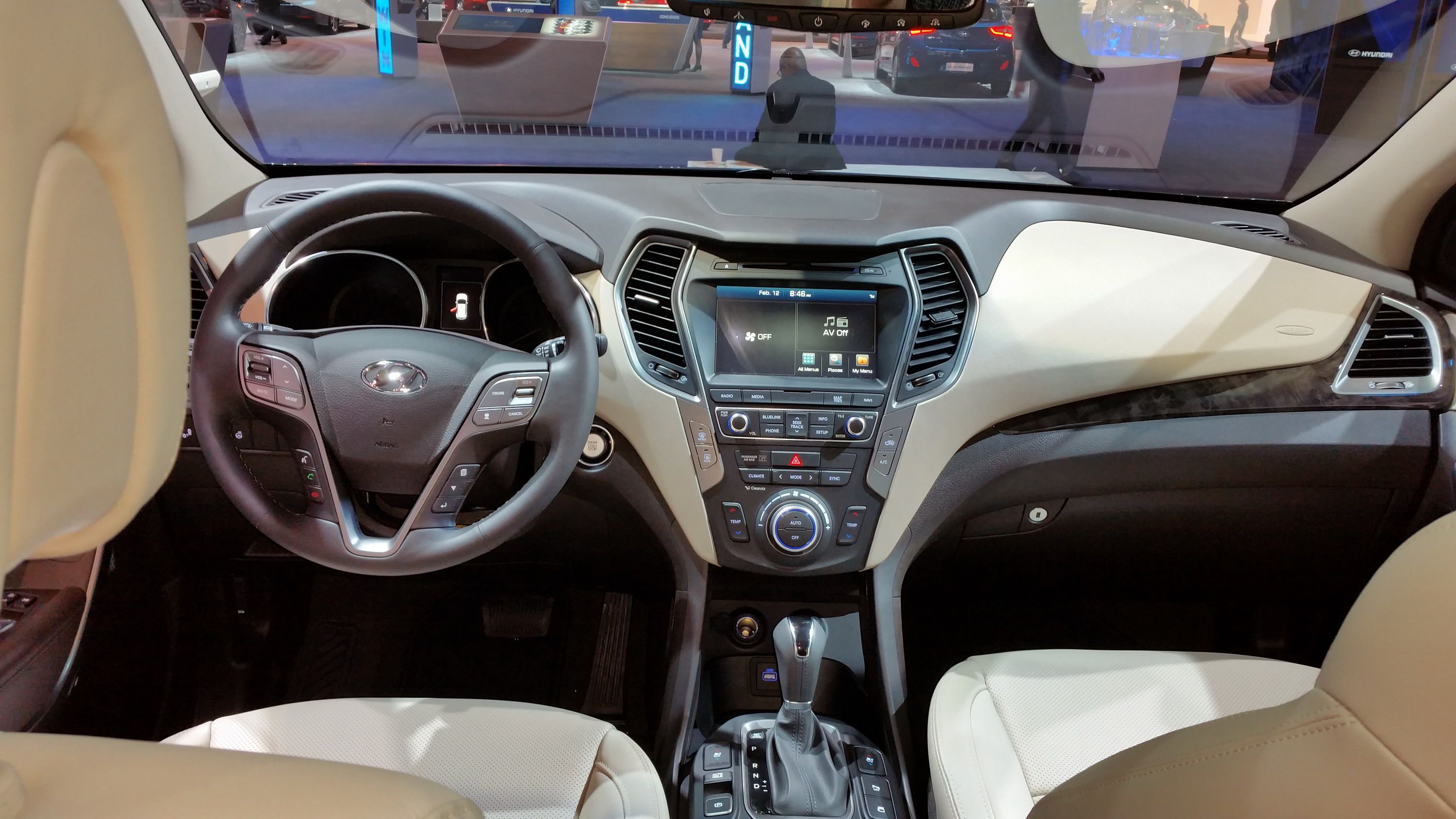
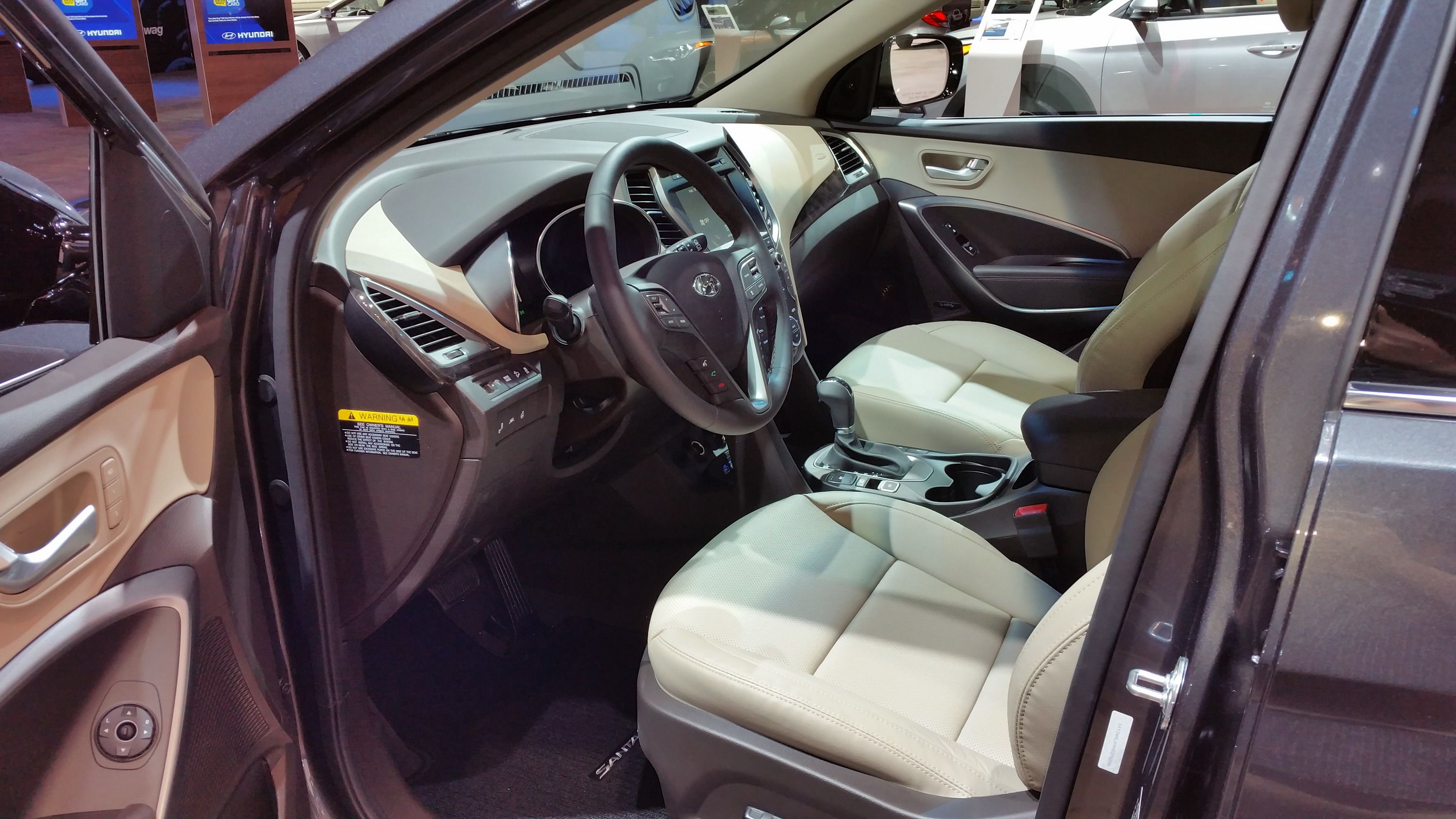
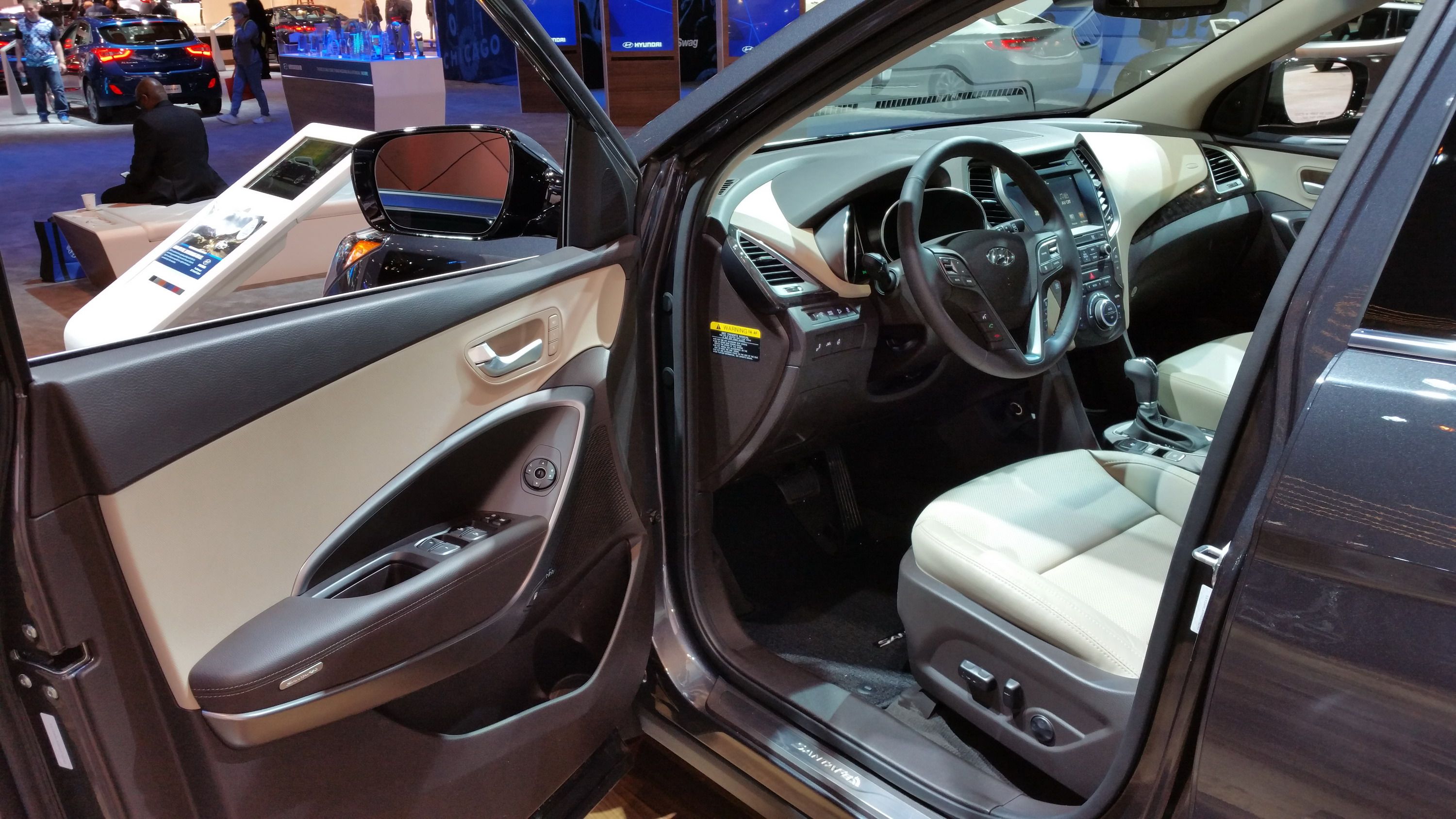
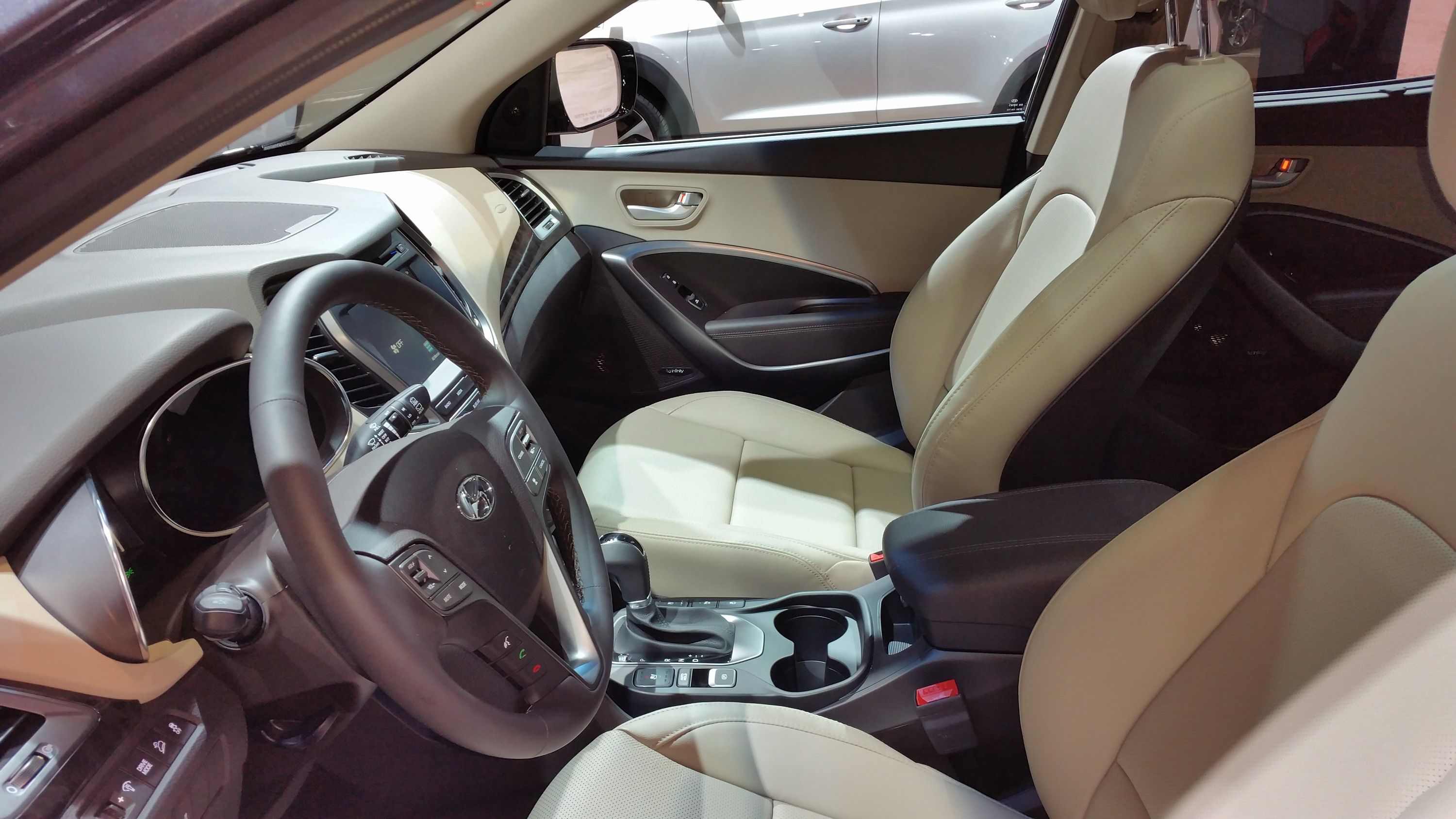
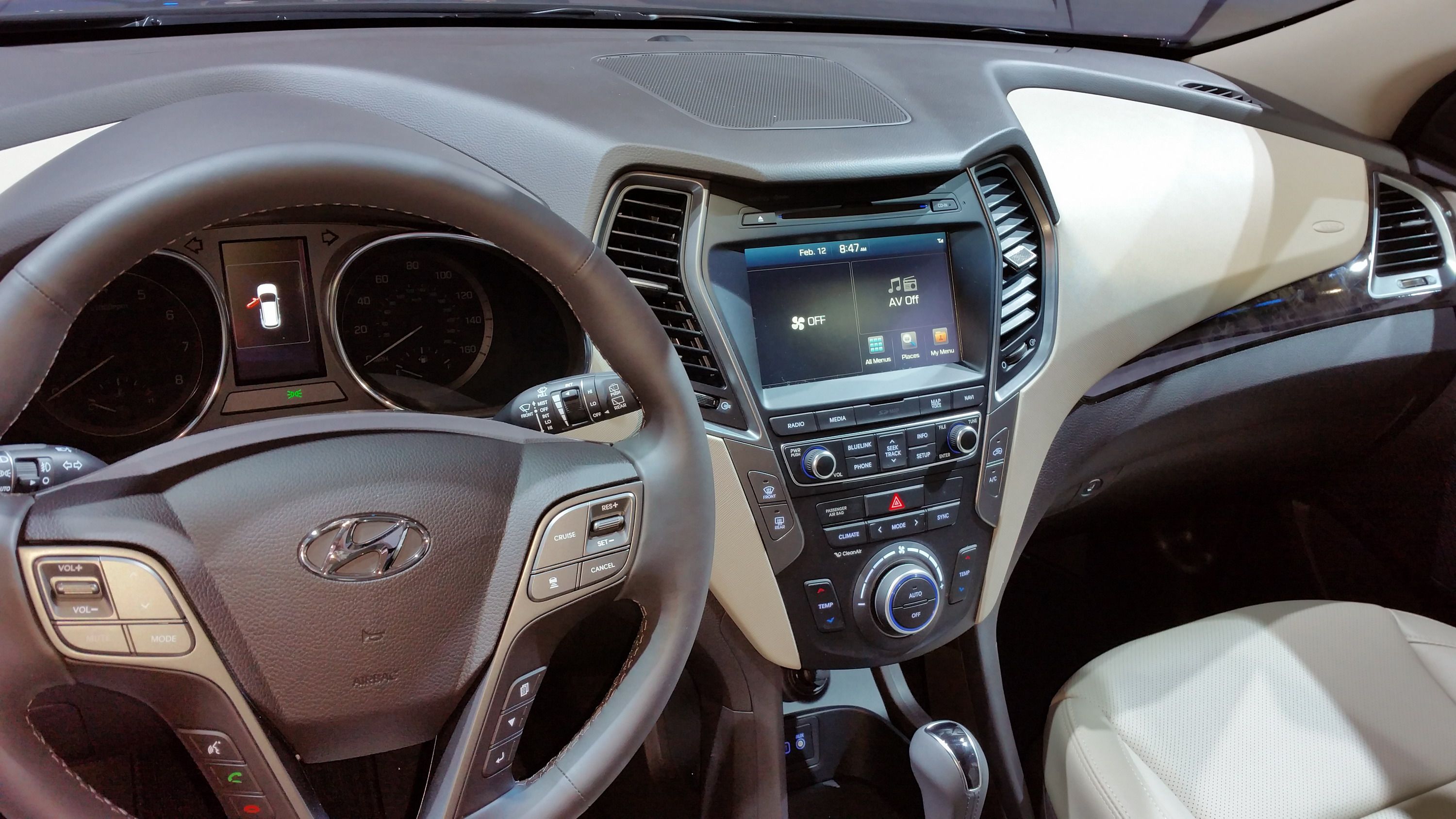
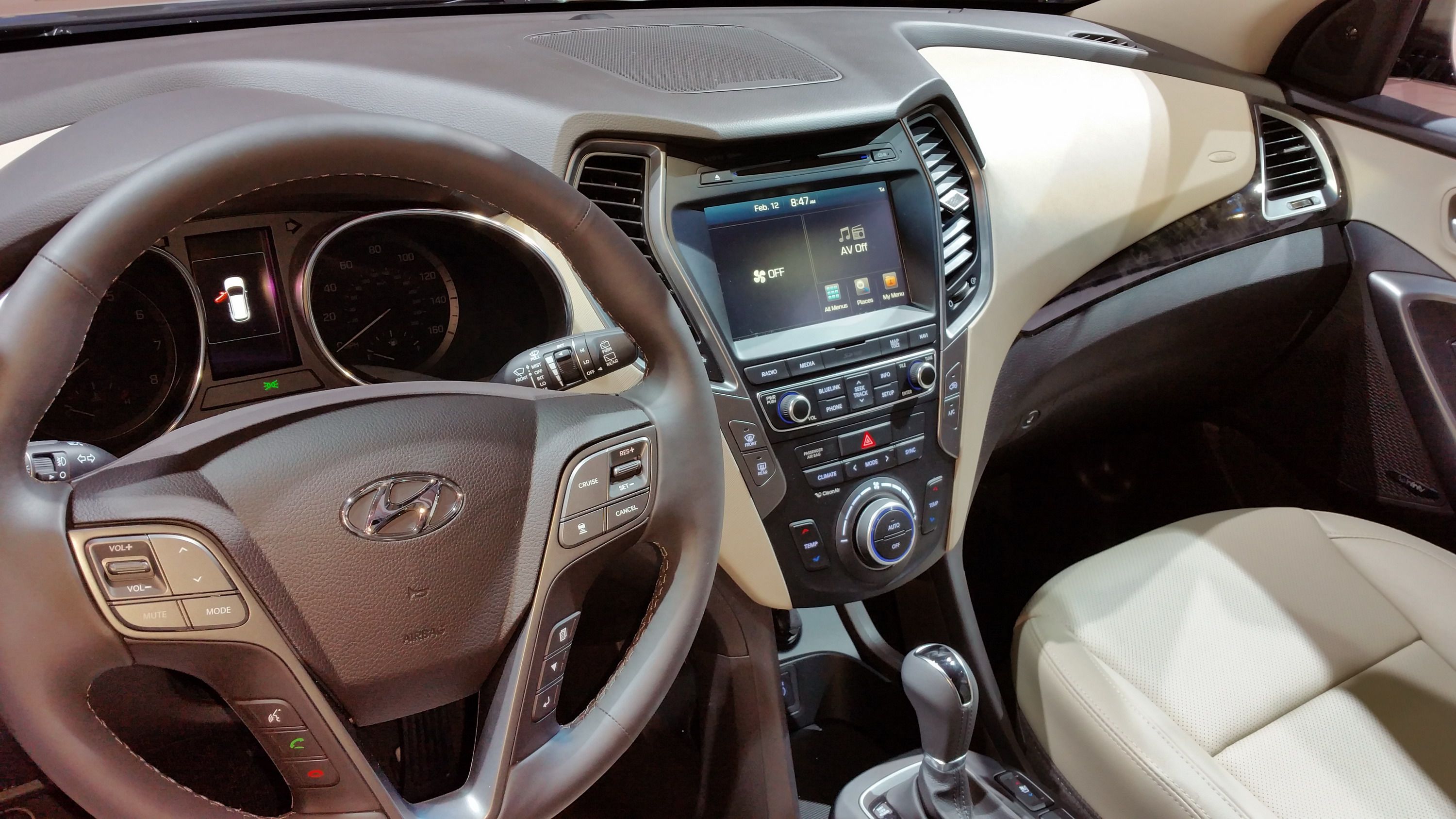
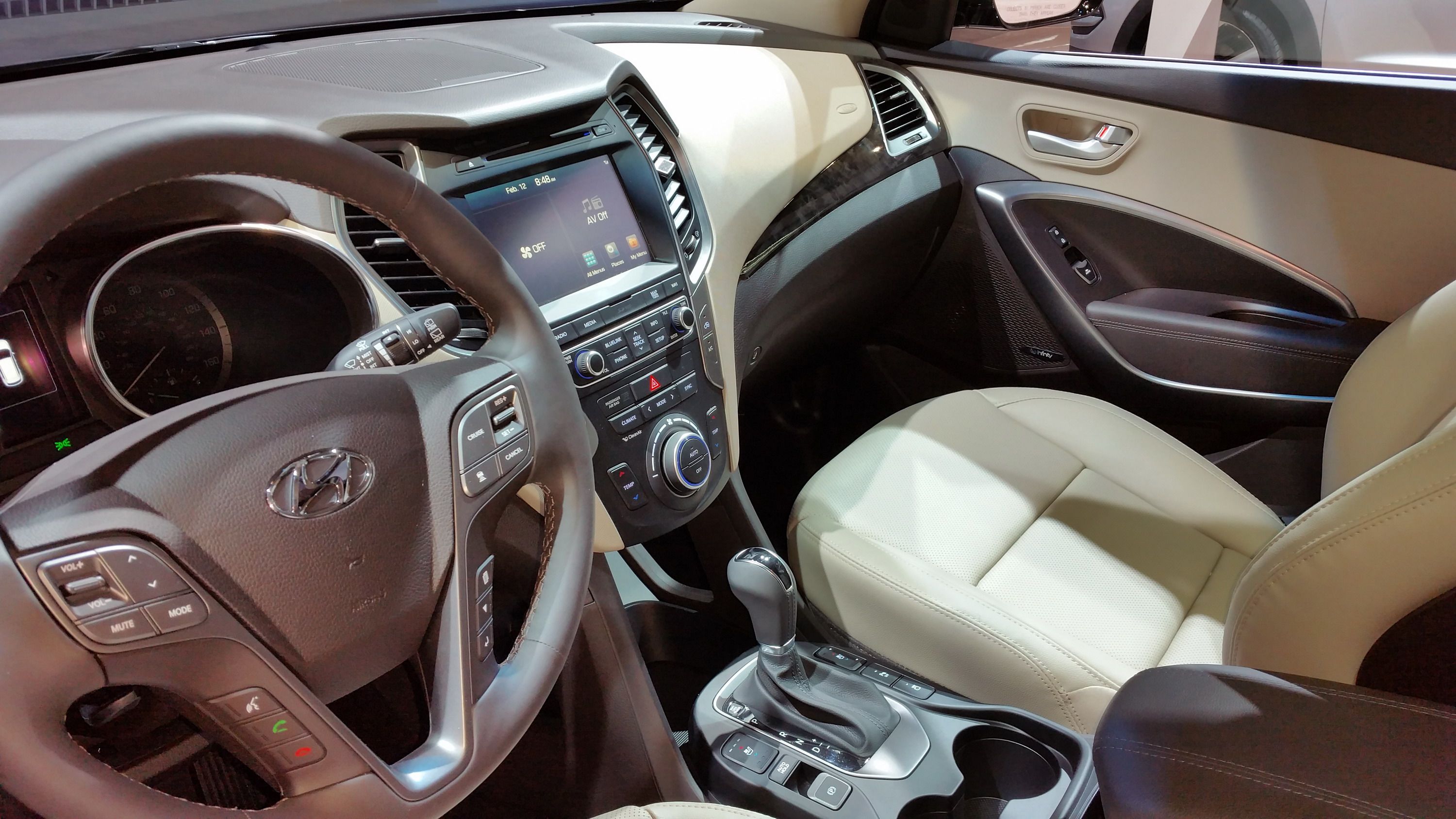
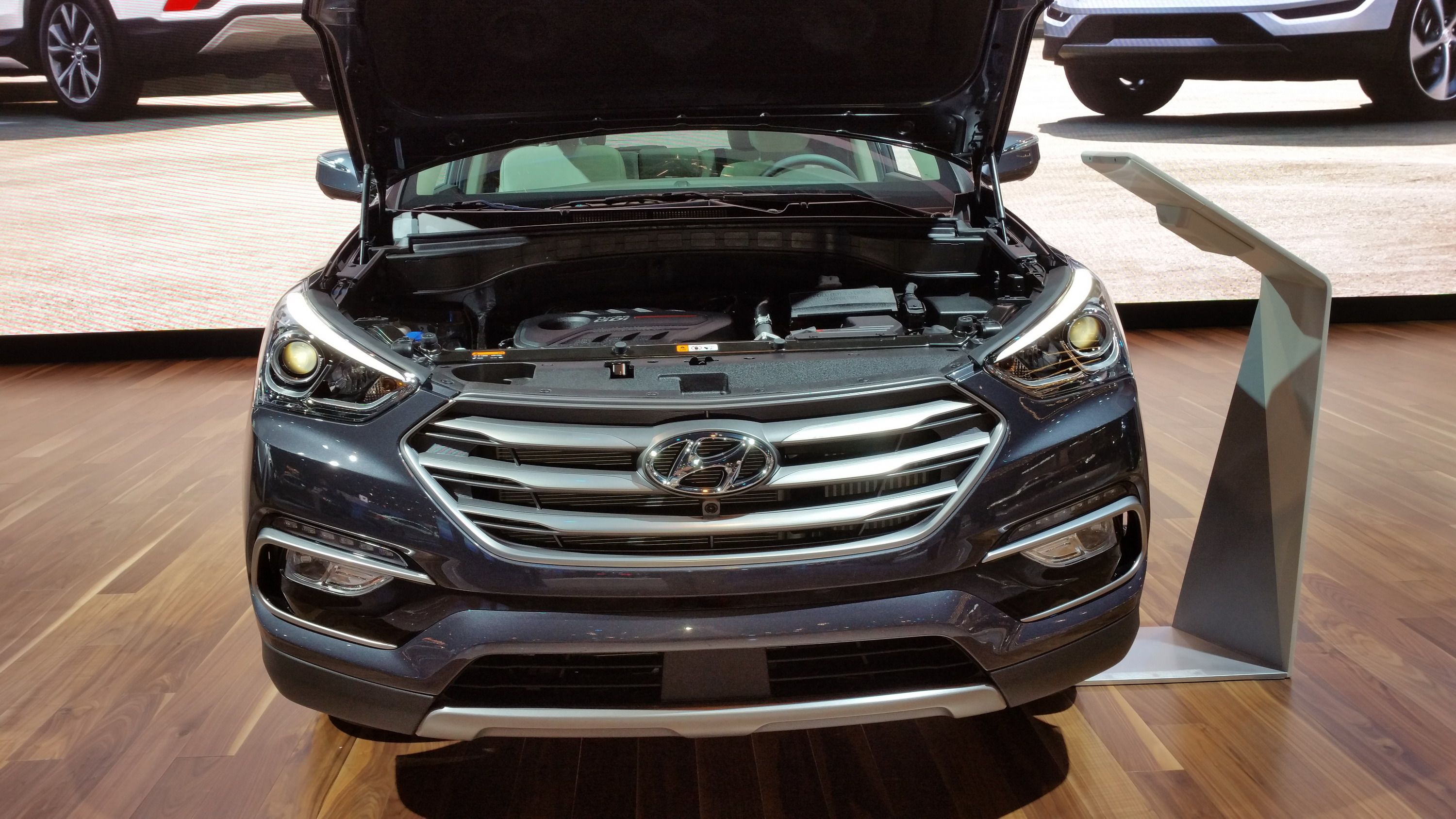
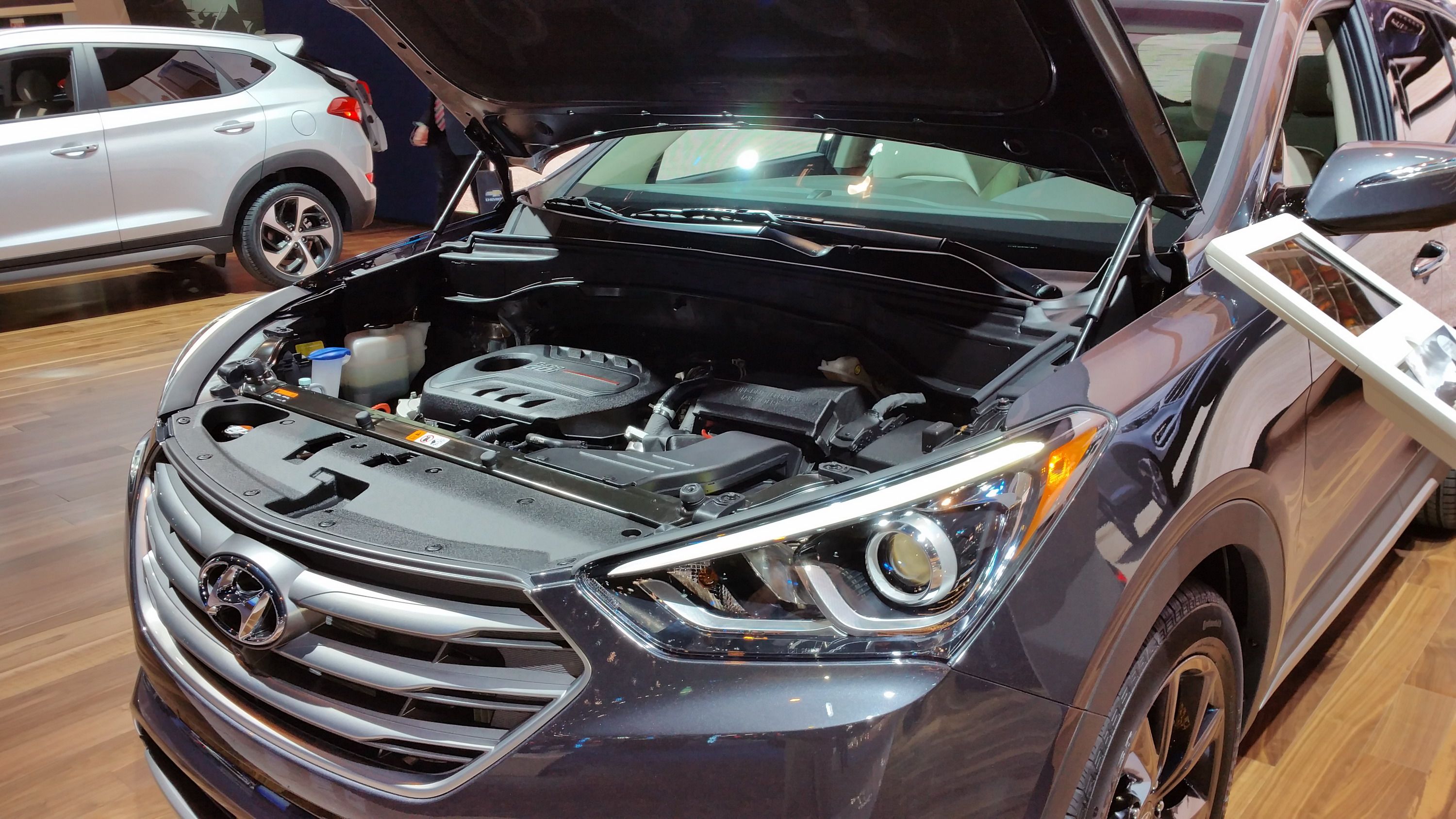
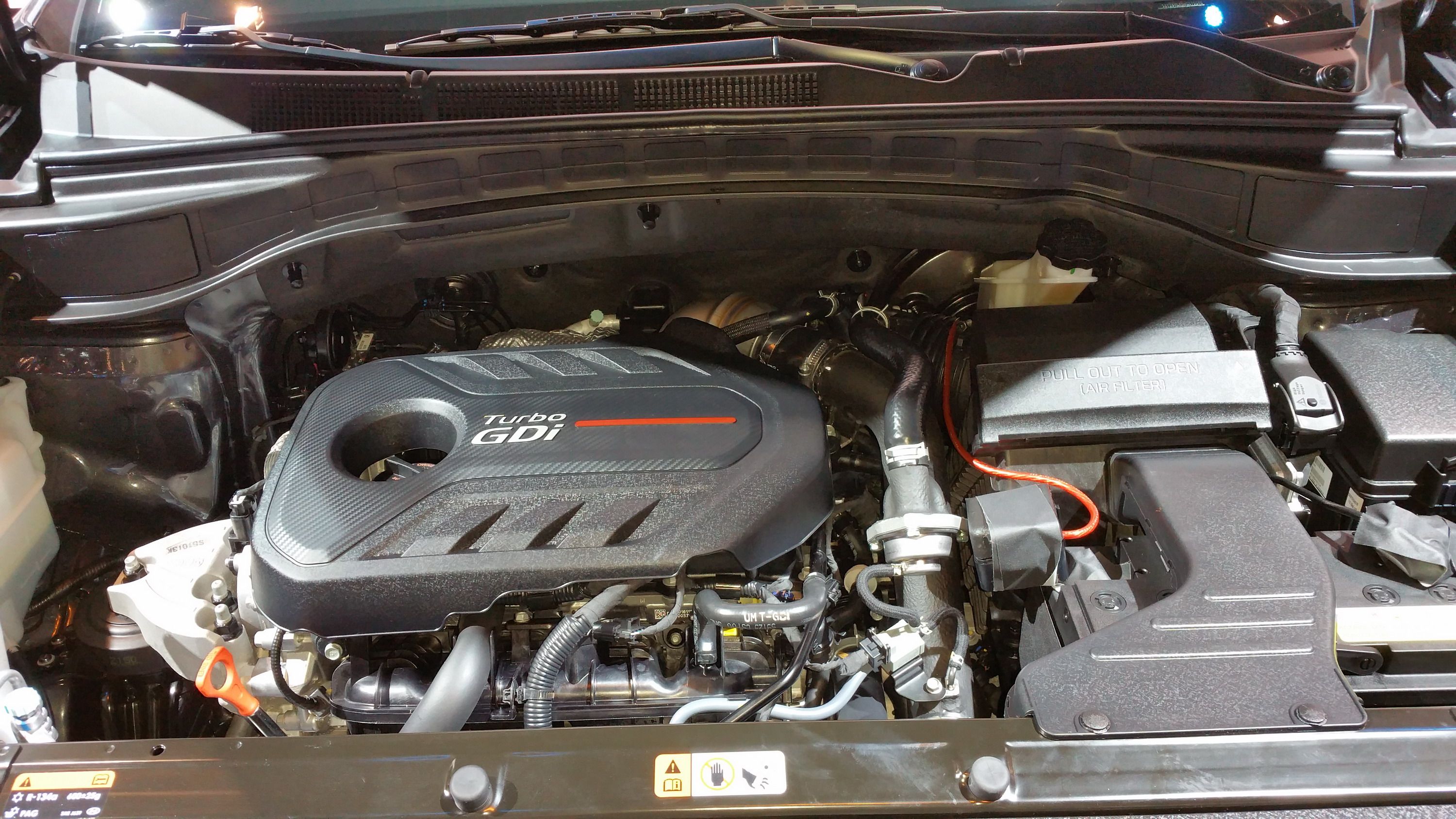
- Make: Array
- Model: 2017 Hyundai Santa Fe
- Engine/Motor: inline-4
- Horsepower: 185
Exterior
The Santa Fe is offered as two individual models – the two-row, five-passenger Santa Fe Sport, and the three-row, seven-passenger Santa Fe. Both bring unique styling, most noticeable up front, with the three-row Santa Fe bearing upright fog lights and five slats in the grille, and the two-row Santa Fe Sport using horizontal fog lights and three slats in the grille.
The 2017 refresh also brings a slight tweak to the rear fascia design, plus new taillights and dual exhaust outlet.
On the sides, you’ll find new rocker panel trim, integrated silver accents, and exterior side-view mirrors with a standard heating function. Wheel designs are new as well, with 17-, 18-, and 19-inch alloys.
The redesigned headlights now get LEDs for the daytime running lights, while the three-row Santa Fe is offered with available LED fog lights. An automatic on/off function for the headlights is standard.
Finally, there are two new hues when it comes to paint options, including Nightfall Blue for the Santa Fe Sport, and Storm Blue for the Santa Fe.
Interior
Inside, Hyundai updated the center stack with new button placement, which complements a full suite of infotainment options.
First up is a standard 5.0-inch color LCD screen for audio control on the Santa Fe Sport. There’s also a new 7.0-inch touchscreen, which comes standard on the three-row Santa Fe and is available for the Sport. An 8.0-inch touchscreen with navigation is also available.
Both the Santa Fe and Santa Fe Sport are compatible with Android Auto, offering smartphone integration for Google Maps, streaming audio, voice-controlled web search, and over 40 different apps. Smartphones running Android 5.0, Lollipop and higher are compatible.
Better tunes comes courtesy of an available Infinity premium sound system, with 12 speakers, plus QuantumLogic Surround sound technology and Clari-Fi Music restoration technology.
Standard features include a remote keyless entry system with alarm, steering-wheel mounted controls for the sound system and cruise control, and Bluetooth hands-free phone integration.
Additional options include a power passenger seat with height adjustment and a panoramic sunroof. The three-row Santa Fe gets an available third-row USB outlet. Step up to leather upholstery and you’ll also get woodgrain trim with a matte finish. Finally the Santa Fe Limited gets new second-row cupholders.
Drivetrain
The Santa Fe Sport is offered with two different engine packages. The first is a 2.4-liter four-cylinder producing 185 horsepower, while the second is a turbocharged 2.0-liter four-cylinder producing 240 horsepower. Both use direct injection and Dual Continuously Variable Valve Timing.
Interestingly, those peak output figures are actually a downgrade over the outgoing model, with the 2.4-liter powerplant down 5 ponies from a previous 190 horsepower, and the 2.0-liter down 24 ponies from a previous 264 horsepower. The tradeoff is a fatter low-end and slightly higher mpg figures, but still, I can’t help but question the “Sport” nomenclature used here.
|
Santa Fe Sport mpg |
city/highway/combined |
|
2.4L FWD |
21/27/24 |
|
2.4L AWD |
20/26/22 |
|
2.0T FWD |
20/28/23 |
|
2.0T AWD |
19/26/22 |
|
2.0T Ultimate FWD |
20/27/23 |
|
2.0T Ultimate AWD |
19/24/21 |
Meanwhile, the three-row Santa Fe marches on with a 3.3-liter Lambda II V-6, which produces 290 horsepower and nets 18 mpg city and 25 mph highway.
A six-speed automatic transmission with Shiftronic technology is standard across the range, and every model is offered with either FWD as standard or AWD as an available option.
Chassis And Handling
Hyundai didn’t do much to the Santa Fe’s chassis and handling package, merely adding a new standard drive mode selector that lets drivers choose between Sport, Eco, or Normal. Hyundai didn’t elaborate too much on what exactly these drive modes alter, but did mention changes to the electric power steering system.
Additionally, AWD models get Active Cornering Control, which transfers torque to the rear and applies the brakes to the inside rear wheel for better rotation. Four-wheel disc brakes are standard across the range.
Safety And Convenience
Per usual for most mid-cycle refreshes these days, the Santa Fe benefits from a range of new safety and convenience features, making for a rather robust list of available and optional technology.
Standard features now include, a rear backup camera, blind-spot monitor, brake assist, hill-start assist, and downhill brake assist. Cold-weather-friendly AWD models also get a standard windshield wiper de-icer.
Optional equipment includes all the latest active and passive safety features, such as adaptive cruise control with start/stop functionality, lane departure warning, an electronic parking brake with auto-hold, forward emergency braking with pedestrian detection, adaptive headlights, and a multi-view camera system for enhanced around-vehicle visibility.
There’s also an available hands-free power liftgate, which doesn’t require any awkward foot shuffling to activate – just stand towards the rear of the vehicle with the key fob and the hatch will automatically open within a few seconds.
Hyundai’s next-generation Blue Link system comes standard on the Santa Fe, and is available on the Santa Fe Sport. Blue Link delivers “a full suite of connected safety and diagnostic features,” such as remote start, remote climate control, stolen vehicle recovery, and remote lock/unlock. On models equipped with navigation, there’s also Blue Link Guidance, which offers Destination Search by Google, plus point of interest web search, both of which make it easier to find where you’re going.
When the new Santa Fe undergoes crash testing, Hyundai says it expects a five-star safety rating from the NHTSA, as well as an IIHS Top Safety Pick+ accolade.
Update 05/18/2016: The 2017 Santa Fe Sport has undergone IIHS crash testing and earned a “Good” rating across the board for moderate frontal overlap, small frontal overlap, side impact, head restraint, and roof strength tests. Furthermore, when the Santa Fe Sport is equipped with the optional automatic emergency braking with pedestrian detection it earns a superior rating – exactly what it needed to be named a Top Safety Pick+ by the IIHS. David Zuby, the Chief Research Officer for IISH, said, “The Santa Fe Sport’s optional front crash prevention system earns a superior rating. The Santa Fe Sport avoided collisions in IIHS track tests at 12 mph and 25 mph. The system also has a forward collision warning component that meets the NHTSA criteria.” So, as of the time of this writing, the Santa Fe Sport is among the safest cars on the road for the 2017 model year.
Prices
The 2017 Hyundai Santa Fe is arriving at dealers now. The two-row Sport is offered in six different trim levels, starting at $25,350, while the three-row Santa Fe is offered in eight different trim levels, starting at $30,800.
|
Santa Fe Sport trim level |
MSRP |
|
2.4L FWD |
$25,350 |
|
2.4L AWD |
$27,100 |
|
2.0T FWD |
$31,700 |
|
2.0T AWD |
$33,450 |
|
2.0T Ultimate FWD |
$36,500 |
|
2.0T Ultimate AWD |
$38,250 |
|
Santa Fe trim level |
MSRP |
|
SE FWD |
$30,800 |
|
SE AWD |
$32,550 |
|
SE FWD Ultimate |
$38,700 |
|
SE AWD Ultimate |
$40,450 |
|
Limited FWD |
$34,950 |
|
Limited AWD |
$36,700 |
|
Limited FWD Ultimate |
$39,400 |
|
Limited AWD Ultimate |
$41,450 |
Competition
Ford Flex
Some might call it a wagon, some might call it a crossover, but either way, this unique-looking blue oval product could definitely steal a few sales from Hyundai. The Flex offers a capacious cabin space, with seating for seven and tons of cargo room. The feature list is also on par with the Santa Fe. Two engines are offered – a standard 3.6-liter V-6, or a more powerful turbocharged 3.5-liter V-6.
Read the full review here.
Nissan Murano
Bringing unique styling and lots of equipment, the Murano is a worthy opponent to the five-passenger Santa Fe Sport. Output comes courtesy of a 260-horsepower, 3.5-liter V-6, while a CVT routes it to the ground. Fuel economy figures are rated at 21 in the city and 28 on the highway. Pricing starts at just above $30,000 for a base model.
Read the full review here.
Conclusion
Regardless of future fuel prices, the SUV/crossover segment is still growing like a weed, and Hyundai did the smart thing to up production for the refreshed Santa Fe. And while some automakers choose to fill the gaps with an ever-expanding lineup, Hyundai is instead limiting its offerings while maintaining a wide variety of trim levels. Between the six different two-row Sport models and eight different three-row models, odds are customers will find something to suit their needs.
Update History
Updated 02/16/2016: We added a series of new images taken during the car's official debut at the 2016 Chicago Auto Show. Click the "Pictures" tab to see them.

